
Prepared by the
Committee on Rules of Practice and Procedure
Judicial Conference of the United States
August 2023
PRELIMINARY DRAFT
Proposed Amendments to the Federal Rules of Appellate,
Bankruptcy, and Civil Procedure
Request for Comments on Amendments to:
Appellate Rules
6 and 39;
Bankruptcy Rules 3002.1 and 8006; Official Forms 410, 410C13-
M1, 410C13-M1R, 410C13-N, 410C13-NR,
410C13-M2, and 410C13-M2R; and
Civil Rules
16, 26, and new Rule 16.1
Written Comments Due By
February 16, 2024

COMMITTEE ON RULES OF PRACTICE AND PROCEDURE
OF THE
JUDICIAL CONFERENCE OF THE UNITED STATES
WASHINGTON, D.C. 20544
JOHN D. BATES
CHAIR
H. THOMAS BYRON III
SECRETARY
CHAIRS OF ADVISORY COMMITTEES
JAY S. BYBEE
APPELLATE RULES
REBECCA B. CONNELLY
BANKRUPTCY RULES
ROBIN L. ROSENBERG
CIVIL RULES
JAMES C. DEVER III
CRIMINAL RULES
PATRICK J. SCHILTZ
EVIDENCE RULES
MEMORANDUM
TO: The Bench, Bar, and Public
FROM: Honorable John D. Bates, Chair
Committee on Rules of Practice and Procedure
DATE: August 15, 2023
RE: Request for Comments on Proposed Amendments to Federal Rules and Forms
____________________________________________________________________________
The Judicial Conference Committee on Rules of Practice and Procedure (Standing
Committee) has approved for publication for public comment the following proposed amendments
to existing rules and forms, as well as one new rule:
• Appellate Rules 6 and 39;
• Bankruptcy Rules 3002.1 and 8006;
• Bankruptcy Official Forms 410, 410C13-M1, 410C13-M1R, 410C13-N, 410C13-
NR, 410C13-M2, and 410C13-M2R; and
• Civil Rules 16, 26, and new Rule 16.1.
The proposals, supporting materials, and instructions on submitting written comments are
posted on the Judiciary’s website at:
https://www.uscourts.gov/rules-policies/proposed-amendments-published-public-comment
Preliminary Draft of Proposed Amendments | August 2023
Page 2 of 157

Memorandum to the Bench, Bar, and Public
Page 2
Opportunity to Submit Written Comments
Comments concerning the proposals must be submitted electronically no later than
February 16, 2024. Please note that comments are part of the official record and publicly
available.
Opportunity to Appear at Public Hearings
On the following dates, the advisory committees will conduct public hearings on the
proposals either virtually or in person:
• Appellate Rules on October 18, 2023, and January 24, 2024;
• Bankruptcy Rules on January 12, 2024, and January 19, 2024; and
• Civil Rules on October 16, 2023, January 16, 2024, and February 6, 2024.
If you wish to appear and present testimony regarding a proposed rule or form, you must
notify the office of Rules Committee Staff at least 30 days before the scheduled hearing by
emailing RulesCommittee_Secretary@ao.uscourts.gov. Hearings are subject to cancellation due
to lack of requests to testify.
At this time, the Standing Committee has only approved the proposals for publication and
comment. After the public comment period closes, all comments will be carefully considered by
the relevant advisory committee as part of its consideration of whether to proceed with a proposal.
Under the Rules Enabling Act, 28 U.S.C. §§ 2072-2077, if any of the published proposals
are later approved, with or without revision, by the relevant advisory committee, the next steps are
approval by the Standing Committee and the Judicial Conference, and then adoption by the
Supreme Court. If adopted by the Court and transmitted to Congress by May 1, 2025, absent
congressional action, the proposals would take effect on December 1, 2025.
If you have questions about the rulemaking process or pending rules amendments, please
contact the Rules Committee Staff at 202-502-1820 or visit https://www.uscourts.gov/rules-
policies.
Preliminary Draft of Proposed Amendments | August 2023
Page 3 of 157

TABLE OF CONTENTS
Page
PART I: FEDERAL RULES OF APPELLATE
PROCEDURE
Excerpt from the Report of the Advisory Committee on
Appellate Rules (May 2023) ............................................................. 6
Rule 6. Appeal in a Bankruptcy Case ............................. 26
Rule 39. Costs ................................................................... 47
PART II: FEDERAL RULES OF BANKRUPTCY
PROCEDURE
Excerpt from the Report of the Advisory Committee on
Bankruptcy Rules (December 2022) ............................................... 54
Excerpt from the Report of the Advisory Committee on
Bankruptcy Rules (May 2023) ........................................................ 56
Rule 3002.1. Notice Relating to Claims Secured by a Security
Interest in the Debtor’s Principal Residence in
a Chapter 13 Case............................................... 61
Rule 8006. Request for Leave to Take a Direct Appeal to a
Court of Appeals After Certification ................. 80
Official Bankruptcy Forms
Form 410. Proof of Claim .................................................... 82
Form 410C13- Motion Under Rule 3002.1(f)(1) to Determine
M1 the Status of the Mortgage Claim ...................... 88
Form 410C13- Response to Motion Under Rule 3002.1(f)(1) to
M1R Determine the Status of the Mortgage Claim ..... 90
Form 410C13-N Trustee’s Notice of Payments Made .................. 93
Form 410C13- Response to Trustee’s Notice of Payments
NR Made ................................................................... 95
Form 410C13- Motion Under Rule 3002.1(g)(4) to Determine
M2 Final Cure and Payment of Mortgage Claim…...98
Preliminary Draft of Proposed Amendments | August 2023
Page 4 of 157

TABLE OF CONTENTS
Page
Form 410C13- Response to Motion to Determine Final Cure
M2R and Payment of Mortgage Claim ..................... 100
PART III: FEDERAL RULES OF CIVIL PROCEDURE
Excerpt from the Report of the Advisory Committee on
Civil Rules (May 2023) ................................................................. 106
Rule 16. Pretrial Conferences; Scheduling; Management ... 120
Rule 16.1. Multidistrict Litigation .......................................... 123
Rule 26. Duty to Disclose; General Provisions Governing
Discovery .............................................................. 137
APPENDIX:
Procedures for Committees on Rules
of Practice and Procedure ............................................................ 142
List of Committee Members ........................................................ 147
Preliminary Draft of Proposed Amendments | August 2023
Page 5 of 157

Excerpt from the May 11, 2023 Report of the Advisory Committee on Appellate Rules
(revised July 14, 2023)
COMMITTEE ON RULES OF PRACTICE AND PROCEDURE
OF THE
JUDICIAL CONFERENCE OF THE UNITED STATES
WASHINGTON, D.C. 20544
JOHN D. BATES
CHAIR
H. THOMAS BYRON III
SECRETARY
CHAIRS OF ADVISORY COMMITTEES
JAY S. BYBEE
APPELLATE RULES
REBECCA B. CONNELLY
BANKRUPTCY RULES
ROBIN L. ROSENBERG
CIVIL RULES
JAMES C. DEVER III
CRIMINAL RULES
PATRICK J. SCHILTZ
EVIDENCE RULES
MEMORANDUM
TO: Hon. John D. Bates, Chair
Committee on Rules of Practice and Procedure
FROM: Judge Jay Bybee, Chair
Advisory Committee on Appellate Rules
RE: Report of the Advisory Committee on Appellate Rules
DATE: May 11, 2023
*
_____________________________________________________________________________
I. Introduction
The Advisory Committee on Appellate Rules met on Wednesday, March 29,
2023, in West Palm Beach, Florida. * * *
* * * * *
*
Revised to incorporate changes that were made by the Committee on Rules of Practice and
Procedure (Standing Committee) at its June 6, 2023 meeting.
Preliminary Draft of Proposed Amendments | August 2023
Page 6 of 157
Excerpt from the May 11, 2023 Report of the Advisory Committee on Appellate Rules
(revised July 14, 2023)
It also seeks publication of two proposed amendments, one to Rule 39, dealing
with costs on appeal, and one to Rule 6, dealing with appeals in bankruptcy cases.
(Part III of this report.)
* * * * *
III. Action Items for Approval for Publication
A. Costs on Appeal (21-AP-D)
Rule 39 governs costs on appeal. Some costs are taxable in the court of appeals,
while others are taxable in the district court. In City of San Antonio v. Hotels.com,
141 S. Ct. 1628 (2021), the Supreme Court held that Rule 39 does not permit a district
court to alter a court of appeals’ allocation of costs, even those costs that are taxed by
the district court. The Court also observed that “the current Rules and the relevant
statutes could specify more clearly the procedure that such a party should follow to
bring their arguments to the court of appeals.” Id. at 1638.
The Advisory Committee seeks publication of proposed amendments to Rule
39. The proposal is designed to accomplish several things:
First, it clarifies the distinction between (1) the court of appeals deciding which
parties must bear the costs and, if appropriate, in what percentages and (2) the court
of appeals, the district court (or the clerk of either) calculating and taxing the dollar
amount of costs upon the proper party or parties. It uses the term “allocated” for the
former and the term “taxed” for the latter. Rule 39(a) established default rules for the
allocation of costs; these default rules can be displaced by party agreement or court
order.
Second, it codifies the holding in Hotels.com, providing that the allocation of
costs by the court of appeals applies to both the costs taxable in the court of appeals
and the costs taxable in the district court.
Third, it responds to the need identified in Hotels.com for a clearer procedure
that a party should follow if it wants to ask the court of appeals to reconsider the
allocation of costs. It does this by providing for a motion for reconsideration of the
allocation. To prevent delay, it provides that the mandate must not be delayed while
awaiting determination of such a motion for reconsideration while making clear that
the court of appeals retains jurisdiction to decide the motion.
Fourth, it makes Rule 39’s structure more parallel. The current Rule lists the
costs taxable in the district court but not the costs taxable in the court of appeals.
The proposed amendment lists the costs taxable in the court of appeals.
The proposal does not, however, deal with one significant issue. Most costs on
appeal are modest. The Advisory Committee learned that some parties do not even
Preliminary Draft of Proposed Amendments | August 2023
Page 7 of 157
Excerpt from the May 11, 2023 Report of the Advisory Committee on Appellate Rules
(revised July 14, 2023)
bother to file bills of costs because the price of lawyer time to do so exceeds the value
of the costs themselves. But one cost on appeal—indeed, the cost involved in
Hotels.com—can be quite significant: the premium paid for a supersedeas bond.
Because of the bond premium, the bill of costs in Hotels.com was for more than $2.3
million.
The Advisory Committee was unable to come up with a good way to make sure
that the judgment winner in the district court is aware of the cost of the supersedeas
bond early enough to ask the court of appeals to reallocate the costs. Allowing a party
to move for reallocation in the court of appeals after the bill of costs is filed in the
district court would mean that both courts are dealing with the same costs issue at
the same time. Creating a long period to seek reallocation in the court of appeals
would mean that the case would be less fresh in the judges’ minds and begin to look
like a wholly separate appeal. Requiring disclosure in the bill of costs filed in the
court of appeals would be odd because those costs are not sought in the court of
appeals. Plus, a party might forego the relatively minor costs taxable in the court of
appeals and care only about costs taxable in the district court. It would be possible to
have the court of appeals tax the costs itself, but that would be a major departure
from the principle, endorsed by the Supreme Court in Hotels.com, that the court
closest to the cost should tax it.
For this reason, the Appellate Rules Committee believes that the easiest and
most obvious time for disclosure is when the bond is before the district court for
approval. It has requested the Civil Rules Committee to consider amending Civil Rule
62 to require that disclosure.
Even without such an amendment to Civil Rule 62, however, the Appellate
Rules Committee believes that the following proposed amendment to Appellate Rule
39 is worthwhile and therefore asks the Standing Committee to publish it for public
comment. The proposal has been revised since the Advisory Committee’s March 2023
meeting in accordance with the suggestions of the style consultants.
Preliminary Draft of Proposed Amendments | August 2023
Page 8 of 157
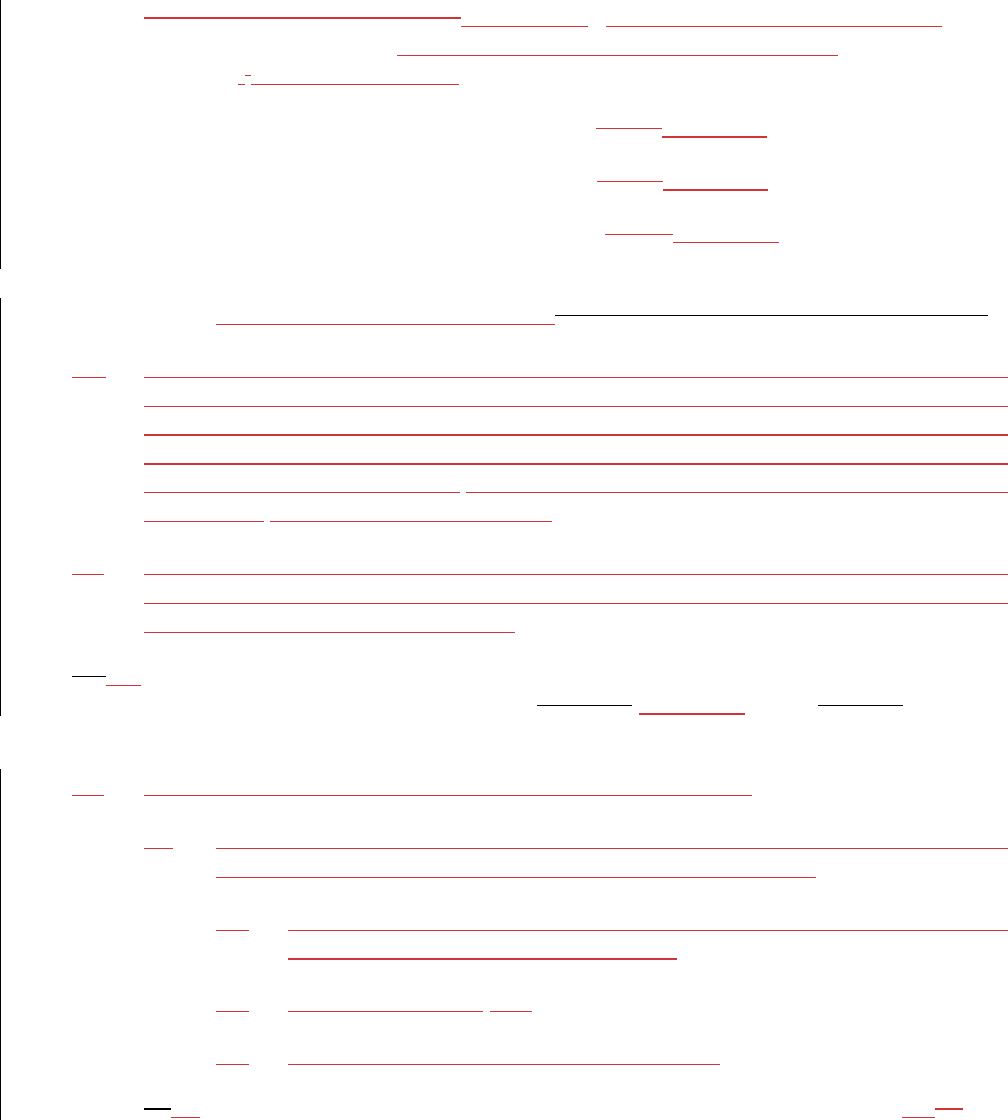
Excerpt from the May 11, 2023 Report of the Advisory Committee on Appellate Rules
(revised July 14, 2023)
Rule 39. Costs 1
(a) Against Whom AssessedAllocating Costs Among the Parties. The 2
following rules apply to allocating costs among the parties unless the law 3
provides, the parties agree, or the court orders otherwise: 4
(1) if an appeal is dismissed, costs are taxed allocated against the appellant; 5
(2) if a judgment is affirmed, costs are taxed allocated against the appellant; 6
(3) if a judgment is reversed, costs are taxed allocated against the appellee; 7
(4) if a judgment is affirmed in part, reversed in part, modified, or vacated, 8
each party bears its own costs costs are taxed only as the court orders. 9
(b) Reconsideration. Once the allocation of costs is established by the entry of 10
judgment, a party may seek reconsideration of that allocation by filing a 11
motion in the court of appeals within 14 days after the entry of judgment. But 12
issuance of the mandate under Rule 41 must not be delayed awaiting a 13
determination of the motion. The court of appeals retains jurisdiction to decide 14
the motion after the mandate issues. 15
(c) Costs Governed by Allocation Determination. The allocation of costs 16
applies both to costs taxable in the court of appeals under (e) and to costs 17
taxable in district court under (f). 18
(b)(d) Costs For and Against the United States. Costs for or against the United 19
States, its agency, or officer will be assessed allocated under Rule 39(a) only if 20
authorized by law. 21
(e) Costs on Appeal Taxable in the Court of Appeals. 22
(1) Costs Taxable. The following costs on appeal are taxable in the court 23
of appeals for the benefit of the party entitled to costs: 24
(A) the production of necessary copies of a brief or appendix, or copies 25
of records authorized by Rule 30(f); 26
(B) the docketing fee; and 27
(C) a filing fee paid in the court of appeals. 28
(c)(2) Costs of Copies. Each court of appeals must, by local rule, setfix the 29
maximum rate for taxing the cost of producing necessary copies of a brief 30
or appendix, or copies of records authorized by Rule 30(f). The rate must 31
not exceed that generally charged for such work in the area where the 32
Preliminary Draft of Proposed Amendments | August 2023
Page 9 of 157

Excerpt from the May 11, 2023 Report of the Advisory Committee on Appellate Rules
(revised July 14, 2023)
clerk’s office is located and should encourage economical methods of 33
copying. 34
(d)(3) Bill of Costs; Objections; Insertion in Mandate. 35
(1)(A) A party who wants costs taxed in the court of appeals must—36
within 14 days after entry of judgment is entered—file with the 37
circuit clerk and serve an itemized and verified bill of those costs. 38
(2)(B) Objections must be filed within 14 days after service of the bill of 39
costs is served, unless the court extends the time. 40
(3)(C) The clerk must prepare and certify an itemized statement of costs 41
for insertion in the mandate, but issuance of the mandate must 42
not be delayed for taxing costs. If the mandate issues before costs 43
are finally determined, the district clerk must—upon the circuit 44
clerk’s request—add the statement of costs, or any amendment of 45
it, to the mandate. 46
(e)(f) Costs on Appeal Taxable in the District Court. The following costs on 47
appeal are taxable in the district court for the benefit of the party entitled to 48
costs under this rule: 49
(1) the preparation and transmission of the record; 50
(2) the reporter’s transcript, if needed to determine the appeal; 51
(3) premiums paid for a bond or other security to preserve rights pending 52
appeal; and 53
(4) the fee for filing the notice of appeal. 54
Committee Note 55
In City of San Antonio v. Hotels.com, 141 S. Ct. 1628 (2021), the Supreme Court 56
held that Rule 39 does not permit a district court to alter a court of appeals’ allocation 57
of the costs listed in subdivision (e) of that Rule. The Court also observed that “the 58
current Rules and the relevant statutes could specify more clearly the procedure that 59
such a party should follow to bring their arguments to the court of appeals.” Id. at 60
1638. The amendment does so. Stylistic changes are also made. 61
Subdivision (a). Both the heading and the body of the Rule are amended to 62
clarify that allocation of the costs among the parties is done by the court of appeals. 63
The court may allow the default rules specified in subdivision (a) to operate based on 64
the judgment, or it may allocate them differently based on the equities of the 65
situation. Subdivision (a) is not concerned with calculating the amounts owed; it is 66
Preliminary Draft of Proposed Amendments | August 2023
Page 10 of 157
Excerpt from the May 11, 2023 Report of the Advisory Committee on Appellate Rules
(revised July 14, 2023)
concerned with who bears those costs, and in what proportion. The amendment also 67
specifies a default for mixed judgments: each party bears its own costs. 68
Subdivision (b). The amendment specifies a procedure for a party to ask the 69
court of appeals to reconsider the allocation of costs established pursuant to 70
subdivision (a). A party may do so by motion in the court of appeals within 14 days 71
after the entry of judgment. The mandate is not stayed pending resolution of this 72
motion, but the court of appeals retains jurisdiction to decide the motion after the 73
mandate issues. 74
Subdivision (c). Codifying the decision in Hotels.com, the amendment also 75
makes clear that the allocation of costs by the court of appeals governs the taxation 76
of costs both in the court of appeals and in the district court. 77
Subdivision (d). The amendment uses the word “allocated” to match 78
subdivision (a). 79
Subdivision (e). The amendment specifies which costs are taxable in the 80
court of appeals and clarifies that the procedure in that subdivision governs the 81
taxation of costs taxable in the court of appeals. The docketing fee, currently $500, is 82
established by the Judicial Conference of the United States pursuant to 28 U.S.C. § 83
1913. The reference to filing fees paid in the court of appeals is not a reference to the 84
$5 fee paid to the district court required by 28 U.S.C. § 1917 for filing a notice of 85
appeal from the district court to the court of appeals. Instead, the reference is to filing 86
fees paid in the court of appeals, such as the fee to file a notice of appeal from a 87
bankruptcy appellate panel. 88
Subdivision (f). The provisions governing costs taxable in the district court 89
are lettered (f) rather than (e). The filing fee referred to in this subdivision is the $5 90
fee required by 28 U.S.C. § 1917 for filing a notice of appeal from the district court to 91
the court of appeals. 92
B. Appeals in Bankruptcy Cases
The Advisory Committee on Bankruptcy Rules has asked the Advisory
Committee on Appellate Rules to consider amendments to Appellate Rule 6 dealing
with appeals in bankruptcy cases. Two different concerns led to this request.
Resetting time to appeal. The first concern involves resetting the time to
appeal in cases where a district court is exercising original jurisdiction in a
bankruptcy case. Federal Rule of Appellate Procedure 4(a)(4)(A) resets the time to
appeal if various post-judgment motions are timely made in the district court. To be
timely in an ordinary civil case, the motion must be made within 28 days of the
judgment. Fed. R. Civ. P. 50(b), 52(b), 59. But in a bankruptcy case, the equivalent
Preliminary Draft of Proposed Amendments | August 2023
Page 11 of 157

Excerpt from the May 11, 2023 Report of the Advisory Committee on Appellate Rules
(revised July 14, 2023)
motions must be made within 14 days of the judgment. Fed. R. Bankr. P. 7052,
9015(c), 9023.
So what happens if a district court itself—rather than a bankruptcy court—
decides a bankruptcy proceeding in the first instance and a post-judgment motion is
made on the 20
th
day after judgment? Does the motion have resetting effect or not?
The Court of Appeals for the First Circuit has said no. In re Lac-Mégantic Train
Derailment Litigation, 999 F.3d 72, 84 (1
st
Cir. 2021). The Bankruptcy Rules and their
time limits apply to a bankruptcy case heard in the district court.
This result, while sensible, is not obvious from the text of the Federal Rules of
Appellate Procedure. That’s because Rule 6 provides:
(a) Appeal From a Judgment, Order, or Decree of a District
Court Exercising Original Jurisdiction in a Bankruptcy Case. An
appeal to a court of appeals from a final judgment, order, or decree of a
district court exercising jurisdiction under 28 U.S.C. §1334 is taken as
any other civil appeal under these rules.
And Rule 4(a)(4)(A) gives resetting effect to motions that are filed “within the time
allowed” by “the Federal Rules of Civil Procedure”—which is 28 days, not 14 days .
The Bankruptcy Rules Committee considered amending Bankruptcy Rules
7052, 9015(c), and 9023 to provide 28 days for the motions if the proceeding is heard
by the district court, but that would undermine the goal of expedition and disrupt the
uniformity of bankruptcy rules. It considered asking the Appellate Rules Committee
to consider amending Appellate Rule 4(a)(4)(A) to acknowledge the different timing
rules, but that would complicate an already quite complicated rule with material that
doesn’t apply to non-bankruptcy cases. It settled on asking the Appellate Rules
Committee to consider amending Appellate Rule 6(a)—the rule that deals with
bankruptcy appeals where the district court exercised original jurisdiction—to
acknowledge the different timing rules.
The Appellate Rules Committee agreed.
*
It proposes to add a sentence to
Appellate Rule 6(a): “But the reference in Rule 4(a)(4)(A) to the time allowed for
motions under certain Federal Rules of Civil Procedure must be read as a reference
to the time allowed for the equivalent motions under the applicable Federal Rule of
Bankruptcy Procedure, which may be shorter than the time allowed under the Civil
Rules.” The Committee Note provides a table of the equivalent motions and the time
allowed under the current version of the applicable Bankruptcy Rule.
*
At the meeting, the Committee agreed in principle and asked the subcommittee to refine
the language and provide a Committee Note for its consideration by email. The subcommittee
did so, and the full Advisory Committee without dissent approved the proposal below.
Preliminary Draft of Proposed Amendments | August 2023
Page 12 of 157
Excerpt from the May 11, 2023 Report of the Advisory Committee on Appellate Rules
(revised July 14, 2023)
Direct appeals. The second concern involves direct appeals in bankruptcy
cases. Appeals in bankruptcy are governed by 28 U.S.C. § 158. The default rule for
appeals from an order of the bankruptcy court is that such appeals go either to the
district court for the district where the bankruptcy court is located or (in the circuits
that have established a bankruptcy appellate panel (BAP)) to the BAP for that circuit.
Under § 158, the losing party then has a further appeal as of right to the court of
appeals from a final judgment of the district court or BAP.
The bankruptcy appeal process thus creates a redundancy whenever an appeal
is taken to the court of appeals under § 158(d)(1), and the two-tiered procedure can
be quite time-consuming. That can be problematic in the bankruptcy context, where
quick resolution of the parties’ disputes is sometimes critical.
In response to these concerns, as part of the Bankruptcy Abuse Prevention and
Consumer Protection Act of 2005 (BAPCPA), Congress amended § 158(d) to provide
that, in certain circumstances, appeals may be taken directly from orders of the
bankruptcy court to the courts of appeals, bypassing the intervening appeal to the
district court or BAP. To do so, Congress added § 158(d)(2), which provides:
(A) The appropriate court of appeals shall have jurisdiction of appeals
described in the first sentence of subsection (a) if the bankruptcy court,
the district court, or the bankruptcy appellate panel involved, acting on
its own motion or on the request of a party to the judgment, order, or
decree described in such first sentence, or all the appellants and
appellees (if any) acting jointly, certify that—
(i) the judgment, order, or decree involves a question of law as
to which there is no controlling decision of the court of
appeals for the circuit or of the Supreme Court of the United
States, or involves a matter of public importance;
(ii) the judgment, order, or decree involves a question of law
requiring resolution of conflicting decisions; or
(iii) an immediate appeal from the judgment, order, or decree
may materially advance the progress of the case or
proceeding in which the appeal is taken;
and if the court of appeals authorizes the direct appeal of the judgment,
order, or decree.
(B) If the bankruptcy court, the district court, or the bankruptcy appellate
panel—
Preliminary Draft of Proposed Amendments | August 2023
Page 13 of 157
Excerpt from the May 11, 2023 Report of the Advisory Committee on Appellate Rules
(revised July 14, 2023)
(i) on its own motion or on the request of a party, determines that a
circumstance specified in clause (i), (ii), or (iii) of subparagraph
(A) exists; or
(ii) receives a request made by a majority of the appellants and a
majority of appellees (if any) to make the certification described
in subparagraph (A);
then the bankruptcy court, the district court, or the bankruptcy
appellate panel shall make the certification described in subparagraph
(A).
(C) The parties may supplement the certification with a short statement of
the basis for the certification.
(D) An appeal under this paragraph does not stay any proceeding of the
bankruptcy court, the district court, or the bankruptcy appellate panel
from which the appeal is taken, unless the respective bankruptcy court,
district court, or bankruptcy appellate panel, or the court of appeals in
which the appeal is pending, issues a stay of such proceeding pending
the appeal.
(E) Any request under subparagraph (B) for certification shall be made not
later than 60 days after the entry of the judgment, order, or decree.
28 U.S.C. § 158(d)(2).
Under this statute, any order of the bankruptcy court—final or interlocutory—
can be certified for direct appeal to the court of appeals if it meets the remaining
statutory requirements. Those requirements are similar to, but looser than, the
standards for certification under 28 U.S.C. § 1292(b), which permits courts of appeals
to hear appeals of interlocutory orders of the district courts in certain circumstances.
Moreover, the certification can be made by the bankruptcy court, district court, BAP,
or the parties. Under the Bankruptcy Rules, even if a bankruptcy court order has
been certified for direct appeal to the court of appeals, the appellant must still file a
notice of appeal to the district court or BAP in order to render the certification
effective. As with § 1292(b), the court of appeals must also authorize the direct appeal.
Under this structure, a court of appeals’ decision to authorize a direct appeal
does not determine whether an appeal will go forward, but instead in what court the
appeal will be heard. The party asking that the appeal from the bankruptcy court be
heard directly in the court of appeals might be an appellee rather than an appellant.
Accordingly, the Bankruptcy Rules Committee seeks a clarifying amendment to
Bankruptcy Rule 8006(g) providing that any party to the appeal may file a request
that the court of appeals authorize a direct appeal:
Preliminary Draft of Proposed Amendments | August 2023
Page 14 of 157

Excerpt from the May 11, 2023 Report of the Advisory Committee on Appellate Rules
(revised July 14, 2023)
(g) Request After Certification for a Court of Appeals To
Authorize a Direct Appeal.
Within 30 days after the certification has become effective under
(a), any party to the appeal may ask the court of appeals to authorize a
direct appeal by filing a petition with the circuit clerk in accordance with
Fed. R. App. P. 6(c).
Current Appellate Rule 6(c), which governs direct appeals, largely relies on
Rule 5, which governs appeals by permission. But the proposed amendment to the
Bankruptcy Rules revealed that Appellate Rule 5 is not a good fit for direct appeals
in bankruptcy cases. That’s because Rule 5 was designed for the situation in which
the court of appeals is deciding whether to allow an appeal at all. But in the direct
appeal context, that’s not the question. Instead, in the direct appeal context, there is
an appeal; the question is which court is going to hear that appeal.
1
More generally, experience with direct appeals shows considerable confusion
in applying the Appellate Rules. This is primarily due to the manner in which Rule
6(c) cross-references Rule 5 and to its failure to take into account that an appeal of
the bankruptcy court order in question is already proceeding in the district court or
BAP, which results in uncertainty about precisely what steps are necessary to perfect
an appeal after the court of appeals authorizes a direct appeal.
For these reasons, the Appellate Rules Committee proposes to overhaul Rule
6(c) and make it largely self-contained. Parties will not need to refer to Rule 5 unless
expressly referred to a specific provision of Rule 5 by Rule 6(c) itself. Rule 6(c) makes
Rule 5 inapplicable except to the extent provided for in other parts of Rule 6(c).
The proposed amendments also spell out in more detail how parties should
handle initial procedural steps in the court of appeals once authorization for a direct
appeal is granted, taking into account that an appeal from the same order will already
be pending in the district court or BAP. The proposed Rule 6(c)(2) permits any party
to the appeal to ask the court of appeals to authorize a direct appeal. It also adds
provisions governing contents of the petition, answer or cross-petition, oral argument,
form of papers, number of copies, and length limits. It also makes clear that no notice
of appeal to the court of appeals needs to be filed, and provides for calculating time,
notification of the order authorizing a direct appeal, and payment of fees. It adds a
provision governing stays pending appeal, makes clear that steps already taken in
1
A caveat: 28 U.S.C. § 158(a)(3) allows appeals from a bankruptcy court to a district court
(or BAP) of otherwise unappealable interlocutory orders with leave of court. Authorization of
a direct appeal under § 158(d)(2) subsumes leave to appeal. Fed. R. Bankr. P. 8004(e). (“If
leave to appeal an interlocutory order or decree is required under 28 U.S.C. § 158(a)(3), an
authorization of a direct appeal by the court of appeals under 28 U.S.C. § 158(d)(2) satisfies
the requirement.”).
Preliminary Draft of Proposed Amendments | August 2023
Page 15 of 157

Excerpt from the May 11, 2023 Report of the Advisory Committee on Appellate Rules
(revised July 14, 2023)
pursuing the appeal need not be repeated, and provides for making the record
available to the circuit clerk. It requires all parties, not just the appellant or applicant
for direct appeal, to file a representation statement. Additional changes in language
are made to better match the relevant statutes.
None of these are intended to make major changes to existing procedures but
to clarify those procedures. The proposal has been revised since the Advisory
Committee’s March 2023 meeting in accordance with the suggestions of the style
consultants.
Rule 6. Appeal in a Bankruptcy Case or Proceeding 1
(a) Appeal From a Judgment, Order, or Decree of a District Court 2
Exercising Original Jurisdiction in a Bankruptcy Case or Proceeding. 3
An appeal to a court of appeals from a final judgment, order, or decree of a 4
district court exercising original jurisdiction in a bankruptcy case or 5
proceeding under 28 U.S.C. §1334 is taken as any other civil appeal under 6
these rules. But the reference in Rule 4(a)(4)(A) to the time allowed for motions 7
under certain Federal Rules of Civil Procedure must be read as a reference to 8
the time allowed for the equivalent motions under the applicable Federal Rule
*
9
of Bankruptcy Procedure, which may be shorter than the time allowed under 10
the Civil Rules. 11
(b) Appeal From a Judgment, Order, or Decree of a District Court or 12
Bankruptcy Appellate Panel Exercising Appellate Jurisdiction in a 13
Bankruptcy Case or Proceeding. 14
(1) Applicability of Other Rules. These rules apply to an appeal to a 15
court of appeals under 28 U.S.C. §158(d)(1) from a final judgment, order, 16
or decree of a district court or bankruptcy appellate panel exercising 17
appellate jurisdiction in a bankruptcy case or proceeding under 28 18
U.S.C. §158(a) or (b), but with these qualifications: 19
(A) Rules 4(a)(4), 4(b), 9, 10, 11, 12(c), 13–20, 22–23, and 24(b) do not 20
apply; 21
(B) the reference in Rule 3(c) to “Forms 1A and 1B in the Appendix of 22
Forms” must be read as a reference to Form 5; 23
(C) when the appeal is from a bankruptcy appellate panel, “district 24
court,” as used in any applicable rule, means “bankruptcy 25
appellate panel”; and 26
*
“Rule” was changed to “Rules” by the Standing Committee at its June 6, 2023 meeting.
Preliminary Draft of Proposed Amendments | August 2023
Page 16 of 157

Excerpt from the May 11, 2023 Report of the Advisory Committee on Appellate Rules
(revised July 14, 2023)
(D) in Rule 12.1, "district court" includes a bankruptcy court or 27
bankruptcy appellate panel. 28
(2) Additional Rules. In addition to the rules made applicable by Rule 29
6(b)(1), the following rules apply: 30
(A) Motion for Rehearing. 31
(i) If a timely motion for rehearing under Bankruptcy Rule 32
8022 is filed, the time to appeal for all parties runs from 33
the entry of the order disposing of the motion. A notice of 34
appeal filed after the district court or bankruptcy appellate 35
panel announces or enters a judgment, order, or decree—36
but before disposition of the motion for rehearing—37
becomes effective when the order disposing of the motion 38
for rehearing is entered. 39
(ii) If a party intends to challenge the order disposing of the 40
motion—or the alteration or amendment of a judgment, 41
order, or decree upon the motion—then the party, in 42
compliance accordance with Rules 3(c) and 6(b)(1)(B), must 43
file a notice of appeal or amended notice of appeal. The 44
notice or amended notice must be filed within the time 45
prescribed by Rule 4—excluding Rules 4(a)(4) and 4(b)—46
measured from the entry of the order disposing of the 47
motion. 48
(iii) No additional fee is required to file an amended notice. 49
(B) The record on appeal. 50
(i) Within 14 days after filing the notice of appeal, the 51
appellant must file with the clerk possessing the record 52
assembled in accordance with Bankruptcy Rule 8009—and 53
serve on the appellee—a statement of the issues to be 54
presented on appeal and a designation of the record to be 55
certified and made available to the circuit clerk. 56
(ii) An appellee who believes that other parts of the record are 57
necessary must, within 14 days after being served with the 58
appellant's designation, file with the clerk and serve on the 59
appellant a designation of additional parts to be included. 60
(iii) The record on appeal consists of: 61
• the redesignated record as provided above; 62
Preliminary Draft of Proposed Amendments | August 2023
Page 17 of 157

Excerpt from the May 11, 2023 Report of the Advisory Committee on Appellate Rules
(revised July 14, 2023)
• the proceedings in the district court or bankruptcy 63
appellate panel; and 64
• a certified copy of the docket entries prepared by the 65
clerk under Rule 3(d). 66
(C) Making the Record Available. 67
(i) When the record is complete, the district clerk or 68
bankruptcy-appellate-panel clerk must number the 69
documents constituting the record and promptly make it 70
available to the circuit clerk. If the clerk makes the record 71
available in paper form, the clerk will not send documents 72
of unusual bulk or weight, physical exhibits other than 73
documents, or other parts of the record designated for 74
omission by local rule of the court of appeals, unless 75
directed to do so by a party or the circuit clerk. If unusually 76
bulky or heavy exhibits are to be made available in paper 77
form, a party must arrange with the clerks in advance for 78
their transportation and receipt. 79
(ii) All parties must do whatever else is necessary to enable the 80
clerk to assemble the record and make it available. When 81
the record is made available in paper form, the court of 82
appeals may provide by rule or order that a certified copy 83
of the docket entries be made available in place of the 84
redesignated record. But at any time during the appeal’s 85
pendency, any party may request at any time during the 86
pendency of the appeal that the redesignated record be 87
made available. 88
(D) Filing the Record. When the district clerk or bankruptcy-89
appellate-panel clerk has made the record available, the circuit 90
clerk must note that fact on the docket. The date as noted on the 91
docket serves as the filing date of the record. The circuit clerk 92
must immediately notify all parties of that the filing date. 93
(c) Direct Appeal Review from a Judgment, Order, or Decree of a 94
Bankruptcy Court by Permission Authorization Under 28 U.S.C. § 95
158(d)(2). 96
(1) Applicability of Other Rules. These rules apply to a direct appeal 97
from a judgment, order, or decree of a bankruptcy court by permission 98
authorization under 28 U.S.C. § 158(d)(2), but with these qualifications: 99
Preliminary Draft of Proposed Amendments | August 2023
Page 18 of 157

Excerpt from the May 11, 2023 Report of the Advisory Committee on Appellate Rules
(revised July 14, 2023)
(A) Rules 3–4, 5(a)(3) (except as provided in this subdivision (c)), 6(a), 100
6(b), 8(a), 8(c), 9–12, 13–20, 22–23, and 24(b) do not apply; and 101
(B) as used in any applicable rule, ‘‘district court’’ or ‘‘district clerk’’ 102
includes—to the extent appropriate—a bankruptcy court or 103
bankruptcy appellate panel or its clerk; and 104
(C) the reference to “Rules 11 and 12(c)” in Rule 5(d)(3) must be read 105
as a reference to Rules 6(c)(2)(B) and (C). 106
(2) Additional Rules. In addition to the rules made applicable by (c)(1), 107
the following rules apply: 108
(A) Petition to Authorize a Direct Appeal. Within 30 days after a 109
certification of a bankruptcy court’s order for direct appeal to the 110
court of appeals under 28 U.S.C. § 158(d)(2) becomes effective 111
under Bankruptcy Rule 8006(a), any party to the appeal may ask 112
the court of appeals to authorize a direct appeal by filing a 113
petition with the circuit clerk under Bankruptcy Rule 8006(g). 114
(B) Contents of the Petition. The petition must include the 115
material required by Rule 5(b)(1) and an attached copy of: 116
(i) the certification; and 117
(ii) the notice of appeal of the bankruptcy court’s judgment, order, 118
or decree filed under Bankruptcy Rule 8003 or 8004. 119
(C) Answer or Cross-Petition; Oral Argument. Rule 5(b)(2) 120
governs an answer or cross-petition. Rule 5(b)(3) governs oral 121
argument. 122
(D) Form of Papers; Number of Copies; Length Limits. Rule 123
5(c) governs the required form, number of copies to be filed, and 124
length limits applicable to the petition and any answer or cross-125
petition. 126
(E) Notice of Appeal; Calculating Time. A notice of appeal to the 127
court of appeals need not be filed. The date when the order 128
authorizing the direct appeal is entered serves as the date of the 129
notice of appeal for calculating time under these rules. 130
(F) Notification of the Order Authorizing Direct Appeal; Fees; 131
Docketing the Appeal. 132
Preliminary Draft of Proposed Amendments | August 2023
Page 19 of 157

Excerpt from the May 11, 2023 Report of the Advisory Committee on Appellate Rules
(revised July 14, 2023)
(i) When the court of appeals enters the order authorizing the 133
direct appeal, the circuit clerk must notify the bankruptcy 134
clerk and the district court clerk or bankruptcy-appellate-135
panel clerk of the entry. 136
(ii) Within 14 days after the order authorizing the direct 137
appeal is entered, the appellant must pay the bankruptcy 138
clerk any unpaid required fee, including: 139
the fee required for the appeal to the district court 140
or bankruptcy appellate panel; and 141
the difference between the fee for an appeal to the 142
district court or bankruptcy appellate panel and the 143
fee required for an appeal to the court of appeals. 144
(iii) The bankruptcy clerk must notify the circuit clerk once the 145
appellant has paid all required fees. Upon receiving the 146
notice, the circuit clerk must enter the direct appeal on the 147
docket. 148
(G) Stay Pending Appeal. Bankruptcy Rule 8007 applies to any 149
stay pending appeal. 150
(A)(H) The Record on Appeal. Bankruptcy Rule 8009 governs the 151
record on appeal. If a party has already filed a document or 152
completed a step required to assemble the record for the appeal 153
to the district court or bankruptcy appellate panel, the party need 154
not repeat that filing or step. 155
(B)(I) Making the Record Available. Bankruptcy Rule 8010 governs 156
completing the record and making it available. When the court of 157
appeals enters the order authorizing the direct appeal, the 158
bankruptcy clerk must make the record available to the circuit 159
clerk. 160
(C) Stays Pending Appeal. Bankruptcy Rule 8007 applies to stays 161
pending appeal. 162
163
(D)(J) Duties of the Circuit Clerk. When the bankruptcy clerk has 164
made the record available, the circuit clerk must note that fact on 165
the docket. The date as noted on the docket serves as the filing 166
date of the record. The circuit clerk must immediately notify all 167
parties of that the filing date. 168
Preliminary Draft of Proposed Amendments | August 2023
Page 20 of 157

Excerpt from the May 11, 2023 Report of the Advisory Committee on Appellate Rules
(revised July 14, 2023)
(E)(K) Filing a Representation Statement. Unless the court of 169
appeals designates another time, within 14 days after entry of the 170
order granting permission to appeal authorizing the direct appeal 171
is entered, the attorney for each party to the appeal the attorney 172
who sought permission must file a statement with the circuit 173
clerk naming the parties that the attorney represents on appeal. 174
Committee Note 175
Subdivision (a). Minor stylistic and clarifying changes are made to 176
subdivision (a). In addition, subdivision (a) is amended to clarify that, when a district 177
court is exercising original jurisdiction in a bankruptcy case or proceeding under 28 178
U.S.C. § 1334, the time in which to file post-judgment motions that can reset the time 179
to appeal under Rule 4(a)(4)(A) is controlled by the Federal Rules of Bankruptcy 180
Procedure, rather than the Federal Rules of Civil Procedure. 181
The Bankruptcy Rules partially incorporate the relevant Civil Rules but in 182
some instances shorten the deadlines for motions set out in the Civil Rules. See Fed. 183
R. Bankr. P. 9015(c) (any renewed motion for judgment under Civil Rule 50(b) must 184
be filed within 14 days of entry of judgment); Fed. R. Bankr. P. 7052 (any motion to 185
amend or make additional findings under Civil Rule 52(b) must be filed within 14 186
days of entry of judgment); Fed. R. Bankr. P. 9023 (any motion to alter or amend the 187
judgment or for a new trial under Civil Rule 59 must be filed within 14 days of entry 188
of judgment). 189
Motions for attorney’s fees in bankruptcy cases or proceedings are governed by 190
Bankruptcy Rule 7054(b)(2)(A), which incorporates without change the 14-day 191
deadline set in Civil Rule 54(d)(2)(B). Under Appellate Rule 4(a)(4)(A)(iii), such a 192
motion resets the time to appeal only if the district court so orders pursuant to Civil 193
Rule 58(e), which is made applicable to bankruptcy cases and proceedings by 194
Bankruptcy Rule 7058. 195
Motions for relief under Civil Rule 60 in bankruptcy cases or proceedings are 196
governed by Bankruptcy Rule 9024. Appellate Rule 4(a)(4)(A)(vi) provides that a 197
motion for relief under Civil Rule 60 resets the time to appeal only if the motion is 198
made within the time allowed for filing a motion under Civil Rule 59. In a bankruptcy 199
case or proceeding, motions under Civil Rule 59 are governed by Bankruptcy Rule 200
9023, which, as noted above, requires such motions to be filed within 14 days of entry 201
of judgment. 202
Civil Rule Bankruptcy Rule Time Under Bankruptcy Rule
50(b) 9015(c) 14 days
52(b) 7052 14 days
59 9023 14 days
54(d)(2)(B) 7054(b)(2)(A) 14 days
Preliminary Draft of Proposed Amendments | August 2023
Page 21 of 157

Excerpt from the May 11, 2023 Report of the Advisory Committee on Appellate Rules
(revised July 14, 2023)
60 9024 14 days
Of course, the Bankruptcy Rules may be amended in the future. If that 203
happens, the time allowed for the equivalent motions under the applicable 204
Bankruptcy Rule may change. 205
Subdivision (b). Minor stylistic and clarifying changes are made to the 206
header of subdivision (b) and to subdivision (b)(1). Subdivision (b)(1)(C) is amended 207
to correct the omission of the word “bankruptcy” from the phrase “bankruptcy 208
appellate panel.” Stylistic changes are made to subdivision (b)(2)(D).
*
209
Subdivision (c). Subdivision (c) was added to Rule 6 in 2014 to set out 210
procedures governing discretionary direct appeals from orders, judgments, or decrees 211
of the bankruptcy court to the court of appeals under 28 U.S.C. § 158(d)(2). 212
Typically, an appeal from an order, judgment, or decree of a bankruptcy court 213
may be taken either to the district court for the relevant district or, in circuits that 214
have established bankruptcy appellate panels, to the bankruptcy appellate panel for 215
that circuit. 28 U.S.C. § 158(a). Final orders of the district court or bankruptcy 216
appellate panel resolving appeals under § 158(a) are then appealable as of right to 217
the court of appeals under § 158(d)(1). 218
That two-step appeals process can be redundant and time-consuming and 219
could in some circumstances potentially jeopardize the value of a bankruptcy estate 220
by impeding quick resolution of disputes over disposition of estate assets. In the 221
Bankruptcy Abuse Prevention and Consumer Protection Act of 2005, Congress 222
enacted 28 U.S.C. § 158(d)(2) to provide that, in certain circumstances, appeals may 223
be taken directly from orders of the bankruptcy court to the courts of appeals, 224
bypassing the intervening appeal to the district court or bankruptcy appellate panel. 225
Specifically, § 158(d)(2) grants the court of appeals jurisdiction of appeals from 226
any order, judgment, or decree of the bankruptcy court if (a) the bankruptcy court, 227
the district court, the bankruptcy appellate panel, or all parties to the appeal certify 228
that (1) “the judgment, order, or decree involves a question of law as to which there 229
is no controlling decision of the court of appeals for the circuit or of the Supreme Court 230
of the United States, or involves a matter of public importance”; (2) “the judgment, 231
order, or decree involves a question of law requiring resolution of conflicting 232
decisions”; or (3) “an immediate appeal from the judgment, order, or decree may 233
materially advance the progress of the case or proceeding in which the appeal is 234
taken” and (b) “the court of appeals authorizes the direct appeal of the judgment, 235
order, or decree.” 28 U.S.C. § 158(d)(2). 236
*
The Standing Committee removed the “(D)” from the citation for the subsection reference at its June 6,
2023 meeting.
Preliminary Draft of Proposed Amendments | August 2023
Page 22 of 157
Excerpt from the May 11, 2023 Report of the Advisory Committee on Appellate Rules
(revised July 14, 2023)
Bankruptcy Rule 8006 governs the procedures for certification of a bankruptcy 237
court order for direct appeal to the court of appeals. Among other things, Rule 8006 238
provides that, to become effective, the certification must be filed in the appropriate 239
court, the appellant must file a notice of appeal of the bankruptcy court order to the 240
district court or bankruptcy appellate panel, and the notice of appeal must become 241
effective. Fed. R. Bankr. P. 8006(a). Once the certification becomes effective under 242
Rule 8006(a), a petition seeking authorization of the direct appeal must be filed with 243
the court of appeals within 30 days. Id. 8006(g). 244
Rule 6(c) governs the procedures applicable to a petition for authorization of a 245
direct appeal and, if the court of appeals grants the petition, the initial procedural 246
steps required to prosecute the direct appeal in the court of appeals. 247
As promulgated in 2014, Rule 6(c) incorporated by reference most of Rule 5, 248
which governs petitions for permission to appeal to the court of appeals from 249
otherwise non-appealable district court orders. It has become evident over time, 250
however, that Rule 5 is not a perfect fit for direct appeals of bankruptcy court orders 251
to the courts of appeals. The primary difference is that Rule 5 governs discretionary 252
appeals from district court orders that are otherwise non-appealable, and an order 253
granting a petition for permission to appeal under Rule 5 thus initiates an appeal 254
that otherwise would not occur. By contrast, an order granting a petition to authorize 255
a direct appeal under Rule 6(c) means that an appeal that has already been filed and 256
is pending in the district court or bankruptcy appellate panel will instead be heard 257
in the court of appeals. As a result, it is not always clear precisely how to apply the 258
provisions of Rule 5 to a Rule 6(c) direct appeal. 259
The new amendments to Rule 6(c) are intended to address that problem by 260
making Rule 6(c) self-contained. Thus, Rule 6(c)(1) is amended to provide that Rule 5 261
is not applicable to Rule 6(c) direct appeals except as specified in Rule 6(c) itself. Rule 262
6(c)(2) is also amended to include the substance of applicable provisions of Rule 5, 263
modified to apply more clearly to Rule 6(c) direct appeals. In addition, stylistic and 264
clarifying amendments are made to conform to other provisions of the Appellate Rules 265
and Bankruptcy Rules and to ensure that all the procedures governing direct appeals 266
of bankruptcy court orders are as clear as possible to both courts and practitioners. 267
Subdivision (c)—Title. The title of subdivision (c) is amended to change 268
“Direct Review” to “Direct Appeal” and “Permission” to “Authorization,” to be 269
consistent with the language of 28 U.S.C. § 158(d)(2). In addition, the language “from 270
a Judgment, Order, or Decree of a Bankruptcy Court” is added for clarity and to be 271
consistent with other subdivisions of Rule 6. 272
Subdivision (c)(1). The language of the first sentence is amended to be 273
consistent with the title of subdivision (c). In addition, the list of rules in subdivision 274
(c)(1)(A) that are inapplicable to direct appeals is modified to include Rule 5, except 275
as provided in subdivision (c) itself. Subdivision (c)(1)(C), which modified certain 276
Preliminary Draft of Proposed Amendments | August 2023
Page 23 of 157
Excerpt from the May 11, 2023 Report of the Advisory Committee on Appellate Rules
(revised July 14, 2023)
language in Rule 5 in the context of direct appeals, is therefore deleted. As set out in 277
more detail below, the provisions of Rule 5 that are applicable to direct appeals have 278
been added, with appropriate modifications to take account of the direct appeal 279
context, as new provisions in subdivision (c)(2). 280
Subdivision (c)(2). The language “to the rules made applicable by (c)(1)” is 281
added to the first sentence for consistency with other subdivisions of Rule 6. 282
Subdivision (c)(2)(A). Subdivision (c)(2)(A) is a new provision that sets out 283
the basic procedure and timeline for filing a petition to authorize a direct appeal in 284
the court of appeals. It is intended to be substantively identical to Bankruptcy Rule 285
8006(g), with minor stylistic changes made in light of the context of the Appellate 286
Rules. 287
Subdivision (c)(2)(B). Subdivision (c)(2)(B) is a new provision that specifies 288
the contents of a petition to authorize a direct appeal. It provides that, in addition to 289
the material required by Rule 5, the petition must include an attached copy of the 290
certification under § 158(d)(2) and a copy of the notice of appeal to the district court 291
or bankruptcy appellate panel. 292
Subdivision (c)(2)(C). Subdivision (c)(2)(C) is a new provision. For clarity, it 293
specifies that answers or cross-petitions are governed by Rule 5(b)(2) and oral 294
argument is governed by Rule 5(b)(3). 295
Subdivision (c)(2)(D). Subdivision (c)(2)(D) is a new provision. For clarity, 296
it specifies that the required form, number of copies to be filed, and length limits 297
applicable to the petition and any answer or cross-petition are governed by Rule 5(c). 298
Subdivision (c)(2)(E). Subdivision (c)(2)(E) is a new provision that 299
incorporates the substance of Rule 5(d)(2), modified to take into account that the 300
appellant will already have filed a notice of appeal to the district court or bankruptcy 301
appellate panel. It makes clear that a second notice of appeal to the court of appeals 302
need not be filed, and that the date of entry of the order authorizing the direct appeal 303
serves as the date of the notice of appeal for the purpose of calculating time under the 304
Appellate Rules. 305
Subdivision (c)(2)(F). Subdivision (c)(2)(F) is a new provision. It largely 306
incorporates the substance of Rules 5(d)(1)(A) and 5(d)(3), with some modifications. 307
Subdivision (c)(2)(F)(i) now requires that when the court of appeals enters an 308
order authorizing a direct appeal, the circuit clerk must notify the bankruptcy clerk 309
and the clerk of the district court or the clerk of the bankruptcy appellate panel of the 310
order. 311
Subdivision (c)(2)(F)(ii) requires that, within 14 days of entry of the order 312
authorizing the direct appeal, the appellant must pay the bankruptcy clerk any 313
Preliminary Draft of Proposed Amendments | August 2023
Page 24 of 157
Excerpt from the May 11, 2023 Report of the Advisory Committee on Appellate Rules
(revised July 14, 2023)
required filing or docketing fees that have not yet been paid. Thus, if the appellant 314
has not yet paid the required fee for the initial appeal to the district court or 315
bankruptcy appellate panel, the appellant must do so. In addition, the appellant 316
must pay the bankruptcy clerk the difference between the fee for the appeal to the 317
district court or bankruptcy appellate panel and the fee for an appeal to the court of 318
appeals, so that the appellant has paid the full fee required for an appeal to the court 319
of appeals. 320
Subdivision (c)(2)(F)(iii) then requires the bankruptcy clerk to notify the circuit 321
clerk that all fees have been paid, which triggers the circuit clerk’s duty to docket the 322
direct appeal. 323
Subdivision (c)(2)(G). Subdivision (c)(2)(G) was formerly subdivision 324
(c)(2)(C). It is substantively unchanged, continuing to provide that Bankruptcy Rule 325
8007 governs stays pending appeal, but reflects minor stylistic revisions. 326
Subdivision (c)(2)(H). Subdivision (c)(2)(H) was formerly subdivision 327
(c)(2)(A). It continues to provide that Bankruptcy Rule 8009 governs the record on 328
appeal, but adds a sentence clarifying that steps taken to assemble the record under 329
Bankruptcy Rule 8009 before the court of appeals authorizes the direct appeal need 330
not be repeated after the direct appeal is authorized. 331
Subdivision (c)(2)(I). Subdivision (c)(2)(I) was formerly subdivision (c)(2)(B). 332
It continues to provide that Bankruptcy Rule 8010 governs provision of the record to 333
the court of appeals. It adds a sentence clarifying that when the court of appeals 334
authorizes the direct appeal, the bankruptcy clerk must make the record available to 335
the court of appeals. 336
Subdivision (c)(2)(J). Subdivision (c)(2)(J) was formerly subdivision 337
(c)(2)(D). It is unchanged other than a stylistic change and being renumbered. 338
Subdivision (c)(2)(K). Subdivision (c)(2)(K) was formerly subdivision 339
(c)(2)(E). Because any party may file a petition to authorize a direct appeal, it is 340
modified to provide that the attorney for each party—rather than only the attorney 341
for the party filing the petition—must file a representation statement. In addition, 342
the phrase “granting permission to appeal” is changed to “authorizing the direct 343
appeal” to conform to the language used throughout the rest of subdivision (c), and a 344
stylistic change is made. 345
* * * * *
Preliminary Draft of Proposed Amendments | August 2023
Page 25 of 157

PROPOSED AMENDMENTS TO THE
FEDERAL RULES OF APPELLATE PROCEDURE
1
Rule 6. Appeal in a Bankruptcy Case or 1
Proceeding 2
(a) Appeal From a Judgment, Order, or Decree of a 3
District Court Exercising Original Jurisdiction in 4
a Bankruptcy Case or Proceeding. An appeal to a 5
court of appeals from a final judgment, order, or 6
decree of a district court exercising original 7
jurisdiction in a bankruptcy case or proceeding under 8
28 U.S.C. § 1334 is taken as any other civil appeal 9
under these rules. But the reference in 10
Rule 4(a)(4)(A) to the time allowed for motions 11
under certain Federal Rules of Civil Procedure must 12
be read as a reference to the time allowed for the 13
equivalent motions under the applicable Federal 14
1
New material is underlined in red; matter to be omitted
is lined through.
Preliminary Draft of Proposed Amendments | August 2023
Page 26 of 157

2 FEDERAL RULES OF APPELLATE PROCEDURE
Rules of Bankruptcy Procedure, which may be 15
shorter than the time allowed under the Civil Rules. 16
(b) Appeal From a Judgment, Order, or Decree of a 17
District Court or Bankruptcy Appellate Panel 18
Exercising Appellate Jurisdiction in a 19
Bankruptcy Case or Proceeding. 20
(1) Applicability of Other Rules. These rules 21
apply to an appeal to a court of appeals under 22
28 U.S.C. § 158(d)(1) from a final judgment, 23
order, or decree of a district court or 24
bankruptcy appellate panel exercising 25
appellate jurisdiction in a bankruptcy case or 26
proceeding under 28 U.S.C. § 158(a) or (b), 27
but with these qualifications: 28
* * * * * 29
(C) when the appeal is from a bankruptcy 30
appellate panel, ‘‘district court,’’ as 31
Preliminary Draft of Proposed Amendments | August 2023
Page 27 of 157

FEDERAL RULES OF APPELLATE PROCEDURE 3
used in any applicable rule, means 32
‘‘bankruptcy appellate panel’’; and 33
* * * * * 34
(2) Additional Rules. In addition to the rules 35
made applicable by Rule 6(b)(1), the 36
following rules apply: 37
(A) Motion for Rehearing. 38
* * * * * 39
(ii) If a party intends to challenge 40
the order disposing of the 41
motion—or the alteration or 42
amendment of a judgment, 43
order, or decree upon the 44
motion—then the party, in 45
compliance accordance with 46
Rules 3(c) and 6(b)(1)(B), 47
must file a notice of appeal or 48
amended notice of appeal. 49
Preliminary Draft of Proposed Amendments | August 2023
Page 28 of 157
4 FEDERAL RULES OF APPELLATE PROCEDURE
The notice or amended notice 50
must be filed within the time 51
prescribed by Rule 4—52
excluding Rules 4(a)(4) and 53
4(b)—measured from the 54
entry of the order disposing of 55
the motion. 56
* * * * * 57
(C) Making the Record Available. 58
* * * * * 59
(ii) All parties must do whatever 60
else is necessary to enable the 61
clerk to assemble the record 62
and make it available. When 63
the record is made available in 64
paper form, the court of 65
appeals may provide by rule 66
or order that a certified copy 67
Preliminary Draft of Proposed Amendments | August 2023
Page 29 of 157

FEDERAL RULES OF APPELLATE PROCEDURE 5
of the docket entries be made 68
available in place of the 69
redesignated record. But at 70
any time during the appeal’s 71
pendency, any party may 72
request at any time during the 73
pendency of the appeal that 74
the redesignated record be 75
made available. 76
(D) Filing the Record. When the district 77
clerk or bankruptcy-appellate-panel 78
clerk has made the record available, 79
the circuit clerk must note that fact on 80
the docket. The date as noted on the 81
docket serves as the filing date of the 82
record. The circuit clerk must 83
immediately notify all parties of that 84
the filing date. 85
Preliminary Draft of Proposed Amendments | August 2023
Page 30 of 157

6 FEDERAL RULES OF APPELLATE PROCEDURE
(c) Direct Appeal Review from a Judgment, Order, 86
or Decree of a Bankruptcy Court by Permission 87
Authorization Under 28 U.S.C. § 158(d)(2). 88
(1) Applicability of Other Rules. These rules 89
apply to a direct appeal from a judgment, 90
order, or decree of a bankruptcy court by 91
permission authorization under 28 U.S.C. 92
§ 158(d)(2), but with these qualifications: 93
(A) Rules 3–4, 5(a)(3) (except as 94
provided in this subdivision (c)), 6(a), 95
6(b), 8(a), 8(c), 9–12, 13–20, 22–23, 96
and 24(b) do not apply; and 97
(B) as used in any applicable rule, 98
‘‘district court’’ or ‘‘district clerk’’ 99
includes—to the extent appropriate—100
a bankruptcy court or bankruptcy 101
appellate panel or its clerk; and 102
Preliminary Draft of Proposed Amendments | August 2023
Page 31 of 157

FEDERAL RULES OF APPELLATE PROCEDURE 7
(C) the reference to ‘‘Rules 11 and 103
12(c)’’ in Rule 5(d)(3) must be read 104
as a reference to Rules 6(c)(2)(B) and 105
(C). 106
(2) Additional Rules. In addition to the rules 107
made applicable by (c)(1), the following rules 108
apply: 109
(A) Petition to Authorize a Direct 110
Appeal. Within 30 days after a 111
certification of a bankruptcy court’s 112
order for direct appeal to the court of 113
appeals under 28 U.S.C. § 158(d)(2) 114
becomes effective under Bankruptcy 115
Rule 8006(a), any party to the appeal 116
may ask the court of appeals to 117
authorize a direct appeal by filing a 118
petition with the circuit clerk under 119
Bankruptcy Rule 8006(g). 120
Preliminary Draft of Proposed Amendments | August 2023
Page 32 of 157

8 FEDERAL RULES OF APPELLATE PROCEDURE
(B) Contents of the Petition. The 121
petition must include the material 122
required by Rule 5(b)(1) and an 123
attached copy of: 124
(i) the certification; and 125
(ii) the notice of appeal of the 126
bankruptcy court’s judgment, 127
order, or decree filed under 128
Bankruptcy Rule 8003 or 129
8004. 130
(C) Answer or Cross-Petition; Oral 131
Argument. Rule 5(b)(2) governs an 132
answer or cross-petition. Rule 5(b)(3) 133
governs oral argument. 134
(D) Form of Papers; Number of 135
Copies; Length Limits. Rule 5(c) 136
governs the required form, number of 137
copies to be filed, and length limits 138
Preliminary Draft of Proposed Amendments | August 2023
Page 33 of 157

FEDERAL RULES OF APPELLATE PROCEDURE 9
applicable to the petition and any 139
answer or cross-petition. 140
(E) Notice of Appeal; Calculating 141
Time. A notice of appeal to the court 142
of appeals need not be filed. The date 143
when the order authorizing the direct 144
appeal is entered serves as the date of 145
the notice of appeal for calculating 146
time under these rules. 147
(F) Notification of the Order 148
Authorizing Direct Appeal; Fees; 149
Docketing the Appeal. 150
(i) When the court of appeals 151
enters the order authorizing 152
the direct appeal, the circuit 153
clerk must notify the 154
bankruptcy clerk and the 155
district court clerk or 156
Preliminary Draft of Proposed Amendments | August 2023
Page 34 of 157

10 FEDERAL RULES OF APPELLATE PROCEDURE
bankruptcy-appellate-panel 157
clerk of the entry. 158
(ii) Within 14 days after the order 159
authorizing the direct appeal 160
is entered, the appellant must 161
pay the bankruptcy clerk any 162
unpaid required fee, 163
including: 164
• the fee required for the 165
appeal to the district court 166
or bankruptcy appellate 167
panel; and 168
• the difference between the 169
fee for an appeal to the 170
district court or 171
bankruptcy appellate 172
panel and the fee required 173
Preliminary Draft of Proposed Amendments | August 2023
Page 35 of 157

FEDERAL RULES OF APPELLATE PROCEDURE 11
for an appeal to the court 174
of appeals. 175
(iii) The bankruptcy clerk must 176
notify the circuit clerk once 177
the appellant has paid all 178
required fees. Upon receiving 179
the notice, the circuit clerk 180
must enter the direct appeal on 181
the docket. 182
(G) Stay Pending Appeal. Bankruptcy 183
Rule 8007 applies to any stay pending 184
appeal. 185
(A)(H) The Record on Appeal. Bankruptcy 186
Rule 8009 governs the record on 187
appeal. If a party has already filed a 188
document or completed a step 189
required to assemble the record for 190
the appeal to the district court or 191
Preliminary Draft of Proposed Amendments | August 2023
Page 36 of 157

12 FEDERAL RULES OF APPELLATE PROCEDURE
bankruptcy appellate panel, the party 192
need not repeat that filing or step. 193
(B)(I) Making the Record Available. 194
Bankruptcy Rule 8010 governs 195
completing the record and making it 196
available. When the court of appeals 197
enters the order authorizing the direct 198
appeal, the bankruptcy clerk must 199
make the record available to the 200
circuit clerk. 201
(C) Stays Pending Appeal. Bankruptcy 202
Rule 8007 applies to stays pending 203
appeal. 204
(D)(J) Duties of the Circuit Clerk. When 205
the bankruptcy clerk has made the 206
record available, the circuit clerk 207
must note that fact on the docket. The 208
date as noted on the docket serves as 209
Preliminary Draft of Proposed Amendments | August 2023
Page 37 of 157

FEDERAL RULES OF APPELLATE PROCEDURE 13
the filing date of the record. The 210
circuit clerk must immediately notify 211
all parties of that the filing date. 212
(E)(K) Filing a Representation Statement. 213
Unless the court of appeals designates 214
another time, within 14 days after 215
entry of the order granting permission 216
to appeal authorizing the direct appeal 217
is entered, the attorney for each party 218
to the appeal the attorney who sought 219
permission must file a statement with 220
the circuit clerk naming the parties 221
that the attorney represents on appeal. 222
Committee Note 223
Subdivision (a). Minor stylistic and clarifying 224
changes are made to subdivision (a). In addition, 225
subdivision (a) is amended to clarify that, when a district 226
court is exercising original jurisdiction in a bankruptcy case 227
or proceeding under 28 U.S.C. § 1334, the time in which to 228
file post-judgment motions that can reset the time to appeal 229
under Rule 4(a)(4)(A) is controlled by the Federal Rules of 230
Preliminary Draft of Proposed Amendments | August 2023
Page 38 of 157

14 FEDERAL RULES OF APPELLATE PROCEDURE
Bankruptcy Procedure, rather than the Federal Rules of Civil 231
Procedure. 232
The Bankruptcy Rules partially incorporate the 233
relevant Civil Rules but in some instances shorten the 234
deadlines for motions set out in the Civil Rules. See Fed. R. 235
Bankr. P. 9015(c) (any renewed motion for judgment under 236
Civil Rule 50(b) must be filed within 14 days of entry of 237
judgment); Fed. R. Bankr. P. 7052 (any motion to amend or 238
make additional findings under Civil Rule 52(b) must be 239
filed within 14 days of entry of judgment); Fed. R. Bankr. P. 240
9023 (any motion to alter or amend the judgment or for a 241
new trial under Civil Rule 59 must be filed within 14 days 242
of entry of judgment). 243
Motions for attorney’s fees in bankruptcy cases or 244
proceedings are governed by Bankruptcy Rule 245
7054(b)(2)(A), which incorporates without change the 14-246
day deadline set in Civil Rule 54(d)(2)(B). Under Appellate 247
Rule 4(a)(4)(A)(iii), such a motion resets the time to appeal 248
only if the district court so orders pursuant to Civil Rule 249
58(e), which is made applicable to bankruptcy cases and 250
proceedings by Bankruptcy Rule 7058. 251
Motions for relief under Civil Rule 60 in bankruptcy 252
cases or proceedings are governed by Bankruptcy Rule 253
9024. Appellate Rule 4(a)(4)(A)(vi) provides that a motion 254
for relief under Civil Rule 60 resets the time to appeal only 255
if the motion is made within the time allowed for filing a 256
motion under Civil Rule 59. In a bankruptcy case or 257
proceeding, motions under Civil Rule 59 are governed by 258
Bankruptcy Rule 9023, which, as noted above, requires such 259
motions to be filed within 14 days of entry of judgment. 260
Preliminary Draft of Proposed Amendments | August 2023
Page 39 of 157

FEDERAL RULES OF APPELLATE PROCEDURE 15
Civil Rule Bankruptcy
Rule
Time Under
Bankruptcy Rule
50(
b
) 9015(c) 14 da
y
s
52(b) 7052 14 da
y
s
59 9023 14 da
y
s
54(d)(2)(B) 7054(b)(2)(A) 14 da
y
s
60 9024 14 da
y
s
Of course, the Bankruptcy Rules may be amended in 261
the future. If that happens, the time allowed for the 262
equivalent motions under the applicable Bankruptcy Rule 263
may change. 264
Subdivision (b). Minor stylistic and clarifying 265
changes are made to the header of subdivision (b) and to 266
subdivision (b)(1). Subdivision (b)(1)(C) is amended to 267
correct the omission of the word “bankruptcy” from the 268
phrase “bankruptcy appellate panel.” Stylistic changes are 269
made to subdivision (b)(2). 270
Subdivision (c). Subdivision (c) was added to Rule 271
6 in 2014 to set out procedures governing discretionary 272
direct appeals from orders, judgments, or decrees of the 273
bankruptcy court to the court of appeals under 28 U.S.C. § 274
158(d)(2). 275
Typically, an appeal from an order, judgment, or 276
decree of a bankruptcy court may be taken either to the 277
district court for the relevant district or, in circuits that have 278
established bankruptcy appellate panels, to the bankruptcy 279
appellate panel for that circuit. 28 U.S.C. § 158(a). Final 280
orders of the district court or bankruptcy appellate panel 281
resolving appeals under § 158(a) are then appealable as of 282
right to the court of appeals under § 158(d)(1). 283
Preliminary Draft of Proposed Amendments | August 2023
Page 40 of 157

16 FEDERAL RULES OF APPELLATE PROCEDURE
That two-step appeals process can be redundant and 284
time-consuming and could in some circumstances 285
potentially jeopardize the value of a bankruptcy estate by 286
impeding quick resolution of disputes over disposition of 287
estate assets. In the Bankruptcy Abuse Prevention and 288
Consumer Protection Act of 2005, Congress enacted 28 289
U.S.C. § 158(d)(2) to provide that, in certain circumstances, 290
appeals may be taken directly from orders of the bankruptcy 291
court to the courts of appeals, bypassing the intervening 292
appeal to the district court or bankruptcy appellate panel. 293
Specifically, § 158(d)(2) grants the court of appeals 294
jurisdiction of appeals from any order, judgment, or decree 295
of the bankruptcy court if (a) the bankruptcy court, the 296
district court, the bankruptcy appellate panel, or all parties to 297
the appeal certify that (1) “the judgment, order, or decree 298
involves a question of law as to which there is no controlling 299
decision of the court of appeals for the circuit or of the 300
Supreme Court of the United States, or involves a matter of 301
public importance”; (2) “the judgment, order, or decree 302
involves a question of law requiring resolution of conflicting 303
decisions”; or (3) “an immediate appeal from the judgment, 304
order, or decree may materially advance the progress of the 305
case or proceeding in which the appeal is taken” and (b) “the 306
court of appeals authorizes the direct appeal of the judgment, 307
order, or decree.” 28 U.S.C. § 158(d)(2). 308
Bankruptcy Rule 8006 governs the procedures for 309
certification of a bankruptcy court order for direct appeal to 310
the court of appeals. Among other things, Rule 8006 311
provides that, to become effective, the certification must be 312
filed in the appropriate court, the appellant must file a notice 313
of appeal of the bankruptcy court order to the district court 314
or bankruptcy appellate panel, and the notice of appeal must 315
become effective. Fed. R. Bankr. P. 8006(a). Once the 316
certification becomes effective under Rule 8006(a), a 317
Preliminary Draft of Proposed Amendments | August 2023
Page 41 of 157

FEDERAL RULES OF APPELLATE PROCEDURE 17
petition seeking authorization of the direct appeal must be 318
filed with the court of appeals within 30 days. Id. 8006(g). 319
Rule 6(c) governs the procedures applicable to a 320
petition for authorization of a direct appeal and, if the court 321
of appeals grants the petition, the initial procedural steps 322
required to prosecute the direct appeal in the court of 323
appeals. 324
As promulgated in 2014, Rule 6(c) incorporated by 325
reference most of Rule 5, which governs petitions for 326
permission to appeal to the court of appeals from otherwise 327
non-appealable district court orders. It has become evident 328
over time, however, that Rule 5 is not a perfect fit for direct 329
appeals of bankruptcy court orders to the courts of appeals. 330
The primary difference is that Rule 5 governs discretionary 331
appeals from district court orders that are otherwise non-332
appealable, and an order granting a petition for permission 333
to appeal under Rule 5 thus initiates an appeal that otherwise 334
would not occur. By contrast, an order granting a petition to 335
authorize a direct appeal under Rule 6(c) means that an 336
appeal that has already been filed and is pending in the 337
district court or bankruptcy appellate panel will instead be 338
heard in the court of appeals. As a result, it is not always 339
clear precisely how to apply the provisions of Rule 5 to a 340
Rule 6(c) direct appeal. 341
The new amendments to Rule 6(c) are intended to 342
address that problem by making Rule 6(c) self-contained. 343
Thus, Rule 6(c)(1) is amended to provide that Rule 5 is not 344
applicable to Rule 6(c) direct appeals except as specified in 345
Rule 6(c) itself. Rule 6(c)(2) is also amended to include the 346
substance of applicable provisions of Rule 5, modified to 347
apply more clearly to Rule 6(c) direct appeals. In addition, 348
stylistic and clarifying amendments are made to conform to 349
other provisions of the Appellate Rules and Bankruptcy 350
Preliminary Draft of Proposed Amendments | August 2023
Page 42 of 157

18 FEDERAL RULES OF APPELLATE PROCEDURE
Rules and to ensure that all the procedures governing direct 351
appeals of bankruptcy court orders are as clear as possible to 352
both courts and practitioners. 353
Subdivision (c)—Title. The title of subdivision (c) 354
is amended to change “Direct Review” to “Direct Appeal” 355
and “Permission” to “Authorization,” to be consistent with 356
the language of 28 U.S.C. § 158(d)(2). In addition, the 357
language “from a Judgment, Order, or Decree of a 358
Bankruptcy Court” is added for clarity and to be consistent 359
with other subdivisions of Rule 6. 360
Subdivision (c)(1). The language of the first 361
sentence is amended to be consistent with the title of 362
subdivision (c). In addition, the list of rules in subdivision 363
(c)(1)(A) that are inapplicable to direct appeals is modified 364
to include Rule 5, except as provided in subdivision (c) itself. 365
Subdivision (c)(1)(C), which modified certain language in 366
Rule 5 in the context of direct appeals, is therefore deleted. 367
As set out in more detail below, the provisions of Rule 5 that 368
are applicable to direct appeals have been added, with 369
appropriate modifications to take account of the direct 370
appeal context, as new provisions in subdivision (c)(2). 371
Subdivision (c)(2). The language “to the rules made 372
applicable by (c)(1)” is added to the first sentence for 373
consistency with other subdivisions of Rule 6. 374
Subdivision (c)(2)(A). Subdivision (c)(2)(A) is a 375
new provision that sets out the basic procedure and timeline 376
for filing a petition to authorize a direct appeal in the court 377
of appeals. It is intended to be substantively identical to 378
Bankruptcy Rule 8006(g), with minor stylistic changes made 379
in light of the context of the Appellate Rules. 380
Subdivision (c)(2)(B). Subdivision (c)(2)(B) is a 381
new provision that specifies the contents of a petition to 382
Preliminary Draft of Proposed Amendments | August 2023
Page 43 of 157

FEDERAL RULES OF APPELLATE PROCEDURE 19
authorize a direct appeal. It provides that, in addition to the 383
material required by Rule 5, the petition must include an 384
attached copy of the certification under § 158(d)(2) and a 385
copy of the notice of appeal to the district court or 386
bankruptcy appellate panel. 387
Subdivision (c)(2)(C). Subdivision (c)(2)(C) is a 388
new provision. For clarity, it specifies that answers or cross-389
petitions are governed by Rule 5(b)(2) and oral argument is 390
governed by Rule 5(b)(3). 391
Subdivision (c)(2)(D). Subdivision (c)(2)(D) is a 392
new provision. For clarity, it specifies that the required form, 393
number of copies to be filed, and length limits applicable to 394
the petition and any answer or cross-petition are governed 395
by Rule 5(c). 396
Subdivision (c)(2)(E). Subdivision (c)(2)(E) is a 397
new provision that incorporates the substance of Rule 398
5(d)(2), modified to take into account that the appellant will 399
already have filed a notice of appeal to the district court or 400
bankruptcy appellate panel. It makes clear that a second 401
notice of appeal to the court of appeals need not be filed, and 402
that the date of entry of the order authorizing the direct 403
appeal serves as the date of the notice of appeal for the 404
purpose of calculating time under the Appellate Rules. 405
Subdivision (c)(2)(F). Subdivision (c)(2)(F) is a 406
new provision. It largely incorporates the substance of 407
Rules 5(d)(1)(A) and 5(d)(3), with some modifications. 408
Subdivision (c)(2)(F)(i) now requires that when the 409
court of appeals enters an order authorizing a direct appeal, 410
the circuit clerk must notify the bankruptcy clerk and the 411
clerk of the district court or the clerk of the bankruptcy 412
appellate panel of the order. 413
Preliminary Draft of Proposed Amendments | August 2023
Page 44 of 157

20 FEDERAL RULES OF APPELLATE PROCEDURE
Subdivision (c)(2)(F)(ii) requires that, within 14 days 414
of entry of the order authorizing the direct appeal, the 415
appellant must pay the bankruptcy clerk any required filing 416
or docketing fees that have not yet been paid. Thus, if the 417
appellant has not yet paid the required fee for the initial 418
appeal to the district court or bankruptcy appellate panel, the 419
appellant must do so. In addition, the appellant must pay the 420
bankruptcy clerk the difference between the fee for the 421
appeal to the district court or bankruptcy appellate panel and 422
the fee for an appeal to the court of appeals, so that the 423
appellant has paid the full fee required for an appeal to the 424
court of appeals. 425
Subdivision (c)(2)(F)(iii) then requires the 426
bankruptcy clerk to notify the circuit clerk that all fees have 427
been paid, which triggers the circuit clerk’s duty to docket 428
the direct appeal. 429
Subdivision (c)(2)(G). Subdivision (c)(2)(G) was 430
formerly subdivision (c)(2)(C). It is substantively 431
unchanged, continuing to provide that Bankruptcy 432
Rule 8007 governs stays pending appeal, but reflects minor 433
stylistic revisions. 434
Subdivision (c)(2)(H). Subdivision (c)(2)(H) was 435
formerly subdivision (c)(2)(A). It continues to provide that 436
Bankruptcy Rule 8009 governs the record on appeal, but 437
adds a sentence clarifying that steps taken to assemble the 438
record under Bankruptcy Rule 8009 before the court of 439
appeals authorizes the direct appeal need not be repeated 440
after the direct appeal is authorized. 441
Subdivision (c)(2)(I). Subdivision (c)(2)(I) was 442
formerly subdivision (c)(2)(B). It continues to provide that 443
Bankruptcy Rule 8010 governs provision of the record to the 444
court of appeals. It adds a sentence clarifying that when the 445
Preliminary Draft of Proposed Amendments | August 2023
Page 45 of 157

FEDERAL RULES OF APPELLATE PROCEDURE 21
court of appeals authorizes the direct appeal, the bankruptcy 446
clerk must make the record available to the court of appeals. 447
Subdivision (c)(2)(J). Subdivision (c)(2)(J) was 448
formerly subdivision (c)(2)(D). It is unchanged other than a 449
stylistic change and being renumbered. 450
Subdivision (c)(2)(K). Subdivision (c)(2)(K) was 451
formerly subdivision (c)(2)(E). Because any party may file a 452
petition to authorize a direct appeal, it is modified to provide 453
that the attorney for each party—rather than only the 454
attorney for the party filing the petition—must file a 455
representation statement. In addition, the phrase “granting 456
permission to appeal” is changed to “authorizing the direct 457
appeal” to conform to the language used throughout the rest 458
of subdivision (c), and a stylistic change is made. 459
Preliminary Draft of Proposed Amendments | August 2023
Page 46 of 157

PROPOSED AMENDMENTS TO THE
FEDERAL RULES OF APPELLATE PROCEDURE
1
Rule 39. Costs 1
(a) Against Whom Assessed Allocating Costs Among 2
the Parties. The following rules apply to allocating costs 3
among the parties unless the law provides, the parties agree, 4
or the court orders otherwise: 5
(1) if an appeal is dismissed, costs are taxed 6
allocated against the appellant, unless the 7
parties agree otherwise; 8
(2) if a judgment is affirmed, costs are taxed 9
allocated against the appellant; 10
(3) if a judgment is reversed, costs are taxed 11
allocated against the appellee; 12
(4) if a judgment is affirmed in part, reversed in 13
part, modified, or vacated, each party bears 14
1
New material is underlined in red; matter to be omitted
is lined through.
Preliminary Draft of Proposed Amendments | August 2023
Page 47 of 157

2 FEDERAL RULES OF APPELLATE PROCEDURE
its own costs costs are taxed only as the court 15
orders. 16
(b) Reconsideration. Once the allocation of costs is 17
established by the entry of judgment, a party may 18
seek reconsideration of that allocation by filing a 19
motion in the court of appeals within 14 days after 20
the entry of judgment. But issuance of the mandate 21
under Rule 41 must not be delayed awaiting a 22
determination of the motion. The court of appeals 23
retains jurisdiction to decide the motion after the 24
mandate issues. 25
(c) Costs Governed by Allocation Determination. The 26
allocation of costs applies both to costs taxable in the 27
court of appeals under (e) and to costs taxable in 28
district court under (f). 29
(b)(d) Costs For and Against the United States. Costs for 30
or against the United States, its agency, or officer 31
Preliminary Draft of Proposed Amendments | August 2023
Page 48 of 157

FEDERAL RULES OF APPELLATE PROCEDURE 3
will be assessed allocated under Rule 39(a) only if 32
authorized by law. 33
(e) Costs on Appeal Taxable in the Court of Appeals. 34
(1) Costs Taxable. The following costs on 35
appeal are taxable in the court of appeals for 36
the benefit of the party entitled to costs: 37
(A) the production of necessary copies of 38
a brief or appendix, or copies of 39
records authorized by Rule 30(f); 40
(B) the docketing fee; and 41
(C) a filing fee paid in the court of 42
appeals. 43
(c) (2) Costs of Copies. Each court of appeals must, 44
by local rule, set fix the maximum rate for 45
taxing the cost of producing necessary copies 46
of a brief or appendix, or copies of records 47
authorized by Rule 30(f). The rate must not 48
exceed that generally charged for such work 49
Preliminary Draft of Proposed Amendments | August 2023
Page 49 of 157

4 FEDERAL RULES OF APPELLATE PROCEDURE
in the area where the clerk’s office is located 50
and should encourage economical methods of 51
copying. 52
(d) (3) Bill of Costs: Objections; Insertion in 53
Mandate. 54
(1) (A) A party who wants costs taxed in the 55
court of appeals must—within 14 56
days after entry of judgment is 57
entered—file with the circuit clerk 58
and serve an itemized and verified bill 59
of those costs. 60
(2) (B) Objections must be filed within 14 61
days after service of the bill of costs 62
is served, unless the court extends the 63
time. 64
(3) (C) The clerk must prepare and certify an 65
itemized statement of costs for 66
insertion in the mandate, but issuance 67
Preliminary Draft of Proposed Amendments | August 2023
Page 50 of 157

FEDERAL RULES OF APPELLATE PROCEDURE 5
of the mandate must not be delayed 68
for taxing costs. If the mandate issues 69
before costs are finally determined, 70
the district clerk must—upon the 71
circuit clerk’s request—add the 72
statement of costs, or any amendment 73
of it, to the mandate. 74
(e)(f) Costs on Appeal Taxable in the District Court. 75
The following costs on appeal are taxable in the 76
district court for the benefit of the party entitled to 77
costs under this rule: 78
* * * * *79
Committee Note 80
In City of San Antonio v. Hotels.com, 141 S. Ct. 1628 81
(2021), the Supreme Court held that Rule 39 does not permit 82
a district court to alter a court of appeals’ allocation of the 83
costs listed in subdivision (e) of that Rule. The Court also 84
observed that “the current Rules and the relevant statutes 85
could specify more clearly the procedure that such a party 86
should follow to bring their arguments to the court of 87
appeals….” Id. at 1638. The amendment does so. Stylistic 88
changes are also made. 89
Preliminary Draft of Proposed Amendments | August 2023
Page 51 of 157

6 FEDERAL RULES OF APPELLATE PROCEDURE
Subdivision (a). Both the heading and the body of 90
the Rule are amended to clarify that allocation of the costs 91
among the parties is done by the court of appeals. The court 92
may allow the default rules specified in subdivision (a) to 93
operate based on the judgment, or it may allocate them 94
differently based on the equities of the situation. Subdivision 95
(a) is not concerned with calculating the amounts owed; it is 96
concerned with who bears those costs, and in what 97
proportion. The amendment also specifies a default for 98
mixed judgments: each party bears its own costs. 99
Subdivision (b). The amendment specifies a 100
procedure for a party to ask the court of appeals to reconsider 101
the allocation of costs established pursuant to subdivision 102
(a). A party may do so by motion in the court of appeals 103
within 14 days after the entry of judgment. The mandate is 104
not stayed pending resolution of this motion, but the court of 105
appeals retains jurisdiction to decide the motion after the 106
mandate issues. 107
Subdivision (c). Codifying the decision in 108
Hotels.com, the amendment also makes clear that the 109
allocation of costs by the court of appeals governs the 110
taxation of costs both in the court of appeals and in the 111
district court. 112
Subdivision (d). The amendment uses the word 113
“allocated” to match subdivision (a). 114
Subdivision (e). The amendment specifies which 115
costs are taxable in the court of appeals and clarifies that the 116
procedure in that subdivision governs the taxation of costs 117
taxable in the court of appeals. The docketing fee, currently 118
$500, is established by the Judicial Conference of the United 119
States pursuant to 28 U.S.C. § 1913. The reference to filing 120
fees paid in the court of appeals is not a reference to the $5 121
Preliminary Draft of Proposed Amendments | August 2023
Page 52 of 157

FEDERAL RULES OF APPELLATE PROCEDURE 7
fee paid to the district court required by 28 U.S.C. § 1917 for 122
filing a notice of appeal from the district court to the court of 123
appeals. Instead, the reference is to filing fees paid in the 124
court of appeals, such as the fee to file a notice of appeal 125
from a bankruptcy appellate panel. 126
Subdivision (f). The provisions governing costs 127
taxable in the district court are lettered (f) rather than (e). 128
The filing fee referred to in this subdivision is the $5 fee 129
required by 28 U.S.C. § 1917 for filing a notice of appeal 130
from the district court to the court of appeals. 131
Preliminary Draft of Proposed Amendments | August 2023
Page 53 of 157

Excerpt from the December 5, 2022 Report of the Advisory Committee on Bankruptcy Rules
COMMITTEE ON RULES OF PRACTICE AND PROCEDURE
OF THE
JUDICIAL CONFERENCE OF THE UNITED STATES
WASHINGTON, D.C. 20544
JOHN D. BATES
CHAIR
H. THOMAS BYRON III
SECRETARY
CHAIRS OF ADVISORY COMMITTEES
JAY S. BYBEE
APPELLATE RULES
REBECCA BUEHLER CONNELLY
BANKRUPTCY RULES
ROBIN L. ROSENBERG
CIVIL RULES
JAMES C. DEVER III
CRIMINAL RULES
PATRICK J. SCHILTZ
EVIDENCE RULES
MEMORANDUM
TO: Honorable John D. Bates, Chair
Standing Committee on Rules of Practice and Procedure
FROM: Honorable Rebecca B. Connelly, Chair
Advisory Committee on Bankruptcy Rules
RE: Report of the Advisory Committee on Bankruptcy Rules
DATE: December 5, 2022
I. Introduction
The Advisory Committee on Bankruptcy Rules met in Washington, D.C., on September
15, 2022. One Committee member participated remotely by means of Microsoft Teams; the rest
of the Committee met in person. * * *
At the meeting, the Advisory Committee voted to seek publication for comment of an
amendment to Official Form 410. Part II of this report presents that action item.
* * * * *
Preliminary Draft of Proposed Amendments | August 2023
Page 54 of 157

Excerpt from the December 5, 2022 Report of the Advisory Committee on Bankruptcy Rules
II. Action Item
Item for Publication
The Advisory Committee recommends that an amendment to Official Form 410
(Proof of Claim) be published for public comment in August 2023. The form as proposed for
amendment appears in the appendix to this report.
The proposed amendment would eliminate on the proof-of-claim form the language that
restricts use of a uniform claim identifier (“UCI”) to electronic payments in chapter 13. It would
allow the UCI to be used in cases filed under all chapters of the Bankruptcy Code and for all
payments whether or not electronic. Use of the UCI is entirely voluntary on the part of the creditor.
The amended language allows a creditor to list a UCI on the proof-of-claim form in any case if it
chooses to do so.
Part 1, Box 3, of Official Form 410 currently provides space for a “Uniform claim
identifier for electronic payments in chapter 13 (if you use one).” Dana C. McWay, chair of the
Administrative Office of the U.S. Courts’ Unclaimed Funds Expert Panel, recommended that the
quoted language be modified so that it is no longer limited to chapter 13. She explained that
“[c]ase trustees make payments to creditors in chapter 7 asset cases, chapter 12 cases, chapter 13
cases, and when acting also as a disbursing agent, in Subchapter V chapter 11 cases. Allowing
any creditor to provide this identifier can assist trustees in all case types to issue electronic
payments in lieu of paper checks.” Suggestion 22-BK-C at 1.
The Advisory Committee agreed with the suggestion, but on the recommendation of the
Forms Subcommittee, it voted to expand the amendment even further. Rather than simply
removing the words “in chapter 13,” the Advisory Committee concluded that the entire phrase
“for electronic payments in chapter 13” should be removed, finding no reason that the UCI could
not be used for paper checks as well as electronic payments. Indeed, the Advisory Committee
was informed that the UCI is currently being used for payments by check.
* * * * *
Preliminary Draft of Proposed Amendments | August 2023
Page 55 of 157

Excerpt from the May 17, 2023 Report of the Advisory Committee on Bankruptcy Rules
(revised July 13, 2023)
COMMITTEE ON RULES OF PRACTICE AND PROCEDURE
OF THE
JUDICIAL CONFERENCE OF THE UNITED STATES
WASHINGTON, D.C. 20544
JOHN D. BATES
CHAIR
H. THOMAS BYRON III
SECRETARY
CHAIRS OF ADVISORY COMMITTEES
JAY S. BYBEE
APPELLATE RULES
REBECCA B. CONNELLY
BANKRUPTCY RULES
ROBIN L. ROSENBERG
CIVIL RULES
JAMES C. DEVER III
CRIMINAL RULES
PATRICK J. SCHILTZ
EVIDENCE RULES
MEMORANDUM
TO: Honorable John D. Bates, Chair
Standing Committee on Rules of Practice and Procedure
FROM: Honorable Rebecca B. Connelly, Chair
Advisory Committee on Bankruptcy Rules
RE: Report of the Advisory Committee on Bankruptcy Rules
DATE: May 17, 2023
*
I. Introduction
The Advisory Committee on Bankruptcy Rules met in West Palm Beach, Florida, on March
30, 2023. Two Committee members were unable to attend; the rest of the Committee met in
person. * * *
* * * * *
*
Revised to incorporate changes that were made during the June 6, 2023, meeting of the Committee on
Rules of Practice and Procedure.
Preliminary Draft of Proposed Amendments | August 2023
Page 56 of 157

Excerpt from the May 17, 2023 Report of the Advisory Committee on Bankruptcy Rules
(revised July 13, 2023)
The Advisory Committee also voted to seek republication for comment of amendments to
Bankruptcy Rule 3002.1 (Notice Relating to Claims Secured by a Security Interest in the Debtor’s
Principal Residence in a Chapter 13 Case) and related forms. Previously, at the fall 2022 meeting,
the Advisory Committee voted to seek publication for comment of proposed amendments to
Bankruptcy Rule 8006(g) (Request for Leave to Take a Direct Appeal to a Court of Appeals After
Certification).
Part II of this report presents those action items and is organized as follows:
* * * * *
B. Items for Publication
Rule 3002.1;
Rule 8006(g); and
Official Forms 410C13-M1, 410C13-M1R, 410C13-N, 410C13-NR, 410C13-M2,
and 410C13-M2R.
* * * * *
B. Items for Publication
The Advisory Committee recommends that the following rule and form amendments
be published for public comment in August 2023. The rules and forms in this group appear in
Bankruptcy Appendix B.
Action Item 6. Rule 3002.1 (Notice Relating to Claims Secured by a Security Interest
in the Debtor’s Principal Residence in a Chapter 13 Case). In response to suggestions
submitted by the National Association of Chapter Thirteen Trustees and the American Bankruptcy
Institute’s Commission on Consumer Bankruptcy, the Advisory Committee proposed amendments
to Rule 3002.1 that were published for comment in 2021. The amendments were intended to
encourage a greater degree of compliance with the rule’s provisions and to provide a more straight-
forward and familiar procedure for determining the status of a mortgage claim at the end of a
chapter 13 case. The amended rule as published provided for a new midcase assessment of the
mortgage claim’s status in order to give the debtor an opportunity to cure any postpetition defaults
that might have occurred. Provisions were added to prescribe the effective date of late payment-
change notices and to provide more detailed provisions about notice of payment changes for home
equity lines of credit (“HELOC”). The assessment of the status of the mortgage at the end of a
chapter 13 case was changed from a notice to a motion procedure that would result in a binding
order.
Twenty-seven comments were submitted on the proposed amendments. They included a
letter from a group of 68 chapter 13 trustees who questioned whether there was a need for the
amendments. They were particularly concerned about the midcase review because they said that
it would impose an unnecessary burden on them and that the needed information about home
mortgages is already available. They and other trustees also contended that the new requirements
for the end-of-case motion would not work well in a case in which the debtor made mortgage
Preliminary Draft of Proposed Amendments | August 2023
Page 57 of 157

Excerpt from the May 17, 2023 Report of the Advisory Committee on Bankruptcy Rules
(revised July 13, 2023)
payments directly to the servicer because the trustee would lack records about the postpetition
payments. The comments from some debtors’ attorneys, on the other hand, welcomed the
requirement of a midcase review. They pointed out that mortgage servicers’ records are often
inconsistent with trustees’ and debtors’ records and that an earlier opportunity to reconcile them
would be beneficial. The National Conference of Bankruptcy Judges, while stating that it did not
oppose the amendments, raised questions about the authority to promulgate several provisions. It
also questioned whether the benefits of a midcase assessment and the revised end-of-case
procedures were sufficient to outweigh the added burden on courts and parties imposed by the
provisions.
At the fall 2022 meeting and by email afterwards, the Advisory Committee approved
republication changes to the proposed Rule 3002.1 amendments in response to the comments.
Among the changes were the following:
The provision for giving only annual notices of HELOC payment changes was made
optional. The provision is intended to be for the benefit of the claim holder, so if such a
claim holder prefers to provide notices more frequently, there would be no reason not to
allow it to do so.
Significant changes were made to subdivision (f), which as published required a midcase
review of the status of the mortgage claim. As revised, it would be optional, not
mandatory; could be initiated by either the trustee or the debtor, not just the trustee; could
be sought at any time during the case, not just between 18 and 24 months after the petition
was filed; and would be initiated by a motion, not a notice. The claim holder would have
to respond to the motion only if it disagreed with the facts set forth in the motion, rather
than in all cases.
Rather than starting with a motion by the trustee, as the published rule did, the end-of-
case procedure would, like the current rule, start with a notice by the trustee indicating
whether and in what amounts he or she had cured any prepetition arrearage and made
any payments to the claim holder that came due postpetition. Rather than being triggered
by the debtor’s final cure payment, the notice would have to be filed “within 45 days
after the debtor completes all payments due to the trustee” under the plan. As under the
current rule, the claim holder would be required to file a response to the notice.
If thereafter the trustee or debtor wanted the court to determine whether the debtor had
cured all defaults and paid all required postpetition amounts, either one could file a
motion for a court determination.
* * *
*
*
During the June 6, 2023 Standing Committee meeting, the Chair of the Advisory Committee withdrew a
proposed amendment to current Rule 3002.1(i)(2) (which would become proposed Rule 3002.1(h)(2)) that
would have specified that the relief awarded if a claim holder failed to provide information as required by
Rule 3002.1 could include “in appropriate circumstances, noncompensatory sanctions.” This proposed
Preliminary Draft of Proposed Amendments | August 2023
Page 58 of 157

Excerpt from the May 17, 2023 Report of the Advisory Committee on Bankruptcy Rules
(revised July 13, 2023)
The Advisory Committee approved a few additional substantive and stylistic changes at
the spring meeting.
Because the changes to the originally published amendments are substantial and further
public input would be beneficial, the Advisory Committee asks to have the proposed amendments
to Rule 3002.1 republished.
Action Item 7. Rule 8006(g) (Request for Leave to Take a Direct Appeal to a Court
of Appeals After Certification). Rule 8006(g) currently requires that, within 30 days after the
date the certification becomes effective, “a request for permission to take a direct appeal to the
court of appeals must be filed with the circuit clerk in accordance with Fed. R. App. P. 6(c).” The
rule is written in the passive voice and does not specify who is supposed to file that request for
permission to take a direct appeal.
Bankruptcy Judge A. Benjamin Goldgar suggested that the rule be rewritten to clarify the
existing meaning, which he (and the Advisory Committee) believes is that any party to the
judgment, order, or decree can file the request for permission to take a direct appeal, not just the
appellant who initiated the appeal.
At the spring 2022 meeting of the Advisory Committee, the Subcommittee on Privacy,
Public Access, and Appeals recommended an amendment to Rule 8006(g) for publication. The
reporter to the Standing Committee was concerned that the revised Rule 8006(g) might not work
properly with Fed. R. App. P. 6(c)—which also addresses direct appeals from a bankruptcy court
to a court of appeals—and asked the reporters for the Bankruptcy Rules Committee and the
Appellate Rules Committee to work with their respective committees to ensure that the rules
worked in a coordinated fashion.
An amendment to Rule 8006(g) that was the product of that collaboration was approved by
the Advisory Committee at its fall 2022 meeting. Because the Appellate Rules Committee at its
fall meeting created a subcommittee to consider related amendments to Fed. R. App. P. 6(c) and
to report back at its spring meeting, the Advisory Committee decided to wait to seek approval from
the Standing Committee for publication of Rule 8006(g) until publication was also sought for
amendments to the appellate rule. The Appellate Rules Committee has now completed its work
and is presenting amendments to Fed. R. App. P. 6 at this meeting for publication.
Action Item 8. Official Forms 410C13-M1, 410C13-M1R, 410C13-N, 410C13-NR,
410C13-M2, and 410C13-M2R. In 2021 the Standing Committee published five forms drafted
to implement proposed amendments to Rule 3002.1 (Official Forms 410C13-1N, 410C13-1R,
410C13-10C, 410C13-10NC, 410C13-10R). The Advisory Committee deferred considering the
comments submitted on the forms until after it approved changes to the rule in response to
comments.
At the spring 2023 meeting, the Advisory Committee approved for publication 6 new forms
to implement the revised amendments to Rule 3002.1. The new forms no longer include a
change was withdrawn to allow for further consideration by the Advisory Committee and possible
resubmission later.
Preliminary Draft of Proposed Amendments | August 2023
Page 59 of 157
Excerpt from the May 17, 2023 Report of the Advisory Committee on Bankruptcy Rules
(revised July 13, 2023)
mandatory midcase-trustee notice of the status of the mortgage. Instead, either the trustee or the
debtor may choose to file a motion to determine the status of the mortgage claim at any point
during the case prior to the trustee’s Final Notice of Payments Made. Official Form 410C13-M1
was drafted for that purpose. No distinction is made between cases in which the trustee makes
postpetition mortgage payments and those in which the debtor does so. The moving party—either
the trustee or debtor—must only provide the information that she has knowledge of. Official Form
410C13-M1R is the form for the claim holder’s response to that motion.
After the debtor completes all payments due to the trustee under a chapter 13 plan, the
trustee must file a notice of payments made on the mortgage. Official Form 410C13-N was drafted
for that purpose. The claim holder then must file a response, using Official Form 410C13-NR.
If either the trustee or debtor wants a final determination of the mortgage’s status at the
end of the case, he can file a Motion to Determine Final Cure and Payment, using Official Form
410C13-M2. The claim holder, if it disputes any facts in the motion, must then file a response,
using Official Form 410C13-M2R.
* * * * *
Preliminary Draft of Proposed Amendments | August 2023
Page 60 of 157

PROPOSED AMENDMENTS TO THE FEDERAL
RULES OF BANKRUPTCY PROCEDURE
1
Rule 3002.1. Notice Relating to Chapter 13—1
Claims Claim Secured by a 2
Security Interest in the Debtor’s 3
Principal Residence in a Chapter 4
13 Case
2
5
(a) In General. This rule applies in a Chapter 13 case to 6
a claim that is secured by a security interest in the 7
debtor’s principal residence and for which the plan 8
provides for the trustee or debtor to make contractual 9
installment payments. Unless the court orders 10
otherwise, the notice requirements of this rule cease 11
when an order terminating or annulling the automatic 12
stay related to that residence becomes effective. 13
1
New material is underlined in red; matter to be omitted
is lined through.
2
The changes indicated are to the restyled version of
Rule 3002.1, not yet in effect.
Preliminary Draft of Proposed Amendments | August 2023
Page 61 of 157

FEDERAL RULES OF BANKRUPTCY PROCEDURE 2
(b) Notice of a Payment Change; Home-Equity Line 14
of Credit; Effect of an Untimely Notice; 15
Objection. 16
(1) Notice by the Claim Holder—In General. 17
The claim holder must file a notice of any 18
change in the payment amount,—of an 19
installment payment including any change 20
one resulting from an interest-rate or escrow-21
account adjustment. At least 21 days before 22
the new payment is due, the The notice must 23
be filed and served on: 24
• the debtor; 25
• the debtor’s attorney; and 26
• the trustee. 27
Except as provided in (b)(2), it must be 28
filed and served at least 21 days before the 29
new payment is due.If the claim arises from 30
a home-equity line of credit, the court may 31
Preliminary Draft of Proposed Amendments | August 2023
Page 62 of 157

3 FEDERAL RULES OF BANKRUPTCY PROCEDURE
modify this requirement. 32
(2) Notice of a Change in a Home-Equity Line 33
of Credit. 34
(A) Deadline for the Initial Filing; Later 35
Annual Filing. If the claim arises 36
from a home-equity line of credit, the 37
notice of a payment change must be 38
filed and served either as provided in 39
(b)(1) or within one year after the 40
bankruptcy-petition filing, and then at 41
least annually. 42
(B) Content of the Annual Notice. The 43
annual notice must: 44
(i) state the payment amount due 45
for the month when the notice 46
is filed; and 47
(ii) include a reconciliation 48
amount to account for any 49
Preliminary Draft of Proposed Amendments | August 2023
Page 63 of 157

FEDERAL RULES OF BANKRUPTCY PROCEDURE 4
overpayment or 50
underpayment during the 51
prior year. 52
(C) Amount of the Next Payment. The 53
first payment due at least 21 days 54
after the annual notice is filed and 55
served must be increased or decreased 56
by the reconciliation amount. 57
(D) Effective Date. The new payment 58
amount stated in the annual notice 59
(disregarding the reconciliation 60
amount) is effective on the first 61
payment due date after the payment 62
under (C) has been made and remains 63
effective until a new notice becomes 64
effective. 65
(E) Payment Changes Greater Than $10. 66
If the claim holder chooses to give 67
Preliminary Draft of Proposed Amendments | August 2023
Page 64 of 157

5 FEDERAL RULES OF BANKRUPTCY PROCEDURE
annual notices under (b)(2) and the 68
monthly payment increases or 69
decreases by more than $10 in any 70
month, the holder must file and serve 71
(in addition to the annual notice) a 72
notice under (b)(1) for that month. 73
(3) Effect of an Untimely Notice. If the claim 74
holder does not timely file and serve the 75
notice required by (b)(1) or (b)(2), the 76
effective date of the new payment amount is 77
as follows: 78
(A) when the notice concerns a payment 79
increase, on the first payment due 80
date that is at least 21 days after the 81
untimely notice was filed and served; 82
or 83
Preliminary Draft of Proposed Amendments | August 2023
Page 65 of 157

FEDERAL RULES OF BANKRUPTCY PROCEDURE 6
(B) when the notice concerns a payment 84
decrease, on the first payment due 85
date after the date of the notice. 86
(4) Party in Interest’s Objection. A party in 87
interest who objects to the a payment 88
change noticed under (b)(1) or (b)(2) may 89
file and serve a motion to determine 90
whether the change is required to maintain 91
payments under § 1322(b)(5)the change’s 92
validity. Unless the court orders otherwise, 93
if no motion is filed by before the day 94
before the new payment is due, the change 95
goes into effect on that date. 96
(c) Fees, Expenses, and Charges Incurred After the 97
Case Was Filed; Notice by the Claim Holder. 98
The claim holder must file a notice itemizing all 99
fees, expenses, and charges incurred after the case 100
was filed that the holder asserts are recoverable 101
Preliminary Draft of Proposed Amendments | August 2023
Page 66 of 157

7 FEDERAL RULES OF BANKRUPTCY PROCEDURE
against the debtor or the debtor’s principal 102
residence. Within 180 days after the fees, 103
expenses, or charges were are incurred, the notice 104
must be filed and served on the individuals listed 105
in (b)(1).: 106
• the debtor; 107
• the debtor’s attorney; and 108
• the trustee. 109
(d) Filing Notice as a Supplement to a Proof of Claim. 110
A notice under (b) or (c) must be filed as a 111
supplement to the a proof of claim using Form 410S-112
1 or 410S-2, respectively. The notice is not subject 113
to Rule 3001(f). 114
(e) Determining Fees, Expenses, or Charges. On a 115
party in interest’s motion filed within one year after 116
the notice in (c) was served, the court must, after 117
notice and a hearing, determine whether paying any 118
claimed fee, expense, or charge is required by the 119
Preliminary Draft of Proposed Amendments | August 2023
Page 67 of 157

FEDERAL RULES OF BANKRUPTCY PROCEDURE 8
underlying agreement and applicable nonbankruptcy 120
law. to cure a default or maintain payments under 121
§ 1322(b)(5).The motion must be filed within one 122
year after the notice under (c) was served, unless a 123
party in interest requests and the court orders a 124
shorter period. 125
(f) Motion to Determine Status; Response; Court 126
Determination. 127
(1) Timing; Content and Service. At any time 128
after the date of the order for relief under 129
Chapter 13 and until the trustee files the 130
notice under (g)(1), the trustee or debtor may 131
file a motion to determine the status of any 132
claim described in (a). The motion must be 133
prepared using Form 410C13-M1 and be 134
served on: 135
Preliminary Draft of Proposed Amendments | August 2023
Page 68 of 157

9 FEDERAL RULES OF BANKRUPTCY PROCEDURE
• the debtor and the debtor’s 136
attorney, if the trustee is the 137
movant; 138
• the trustee, if the debtor is the 139
movant; and 140
• the claim holder. 141
(2) Response; Content and Service. If the claim 142
holder disagrees with facts set forth in the 143
motion, it must file a response within 21 days 144
after the motion is served. The response must 145
be prepared using Form 410C13-M1R and be 146
served on the individuals listed in (b)(1). 147
(3) Court Determination. If the claim holder’s 148
response asserts a disagreement with facts set 149
forth in the motion, the court must, after 150
notice and a hearing, determine the status of 151
the claim and enter an appropriate order. If 152
the claim holder does not respond to the 153
Preliminary Draft of Proposed Amendments | August 2023
Page 69 of 157
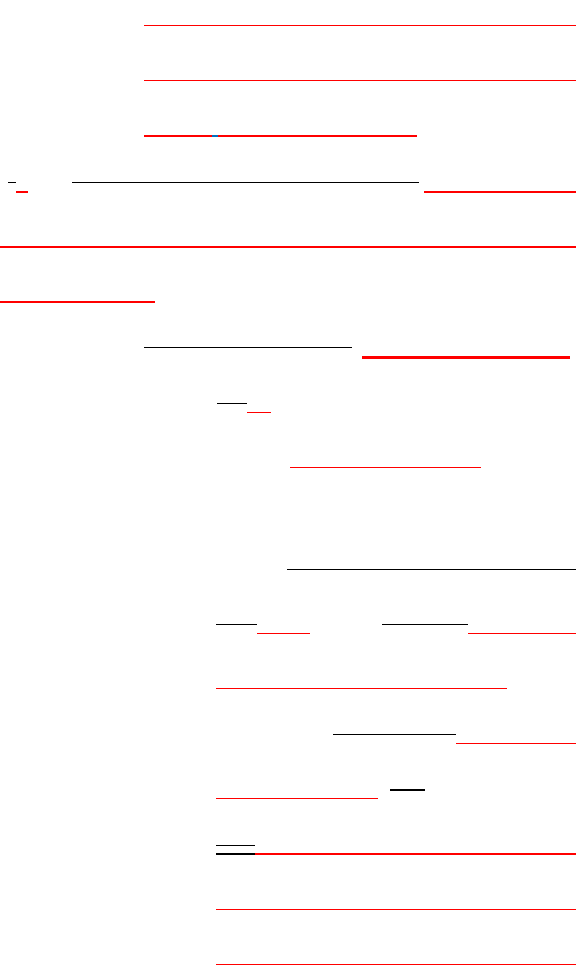
FEDERAL RULES OF BANKRUPTCY PROCEDURE 10
motion or files a response agreeing with the 154
facts set forth in it, the court may grant the 155
motion based on those facts. 156
(fg) Notice of the Final Cure Payment. Trustee’s End-157
of-Case Notice of Payments Made; Response; Court 158
Determination. 159
(1)
Contents of a Notice
Timing and Content
.
160
Within 30 45 days after the debtor completes 161
all payments due to the trustee under a 162
Chapter 13 plan, the trustee must file a notice: 163
(A) stating that the debtor has paid in full 164
the what amount required, if any, the 165
trustee paid to the claim holder to cure 166
any default on the claimand whether 167
it has been cured; and 168
(B) the stating what amount, if any, the 169
trustee paid to the claim holder for 170
contractual payments that came due 171
Preliminary Draft of Proposed Amendments | August 2023
Page 70 of 157

11 FEDERAL RULES OF BANKRUPTCY PROCEDURE
during the pendency of the case and 172
whether contractual payments are 173
current as of the date of the notice; 174
andthe claim holder of its obligation to 175
file and serve a response under (g). 176
(C) informing the claim holder of its 177
obligation to file and serve a response 178
respond under (g)(3). 179
(2) Serving the Notice Service. The notice must 180
be prepared using Form 410C13-N and be 181
served on: 182
• the claim holder; 183
• the debtor; and 184
• the debtor’s attorney. 185
(3) Response. The claim holder must file a 186
response to the notice within 28 days after its 187
service. The response, which is not subject 188
to Rule 3001(f), must be filed as a 189
Preliminary Draft of Proposed Amendments | August 2023
Page 71 of 157

FEDERAL RULES OF BANKRUPTCY PROCEDURE 12
supplement to the claim holder’s proof of 190
claim. The response must be prepared using 191
Form 410C13-NR and be served on the 192
individuals listed in (b)(1). 193
(3) The Debtor’s Right to File. The debtor may 194
file and serve the notice if: 195
(A) the trustee fails to do so; and the 196
debtor contends that the final cure 197
payment has been made and all plan 198
payments have been completed. 199
(4) Court Determination of a Final Cure and 200
Payment. 201
(A) Motion. After service of the response 202
under (g)(3) or within 45 days after 203
service of the trustee’s notice under 204
(g)(1) if no response is filed by the 205
claim holder, the debtor or trustee 206
may file a motion to determine 207
Preliminary Draft of Proposed Amendments | August 2023
Page 72 of 157

13 FEDERAL RULES OF BANKRUPTCY PROCEDURE
whether the debtor has cured all 208
defaults and paid all required 209
postpetition amounts on a claim 210
described in (a). The motion must be 211
prepared using Form 410C13-M2 and 212
be served on the entities listed in 213
(f)(1). 214
(B) Response. If the claim holder 215
disagrees with the facts set forth in the 216
motion, it must file a response within 217
21 days after the motion is served. 218
The response must be prepared using 219
Form 410C13-M2R and be served on 220
the individuals listed in (b)(1). 221
(C) Court Determination. After notice 222
and a hearing, the court must 223
determine whether the debtor has 224
cured all defaults and paid all 225
Preliminary Draft of Proposed Amendments | August 2023
Page 73 of 157

FEDERAL RULES OF BANKRUPTCY PROCEDURE 14
required postpetition amounts. If the 226
claim holder does not respond to the 227
motion or files a response agreeing 228
with the facts set forth in it, the court 229
may enter an appropriate order based 230
on those facts. 231
(g) Response to a Notice of the Final Cure Payment. 232
(1)
Required Statement.
Within 21 days after the 233
notice under (f) is served, the claim holder 234
must file and serve a statement that: 235
(A) indicates whether: 236
(i) the claim holder agrees that 237
the debtor has paid in full the 238
amount required to cure any 239
default on the claim; and 240
(ii) the debtor is otherwise 241
current on all payments under 242
§ 1322(b)(5); and 243
Preliminary Draft of Proposed Amendments | August 2023
Page 74 of 157

15 FEDERAL RULES OF BANKRUPTCY PROCEDURE
(B) itemizes the required cure or 244
postpetition amounts, if any, that the 245
claim holder contends remain unpaid 246
as of the statement’s date. 247
(2)
Persons to be Served.
The holder
must serve 248
the statement on: 249
• the debtor; 250
• the debtor’s attorney; and 251
• the trustee. 252
(3)
Statement to be a Supplement
.
The
statement 253
must be filed as a supplement to the proof of 254
claim and is not subject to Rule 3001(f). 255
(h)
Determining the Final Cure Payment. On the 256
debtor’s or trustee’s motion filed within 21 days after 257
the statement under (g) is served, the court must, after 258
notice and a hearing, determine whether the debtor 259
has cured the default and made all required 260
postpetition payments. 261
Preliminary Draft of Proposed Amendments | August 2023
Page 75 of 157

FEDERAL RULES OF BANKRUPTCY PROCEDURE 16
(ih) Claim Holder’s Failure to Give Notice or 262
Respond. If the claim holder fails to provide any 263
information as required by (b), (c), or (g)this rule, the 264
court may, after notice and a hearing, take one or both 265
of these actionsdo one or more of the following: 266
(1) preclude the holder from presenting the 267
omitted information in any form as evidence 268
in a contested matter or adversary proceeding 269
in the case—unless the court determines that 270
the failure was substantially justified or is 271
harmless; and 272
(2) award other appropriate relief, including 273
reasonable expenses and attorney’s fees 274
caused by the failure; and 275
(3) take any other action authorized by this rule. 276
Committee Note 277
The rule is amended to encourage a greater degree of 278
compliance with its provisions and to allow assessments of 279
a mortgage claim’s status while a chapter 13 case is pending 280
in order to give the debtor an opportunity to cure any 281
Preliminary Draft of Proposed Amendments | August 2023
Page 76 of 157
17 FEDERAL RULES OF BANKRUPTCY PROCEDURE
postpetition defaults that may have occurred. Stylistic 282
changes are made throughout the rule, and its title and 283
subdivision headings have been changed to reflect the 284
amended content. 285
Subdivision (a), which describes the rule’s 286
applicability, is amended to delete the word “installment” in 287
the phrase “contractual installment payment” in order to 288
clarify the rule’s applicability to reverse mortgages, which 289
are not paid in installments. 290
In addition to stylistic changes, subdivision (b) is 291
amended to provide more detailed provisions about notice of 292
payment changes for home-equity lines of credit 293
(“HELOCs”) and to add provisions about the effective date 294
of late payment change notices. The treatment of HELOCs 295
presents a special issue under this rule because the amount 296
owed changes frequently, often in small amounts. Requiring 297
a notice for each change can be overly burdensome. Under 298
new subdivision (b)(2), a HELOC claimant may choose to 299
file only annual payment change notices―including a 300
reconciliation figure (net overpayment or underpayment for 301
the past year)―unless the payment change in a single month 302
is for more than $10. This provision also ensures at least 21 303
days’ notice before a payment change takes effect. 304
As a sanction for noncompliance, subdivision (b)(3) 305
now provides that late notices of a payment increase do not 306
go into effect until the first payment due date after the 307
required notice period (at least 21 days) expires. The claim 308
holder will not be permitted to collect the increase for the 309
interim period. There is no delay, however, in the effective 310
date of an untimely notice of a payment decrease. 311
The changes made to subdivisions (c) and (d) are 312
largely stylistic. Stylistic changes are also made to 313
Preliminary Draft of Proposed Amendments | August 2023
Page 77 of 157
FEDERAL RULES OF BANKRUPTCY PROCEDURE 18
subdivision (e). In addition, the court is given authority, 314
upon motion of a party in interest, to shorten the time for 315
seeking a determination of the fees, expenses, or charges 316
owed. Such a shortening, for example, might be appropriate 317
in the later stages of a chapter 13 case. 318
Subdivision (f) is new. It provides a procedure for 319
assessing the status of the mortgage at any point before the 320
trustee files the notice under (g)(1). This optional procedure, 321
which should be used only when necessary and appropriate 322
for carrying out the plan, allows the debtor and the trustee to 323
be informed of any deficiencies in payment and to reconcile 324
records with the claim holder in time to become current 325
before the case is closed. The procedure is initiated by 326
motion of the trustee or debtor. An Official Form has been 327
adopted for this purpose. The claim holder then must 328
respond if it disagrees with facts stated in the motion, again 329
using an Official Form to provide the required information. 330
If the claim holder’s response asserts such a disagreement, 331
the court, after notice and a hearing, will determine the status 332
of the mortgage claim. If the claim holder fails to respond or 333
does not dispute the facts set forth in the motion, the court 334
may enter an order favorable to the moving party based on 335
those facts. 336
Under subdivision (g), within 45 days after the last 337
plan payment is made to the trustee, the trustee must file a 338
notice of final cure and payment. An Official Form has been 339
adopted for this purpose. The notice will state the amount 340
that the trustee has paid to cure any default on the claim and 341
whether the default has been cured. It will also state the 342
amount, if any, that the trustee has paid on contractual 343
obligations that came due during the case and whether those 344
payments are current as of the date of the notice. The claim 345
holder then must respond within 28 days after service of the 346
Preliminary Draft of Proposed Amendments | August 2023
Page 78 of 157
19 FEDERAL RULES OF BANKRUPTCY PROCEDURE
notice, again using an Official Form to provide the required 347
information. 348
Either the trustee or the debtor may file a motion for 349
a determination of final cure and payment. The motion, 350
using the appropriate Official Form, may be filed after the 351
claim holder responds to the trustee’s notice under (g)(1), or, 352
if the claim holder fails to respond to the notice, within 45 353
days after the notice was served. If the claim holder 354
disagrees with any facts in the motion, it must respond 355
within 21 days after the motion is served, using the 356
appropriate Official Form. The court will then determine the 357
status of the mortgage. A Director’s Form provides guidance 358
on the type of information that should be included in the 359
order. 360
Subdivision (h) was previously subdivision (i). It has 361
been amended to clarify that the listed sanctions are 362
authorized in addition to any other actions that the rule 363
authorizes the court to take if the claim holder fails to 364
provide notice or respond as required by the rule. Stylistic 365
changes have also been made to the subdivision. 366
Preliminary Draft of Proposed Amendments | August 2023
Page 79 of 157
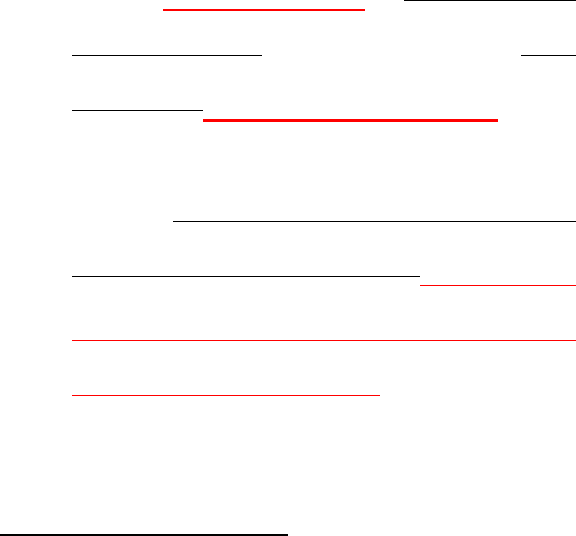
PROPOSED AMENDMENTS TO THE FEDERAL
RULES OF BANKRUPTCY PROCEDURE
1
Rule 8006. Certifying a Direct Appeal to the 1
Court of Appeals
2
2
* * * * * 3
(g) Request After Certification for Leave to Take a 4
Direct Appeal to a Court of Appeals After 5
Certification to Authorize a Direct Appeal. Within 6
30 days after the certification has become effective 7
under (a), a request for leave to take a direct appeal 8
to a court of appeals must be filed any party to the 9
appeal may ask the court of appeals to authorize a 10
direct appeal by filing a petition with the circuit clerk 11
in accordance with Fed. R. App. P. 6(c). 12
1
New material is underlined in red; matter to be omitted
is lined through.
2
The changes indicated are to the restyled version of
Rule 8006, not yet in effect.
Preliminary Draft of Proposed Amendments | August 2023
Page 80 of 157
FEDERAL RULES OF BANKRUPTCY PROCEDURE 2
Committee Note 13
Rule 8006(g) is revised to clarify that any party to the 14
appeal may file a request that a court of appeals authorize a 15
direct appeal. There is no obligation to do so if no party 16
wishes the court of appeals to authorize a direct appeal. 17
Preliminary Draft of Proposed Amendments | August 2023
Page 81 of 157

Official Form 410 Proof of Claim page 1
Official Form 410
Proof of Claim 12/24
Read the instructions before filling out this form. This form is for making a claim for payment in a bankruptcy case. Do not use this form to
make a request for payment of an administrative expense. Make such a request according to 11 U.S.C. § 503.
Filers must leave out or redact information that is entitled to privacy on this form or on any attached documents. Attach redacted copies of any
documents that support the claim, such as promissory notes, purchase orders, invoices, itemized statements of running accounts, contracts, judgments,
mortgages, and security agreements. Do not send original documents; they may be destroyed after scanning. If the documents are not available,
explain in an attachment.
A person who files a fraudulent claim could be fined up to $500,000, imprisoned for up to 5 years, or both. 18 U.S.C. §§ 152, 157, and 3571.
Fill in all the information about the claim as of the date the case was filed. That date is on the notice of bankruptcy (Form 309) that you received.
Part 1: Identify the Claim
1. Who is the current
creditor?
___________________________________________________________________________________________________________
Name of the current creditor (the person or entity to be paid for this claim)
Other names the creditor used with the debtor ________________________________________________________________________
2. Has this claim been
acquired from
someone else?
No
Yes. From whom? ______________________________________________________________________________________________________
3. Where should notices
a
nd payments to the
creditor be sent?
Federal Rule of
Bankruptcy Procedur
e
(
FRBP) 2002(g)
Where should notices to the creditor be sent? Where should payments to the creditor be sent? (if
different)
_____________________________________________________
Name
______________________________________________________
Number Street
______________________________________________________
City State ZIP Code
Contact phone
________________________
Contact email ________________________
_____________________________________________________
Name
______________________________________________________
Number Street
______________________________________________________
City State ZIP Code
Contact phone
________________________
Contact email ________________________
Uniform claim identifier for electronic payments in chapter 13 (if you use one):
__ __ __ __ __ __ __ __ __ __ __ __ __ __ __ __ __ __ __ __ __ __ __ __
4. Does this claim amend
one already filed?
No
Yes. Claim number on court claims registry (if known) ________ Filed on ________________________
MM / DD / YYYY
5. Do you know if anyone
else has filed a proof
of claim for this claim?
No
Yes. Who made the earlier filing? _____________________________
Debtor 1 __________________________________________________________________
Debtor 2 ________________________________________________________________
(Spouse, if filing)
United States Bankruptcy C
ourt for the: ______________________ District of __________
(State)
Case number ___________________________________________
Fill in this information to identify the case:
Page 82 of 157
Preliminary Draft of Proposed Amendments | August 2023

Official Form 410 Proof of Claim page 2
Part 2: Give Information About the Claim as of the Date the Case Was Filed
6.
Do you have any number
you use to identify the
debtor?
No
Yes. Last 4 digits of the debtor’s account or any number you use to identify the debtor: ____ ____ ____ ____
7. How much is the claim? $_____________________________. Does this amount include interest or other charges?
No
Yes. Attach statement itemizing interest, fees, expenses, or other
charges
required by Bankruptcy Rule 3001(c)(2)(A).
8. What is the basis of the
claim?
Examples: Goods sold, money loaned, lease, services performed, personal injury or wrongful death, or credit card.
Attach redacted copies of any documents supporting the claim required by Bankruptcy Rule 3001(c).
Limit disclosing information that is entitled to privacy, such as health care information.
______________________________________________________________________________
9. Is all or part of the claim
secured?
No
Yes. The claim is secured by a lien on property.
Nature of property:
Real estate. If the claim is secured by the debtor’s principal residence, file a Mortgage Proof of Claim
Attachment (Official Form 410-A) with this Proof of Claim.
Motor vehicle
Other. Describe: _____________________________________________________________
Basis for perfection: _____________________________________________________________
Attach redacted copies of documents, if any, that show evidence of perfection of a security interest (for
example, a mortgage, lien, certificate of title, financing statement, or other document that shows the lien has
been filed or recorded.)
Value of property: $__________________
Amount of the claim that is secured: $__________________
Amount of the claim that is unsecured: $__________________ (The sum of the secured and unsecured
amounts should match the amount in line 7.)
Amount necessary to cure any default as of the date of the petition: $____________________
Annual Interest Rate (when case was filed) _______%
Fixed
Variable
10. Is this claim based on a
l
ease?
No
Yes. Amount necessary to cure any default as of the date of the petition. $____________________
11. Is this claim subject to a
right of setoff?
No
Yes. Identify the property: ___________________________________________________________________
Preliminary Draft of Proposed Amendments | August 2023
Page 83 of 157

Official Form 410 Proof of Claim page 3
12. Is all or part of the claim
entitled to priority under
11 U.S.C. § 507(a)?
A claim may be partly
priority and partly
nonpriority. For example,
in some categories, the
law limits the amount
entitled to priority.
No
Yes. Check one:
Amount entitled to priority
Domestic support obligations (including alimony and child support) under
11 U.S.C. § 507(a)(1)(A) or (a)(1)(B).
$____________________
Up to $3,350* of deposits toward purchase, lease, or rental of property or services for
personal, family, or household use. 11 U.S.C. § 507(a)(7).
$____________________
Wages, salaries, or commissions (up to $15,150*) earned within 180 days before the
bankruptcy petition is filed or the debtor’s business ends, whichever is earlier.
11 U.S.C. § 507(a)(4).
$____________________
Taxes or penalties owed to governmental units. 11 U.S.C. § 507(a)(8).
$____________________
Contributions to an employee benefit plan. 11 U.S.C. § 507(a)(5).
$____________________
Other. Specify subsection of 11 U.S.C. § 507(a)(__) that applies.
$____________________
* Amounts are subject to adjustment on 4/01/25 and every 3 years after that for cases begun on or after the date of adjustment.
Part 3: Sign Below
The person completing
this proof of claim must
sign and date it.
FRBP 9011(b).
If you file this claim
electronically, FRBP
5005(a)(2) authorizes courts
to establish local rules
specifying what a signature
is.
A person who files a
fraudulent claim could be
fined up to $500,000,
imprisoned for up to 5
years, or both.
18 U.S.C. §§ 152, 157, and
3571.
Check the appropriate box:
I am the creditor.
I am the creditor’s attorney or authorized agent.
I am the trustee, or the debtor, or their authorized agent. Bankruptcy Rule 3004.
I am a guarantor, surety, endorser, or other codebtor. Bankruptcy Rule 3005.
I understand that an authorized signature on this Proof of Claim serves as an acknowledgment that when calculating the
amount of the claim, the creditor gave the debtor credit for any payments received toward the debt.
I have examined the information in this Proof of Claim and have a reasonable belief that the information is true
and correct.
I declare under penalty of perjury that the foregoing is true and correct.
Executed on
date _________________
MM / DD / YYYY
________________________________________________________________________
Signature
Print the name of the person who is completing and signing this claim:
Name _______________________________________________________________________________________________
First name Middle name Last name
Title
_______________________________________________________________________________________________
Company
_______________________________________________________________________________________________
Identify the corporate servicer as the company if the authorized agent is a servicer.
Address
_______________________________________________________________________________________________
Number Street
_______________________________________________________________________________________________
City State ZIP Code
Contact phone
_____________________________ Email ____________________________________
Preliminary Draft of Proposed Amendments | August 2023
Page 84 of 157
Official Form 410 (Committee Note) (12/24)
Committee Note
The last line of Part 1, Box 3, is amended to permit
use of the uniform claim identifier for all payments in cases
filed under all chapters of the Code, not merely electronic
payments in chapter 13 cases.
Preliminary Draft of Proposed Amendments | August 2023
Page 85 of 157
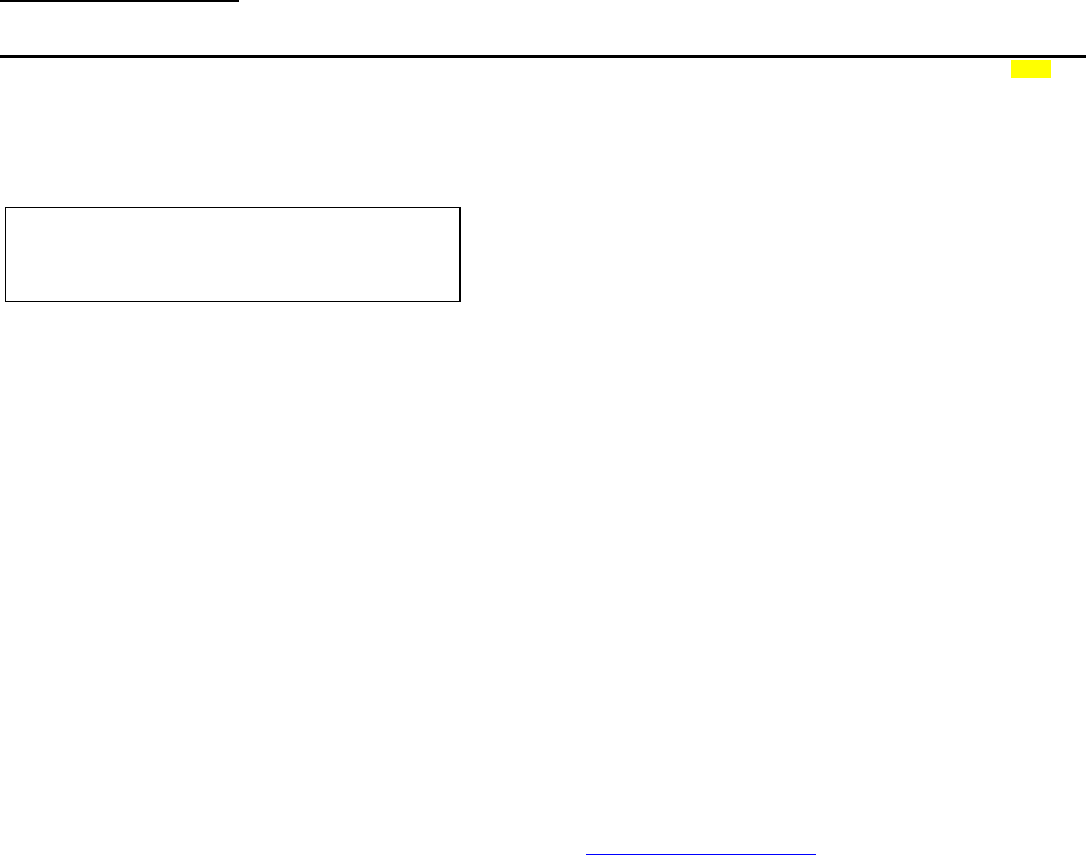
Official Form 410
Instructions for Proof of Claim
United States Bankruptcy Court 12/24
These instructions and definitions generally explain the law. In certain circumstances, such as bankruptcy cases that debtors
do not file voluntarily, exceptions to these general rules may apply. You should consider obtaining the advice of an attorney,
especially if you are unfamiliar with the bankruptcy process and privacy regulations.
How to fill out this form
Fill in all of the information about the claim as of the
date the case was filed.
Fill in the caption at the top of the form.
If the claim has been acquired from someone else,
then state the identity of the last party
who owned the
claim or was the holder of the claim and who transferred
it to you before the initial claim was filed.
Attach any supporting documents to this form.
Attach redacted copies of any documents that show that the
debt exists, a lien secures the debt, or both. (See the
definition of redaction on the next page.)
Also attach redacted copies of any documents that show
perfection of any security interest or any assignments or
transfers of the debt. In addition to the documents, a
summary may be added. Federal Rule of Bankruptcy
Procedure (called “Bankruptcy Rule”) 3001(c) and (d).
Do not attach original documents because
attachments may be destroyed after scanning.
If the claim is based on delivering health care goods
or services, do not disclose confidential health care
information. Leave out or redact confidential
information both in the claim and in the attached
documents.
A Proof of Claim form and any attached documents
must show only the last 4 digits of any social security
number, individual’s tax identification number, or
financial account number, and only the year of any
person’s date of birth.
See Bankruptcy Rule 9037.
For a minor child, fill in only the child’s initials and the
full name and address of the child’s parent or
guardian.
For example, write A.B., a minor child (John
Doe, parent, 123 Main St., City, State). See Bankruptcy
Rule 9037.
Confirmation that the claim has been filed
To receive confirmation that the claim has been filed, either
enclose a stamped self-addressed envelope and a copy of this
form or go to the court’s PACER system
(www.pacer.psc.uscourts.gov) to view the filed form.
Understand the terms used in this form
Administrative expense: Generally, an expense that arises
after a bankruptcy case is filed in connection with operating,
liquidating, or distributing the bankruptcy estate.
11 U.S.C. § 503.
Claim: A creditor’s right to receive payment for a debt that the
debtor owed on the date the debtor filed for bankruptcy. 11
U.S.C. §101 (5). A claim may be secured or unsecured.
A person who files a fraudulent claim could be fined up
to $500,000, imprisoned for up to 5 years, or both.
18 U.S.C. §§ 152, 157 and 3571.
Preliminary Draft of Proposed Amendments | August 2023
Page 86 of 157

Creditor: A person, corporation, or other entity to whom a
debtor owes a debt that was incurred on or before the date the
debtor filed for bankruptcy. 11 U.S.C. §101 (10).
Debtor: A person, corporation, or other entity who is in
bankruptcy. Use the debtor’s name and case number as shown
in the bankruptcy notice you received. 11 U.S.C. § 101 (13).
Evidence of perfection: Evidence of perfection of a security
interest may include documents showing that a security
interest has been filed or recorded, such as a mortgage, lien,
certificate of title, or financing statement.
Information that is entitled to privacy: A Proof of Claim
form and any attached documents must show only the last 4
digits of any social security number, an individual’s tax
identification number, or a financial account number, only the
initials of a minor’s name, and only the year of any person’s
date of birth. If a claim is based on delivering health care
goods or services, limit the disclosure of the goods or services
to avoid embarrassment or disclosure of confidential health
care information. You may later be required to give more
information if the trustee or someone else in interest objects to
the claim.
Priority claim: A claim within a category of unsecured
claims that is entitled to priority under 11 U.S.C. §507(a).
These claims are paid from the available money or
property in a bankruptcy case before other unsecured
claims are paid. Common priority unsecured claims
include alimony, child support, taxes, and certain unpaid
wages.
Proof of claim: A form that shows the amount of debt the
debtor owed to a creditor on the date of the bankruptcy filing.
The form must be filed in the district where the case is
pending.
Redaction of information: Masking, editing out, or deleting
certain information to protect privacy. Filers must redact or
leave out information entitled to
privacy on the Proof of
Claim form and any attached documents.
Secured claim under 11 U.S.C. §506(a): A claim backed by
a lien on particular property of the debtor. A claim is secured
to the extent that a creditor has the right to be paid from the
property before other creditors are paid. The amount of a
secured claim usually cannot be more than the value of the
particular property on which the creditor has a lien. Any
amount owed to a creditor that is more than the value of the
property normally may be an unsecured claim. But exceptions
exist; for example, see 11 U.S.C. § 1322(b) and the final
sentence of 1325(a).
Examples of liens on property include a mortgage on real
estate or a security interest in a car. A lien may be voluntarily
granted by a debtor or may be obtained through a court
proceeding. In some states, a court judgment may be a lien.
Setoff: Occurs when a creditor pays itself with money
belonging to the debtor that it is holding, or by canceling a
debt it owes to the debtor.
Uniform claim identifier: An optional 24-character identifier
that some creditors use to facilitate electronic payment.
Unsecured claim: A claim that does not meet the
requirements of a secured claim. A claim may be unsecured in
part to the extent that the amount of the claim is more than the
value of the property on which a creditor has a lien.
Offers to purchase a claim
Certain entities purchase claims for an amount that is less than
the face value of the claims. These entities may contact
creditors offering to purchase their claims. Some written
communications from these entities may easily be confused
with official court documentation or communications from the
debtor. These entities do not represent the bankruptcy court,
the bankruptcy trustee, or the debtor. A creditor has no
obligation to sell its claim. However, if a creditor decides to
sell its claim, any transfer of that claim is subject to
Bankruptcy Rule 3001(e), any provisions of the Bankruptcy
Code (11 U.S.C. § 101 et seq.) that apply, and any orders of
the bankruptcy court that apply.
Do not file these instructions with your form.
Preliminary Draft of Proposed Amendments | August 2023
Page 87 of 157
Official Form 410C13-M1 (12/25)
United States Bankruptcy Court
_______________ District of _______________
In re _____________________________, Debtor Case No. ________
Chapter 13
Motion Under Rule 3002.1(f)(1) to Determine the Status of the Mortgage Claim
The [trustee/debtor] states as follows:
1. The following information relates to the mortgage claim at issue:
Name of Claim Holder:________________ Court claim no. (if known):____________
Last 4 digits of any number used to identify the debtor’s account: ___ ____ ____ ____
Property address: _____________________________________________________
_____________________________________________________
City State ZIP Code
2. As of the date of this motion, [I have/the trustee has] disbursed payments to cure
arrearages as follows:
a. Allowed amount of the prepetition arrearage, if any: $ ___________________
b. Total amount of the prepetition arrearage paid, if known: $ ___________________
c. Allowed amount of postpetition arrearage, if any: $ ___________________
d. Total amount of postpetition arrearage paid, if known: $ ___________________
e. Total amount of arrearages paid: $ ___________________
3. As of the date of this motion, [I have/the trustee has] disbursed payments for
postpetition fees, expenses, and charges as follows:
a. Amount of postpetition fees, expenses, and charges
noticed and allowed under Rule 3002.1(c): $ ___________________
b. Amount of postpetition fees, expenses, and charges
paid: $ ___________________
Preliminary Draft of Proposed Amendments | August 2023
Page 88 of 157
Official Form 410C13-M1 Motion to Determine the Status of the Mortgage Claim page 2
4. As of the date of this motion, [I have/the trustee has] made the following payments
on the postpetition contractual obligations: $ __________________
5. I ask the court for an order under Rule 3002.1(f)(3) determining the status of
the mortgage claim addressed by this motion and whether the payments required
by the plan to be made as of the date of this motion have been made.
Signed: _______________________________
(Trustee/Debtor)
Date: ____/____/________
Preliminary Draft of Proposed Amendments | August 2023
Page 89 of 157
Official Form 410C13-M1R (12/25)
United States Bankruptcy Court
_______________ District of _______________
In re _____________________________, Debtor Case No. ________
Chapter 13
Response to [Trustee’s/Debtor’s] Motion Under Rule 3002.1(f)(1) to Determine the
Status of the Mortgage Claim
____________________________ (claim holder) states as follows:
1. The following information relates to the mortgage claim at issue:
Name of Claim Holder:________________ Court claim no. (if known):____________
Last 4 digits of any number used to identify the debtor’s account: ___ ____ ____ ____
Property address: _____________________________________________________
_____________________________________________________
City State ZIP Code
2. Arrearages
Check one:
As of the date of this response, the debtor has paid in full the amount required to
cure any arrearage on this mortgage claim.
As of the date of this response, the debtor has not paid in full the amount
required to cure any arrearage on this mortgage claim. The total arrearage
amount remaining unpaid as of the date of this response is:
$ ___________________.
3. Postpetition Contractual Payments
Check all that apply:
The debtor is current on all postpetition contractual payments, including all fees,
charges, expenses, escrow, and costs. The claim holder attaches a payoff
statement and provides the following information as of the date of this response:
Date last payment was received on the mortgage: ____/_____/______
Date next postpetition payment from the debtor is due: ____/_____/______
Preliminary Draft of Proposed Amendments | August 2023
Page 90 of 157
Official Form 410C13-M1R Response to Motion to Determine the Status of the Mortgage Claim page 2
Amount of the next postpetition payment that is due: $____________
Unpaid principal balance of the loan: $____________
Additional amounts due for any deferred or accrued interest: $____________
Balance of the escrow account: $____________
Balance of unapplied funds or funds held in a suspense
account: $____________
The debtor is not current on all postpetition payments. The debtor is obligated for
the postpetition payment(s) that first became due on: ____/_____/______
The debtor has fees, charges, expenses, negative escrow amounts, or costs due
and owing. The total amount remaining unpaid as of the date of this response is
$_____________________.
4. Itemized Payment History
Include if applicable:
Because the claim holder asserts that the arrearages have not been paid in full or states
that the debtor is not current on all postpetition payments or that fees, charges,
expenses, escrow, and costs are due and owing, the claim holder attaches an itemized
payment history—using the format of Official Form 410A, Part 5—disclosing the
following amounts from the date of the bankruptcy filing through the date of this
response:
• all prepetition and postpetition payments received;
• the application of all payments received;
• all fees, costs, escrow, and expenses assessed to the mortgage; and
• all amounts the creditor contends remain unpaid.
_______________________________________________ Date ____/_____/______
Signature
Print ________________________________________ Title ____________________
Name
Company ___________________________________________________________
Preliminary Draft of Proposed Amendments | August 2023
Page 91 of 157
Official Form 410C13-M1R Response to Motion to Determine the Status of the Mortgage Claim page 3
If different from the notice address listed on the proof of claim to which this response
applies:
Address ____________________________________________________
Number Street
___________________________________________________
City State ZIP Code
Contact phone (______) _____– _________ Email ________________________
The person completing this response must sign it. Check the appropriate box:
I am the claim holder.
I am the claim holder’s authorized agent.
Preliminary Draft of Proposed Amendments | August 2023
Page 92 of 157
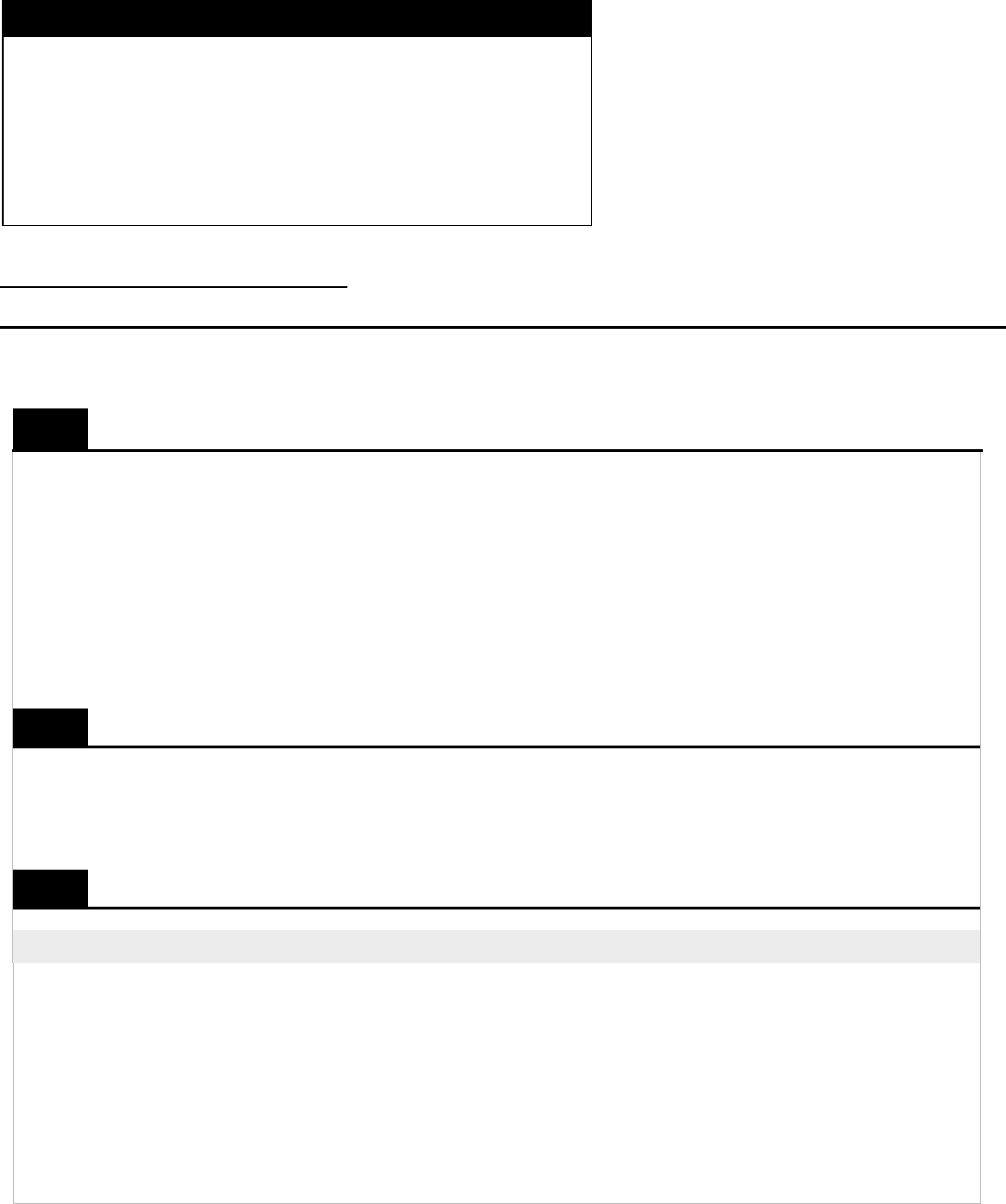
Official Form 410C13-N Trustee’s Notice of Payments Made page 1
Official Form 410C13-N
Trustee’s Notice of Payments Made 12/25
The trustee must file this notice in a chapter 13 case within 45 days after the debtor completes all payments due to the trustee. Rule
3002.1(g)(1).
Part 1:
Mortgage Information
Name of claim holder: ______________________________________
Court claim no. (if known):
______________
Last 4 digits of any number you use to identify the debtor’s account:
____ ____ ____ ____
Property address:
________________________________________________
Number Street
________________________________________________
________________________________________________
City State ZIP Code
Part 2:
Statement of Completion
On _______________, debtor completed all payments due the trustee under the chapter 13 plan. A copy of the
trustee’s disbursement ledger for all payments to the claim holder is attached or may be accessed here:
_____________ (web address).
Part 3:
Amount Needed to Cure Default
Amount
a. Allowed amount of prepetition arrearage, if any:
$ __________
b. Total amount prepetition arrearage paid by the trustee as of date of notice:
$ __________
c. Allowed amount of postpetition arrearage, if any:
$ __________
d. Total postpetition arrearage paid by the trustee as of date of notice:
$ __________
e. Total amount of arrearages paid as of date of notice
$ __________
Has the debtor cured all arrearages?
Yes
No
Debtor 1 __________________________________________________________________
Debtor 2 _________________________________________________________________
(Spouse, if filing)
United States Bankruptcy Court for the: ______________________ District of ______________
(State)
Case number ___________________________________________
Fill in this information to identify the case:
Preliminary Draft of Proposed Amendments | August 2023
Page 93 of 157

Official Form 410C13-N Trustee’s Notice of Payments Made page 2
Part 4: Postpetition Contractual Payment
Check one:
Postpetition contractual payments are made by the debtor.
Postpetition contractual payments are paid through the trustee.
If the trustee has made postpetition contractual payments, complete a-c below; otherwise leave
blank.
a. Total amount of postpetition contractual payments made by the trustee as of date of notice:
$ _________
b. Is the debtor current on postpetition contractual payments as of date of notice?
Yes
No
c. Next mortgage payment due:
____/______
MM / YYYY
Part 5:
Postpetition Fees, Expenses, and Charges
Amount of allowed postpetition fees, expenses, and charges:
Amount of postpetition fees, expenses, and charges paid by the trustee as of date of notice:
$ __________
$ __________
Part 6: A Response Is Required by Bankruptcy Rule 3002.1(g)(3)
Within 28 days after service of this notice, the holder of the claim must file a response using Official Form 410C13-NR.
__________________________________________________ Date ____/_____/________
Signature
Trustee _________________________________________________________
First Name Middle Name Last Name
Address _________________________________________________________
Number Street
___________________________________________________
City State ZIP Code
Contact phone (______) _____– _________ Email ____________________
Preliminary Draft of Proposed Amendments | August 2023
Page 94 of 157
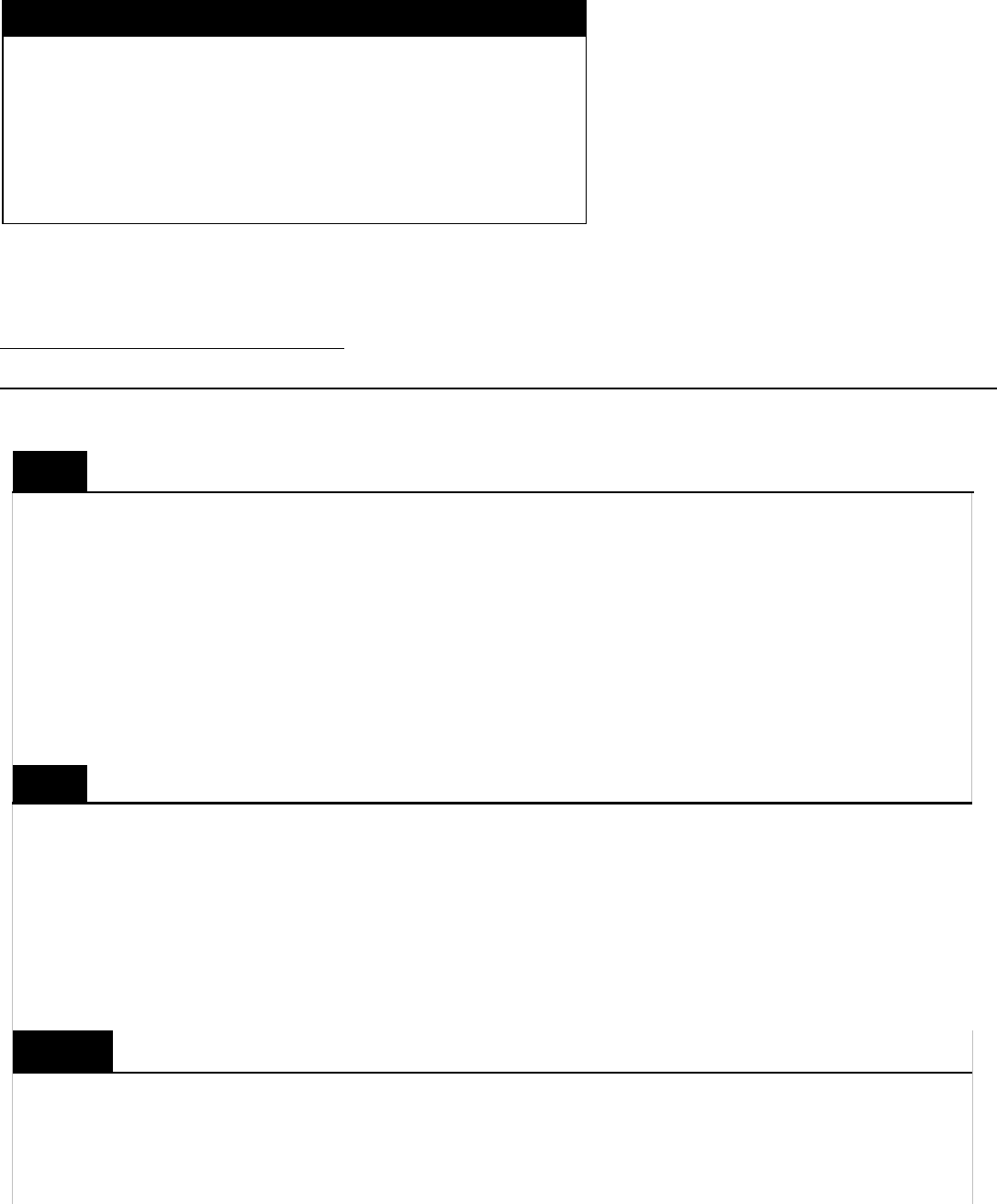
Official Form 410C13-NR Response to Trustee’s Notice of Payments Made page 1
Official Form 410C13-NR
Response to Trustee’s Notice of Payments Made 12/25
The claim holder must respond to the Trustee’s Notice of Payments Made within 28 days after it was served. Rule 3002.1(g)(2).
Part 1:
Mortgage Information
Name of claim holder: ______________________________________
Court claim no. (if known):
______________
Last 4 digits of any number you use to identify the debtor’s account:
____ ____ ____ ____
Property address:
________________________________________________
Number Street
________________________________________________
________________________________________________
City State ZIP Code
Part 2:
Amount Needed to Cure Default
Check all that are applicable:
The amount required to cure any prepetition arrearage has been paid in full.
The amount required to cure the prepetition arrearage has not been paid in full. Amount of prepetition arrearage remaining unpaid
as of the date of this notice: $ _________________.
The amount required to cure any postpetition arrearage has been paid in full.
The amount required to cure the postpetition arrearage has not been paid in full. Amount of postpetition arrearage remaining
unpaid as of the date of this notice: $ _________________.
Part 3: Postpetition Contractual Payment
Debtor is current on all postpetition contractual payments, including all fees, charges, expenses,
escrow, and costs. The claim holder attaches a payoff statement and provides the following
information as of the date of this response:
Date last payment was received on the mortgage: ____/_____/______
Debtor 1 __________________________________________________________________
Debtor 2 _________________________________________________________________
(Spouse, if filing)
United States Bankruptcy Court for the: ______________________ District of ______________
(State)
Case number ___________________________________________
Fill in this information to identify the case:
Preliminary Draft of Proposed Amendments | August 2023
Page 95 of 157
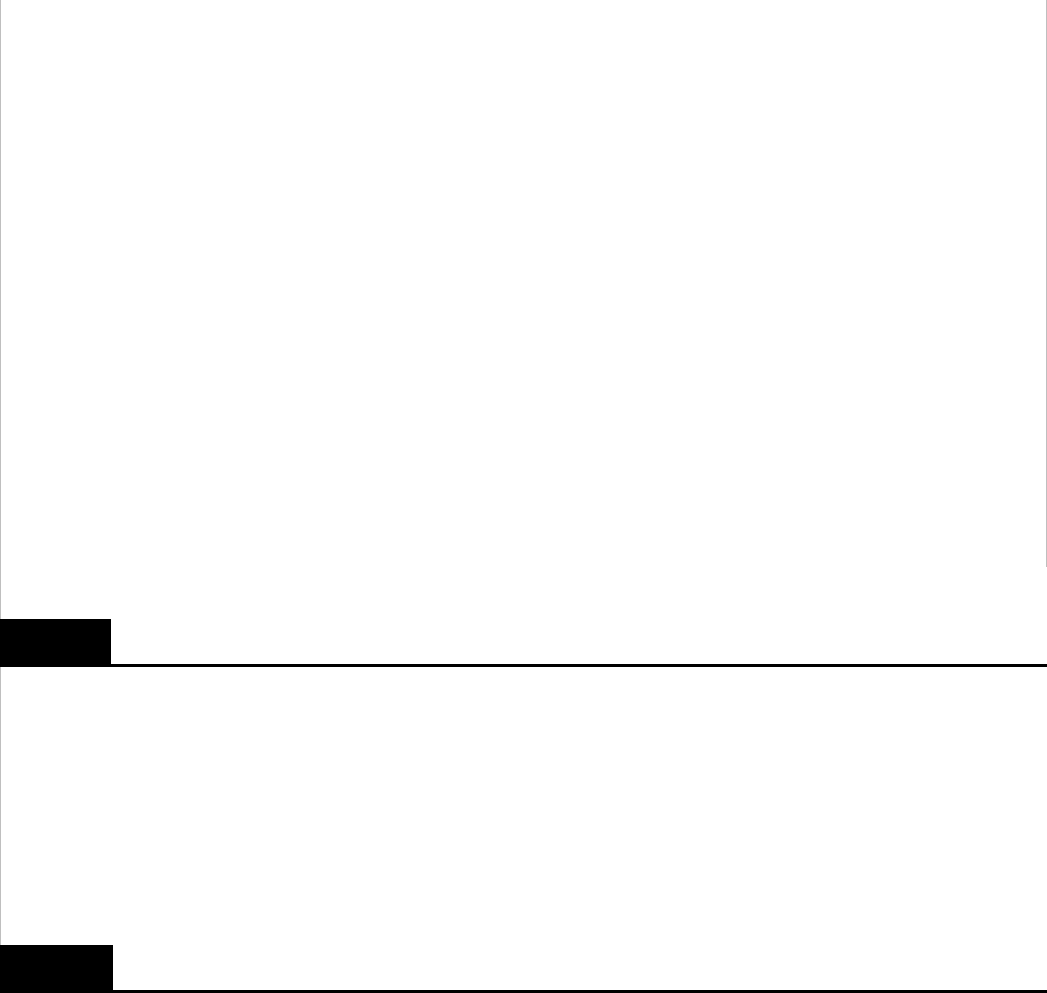
Official Form 410C13-NR Response to Trustee’s Notice of Payments Made page 2
Date next postpetition payment from the debtor is due: ____/_____/______
Amount of the next postpetition payment that is due: $____________
Unpaid principal balance of the loan: $____________
Additional amounts due for any deferred or accrued interest: $____________
Balance of the escrow account: $____________
Balance of unapplied funds or funds held in a suspense account:
$____________
Debtor is not current on all postpetition contractual payments. The claim holder asserts that the
debtor is obligated for the postpetition payment(s) that first became due on:
____/_____/______.
Debtor has fees, charges, expenses, negative escrow amounts, or costs due and owing. The
claim holder asserts that the total amount remaining unpaid as of the date of this response is
$_____________________.
Part 4 Itemized Payment History
If the claim holder disagrees that the prepetition arrearage has been paid in full, states that the debtor is not current on all postpetition
payments, or states that fees, charges, expenses, escrow, and costs are due and owing, it must attach an itemized payment history—
using the format of Official Form 410A, Part 5—disclosing the following amounts from the date of the bankruptcy filing through the date
of this response:
• all prepetition and postpetition payments received;
• the application of all payments received;
• all fees, costs, escrow, and expenses assessed to the mortgage; and
• all amounts the claim holder contends remain unpaid.
Part 5: Sign Here
The person completing this response must sign it. Check the appropriate box:
I am the claim holder.
I am the claim holder’s authorized agent.
Preliminary Draft of Proposed Amendments | August 2023
Page 96 of 157

Official Form 410C13-NR Response to Trustee’s Notice of Payments Made page 3
I declare under penalty of perjury that the information provided in this response is true and correct to the best of my
knowledge, information, and reasonable belief.
__________________________________________________ Date ____/_____/________
Signature
_________________________________________________________
First Name Middle Name Last Name
_________________________________________________________
Number Street
___________________________________________________
City State ZIP Code
Contact phone (______) _____– _________ Email ________________________
Preliminary Draft of Proposed Amendments | August 2023
Page 97 of 157
Official Form 410C13-M2 (12/25)
United States Bankruptcy Court
_______________ District of _______________
In re _____________________________, Debtor Case No. ________
Chapter 13
Motion Under Rule 3002.1(g)(4) to Determine Final Cure and Payment of Mortgage
Claim
The [trustee/debtor] states as follows:
1. The following information relates to the mortgage claim at issue:
Name of Claim Holder:________________ Court claim no. (if known):____________
Last 4 digits of any number used to identify the debtor’s account: ___ ____ ____ ____
Property address: _____________________________________________________
_____________________________________________________
City State ZIP Code
2. As of the date of this motion, [I have/the trustee has] disbursed payments to cure
arrearages as follows:
a. Allowed amount of the prepetition arrearage, if any: $ ___________________
b. Total amount of the prepetition arrearage paid, if known: $ ___________________
c. Allowed amount of postpetition arrearage, if any: $ ___________________
d. Total amount of postpetition arrearage paid, if known: $ ___________________
e. Total amount of arrearages paid: $ ___________________
3. As of the date of this motion, [I have/the trustee has] disbursed payments for
postpetition fees, expenses, and charges as follows:
a. Amount of postpetition fees, expenses, and charges
noticed and allowed under Rule 3002.1(c): $ ___________________
b. Amount of postpetition fees, expenses, and charges
paid: $ ___________________
Preliminary Draft of Proposed Amendments | August 2023
Page 98 of 157
Official Form 410C13-M2 Motion to Determine Final Cure and Payment page 2
4. As of the date of this motion, [I have/the trustee has] made the following payments
on the postpetition contractual obligations: $ __________________
5. I ask the court for an order under Rule 3002.1(g)(4) determining whether the
debtor has cured all arrearages, if any, and paid all postpetition amounts required
by the plan to be made as of the date of this motion.
Signed: _______________________________
(Trustee/Debtor)
Date: ____/____/________
Preliminary Draft of Proposed Amendments | August 2023
Page 99 of 157
Official Form 410C13-M2R (12/25)
United States Bankruptcy Court
_______________ District of _______________
In re _____________________________, Debtor Case No. ________
Chapter 13
Response to [Trustee’s/Debtor’s] Motion to Determine Final Cure and Payment of
the Mortgage Claim
____________________________ (claim holder) states as follows:
1. The following information relates to the mortgage claim at issue:
Name of Claim Holder:________________ Court claim no. (if known):____________
Last 4 digits of any number used to identify the debtor’s account: ___ ____ ____ ____
Property address: _____________________________________________________
_____________________________________________________
City State ZIP Code
2. Arrearage Provided for by the Plan
Check one:
As of the date of this response, Debtor has paid in full the amount required to
cure any arrearage on this mortgage claim.
As of the date of this response, Debtor has not paid in full the amount required to
cure any arrearage on this mortgage claim. The total arrearage amount
remaining unpaid as of the date of this response is:
$ ___________________.
3. Postpetition Contractual Payments
Check all that apply:
Debtor is current on all postpetition contractual payments, including all fees,
charges, expenses, escrow, and costs. The claim holder attaches a payoff
statement and provides the following information as of the date of this response:
Date last payment was received on the mortgage: ___/___/____
Date next postpetition payment from the debtor is due: ___/___/____
Preliminary Draft of Proposed Amendments | August 2023
Page 100 of 157
Official Form 410C13-M2R Motion to Determine the Status of the Mortgage Claim page 2
Amount of the next postpetition payment that is due: $____________
Unpaid principal balance of the loan: $____________
Additional amounts due for any deferred or accrued interest: $____________
Balance of the escrow account: $____________
Balance of unapplied funds or funds held in a suspense
account: $____________
Debtor is not current on all postpetition payments. The debtor is obligated for the
postpetition payment(s) that first became due on: ____/_____/______.
Debtor has fees, charges, expenses, negative escrow amounts, or costs due and
owing. The total amount remaining unpaid as of the date of this response is
$_____________________.
4. Itemized Payment History
Include if applicable:
Because the claim holder disagrees that the arrearages have been paid in full or states
that the debtor is not current on all postpetition payments or that fees, charges,
expenses, escrow, and costs are due and owing, the claim holder attaches an itemized
payment history—using the format of Official Form 410A, Part 5—disclosing the
following amounts from the date of the bankruptcy filing through the date of this
response:
• all prepetition and postpetition payments received;
• the application of all payments received;
• all fees, costs, escrow, and expenses assessed to the mortgage; and
• all amounts the creditor contends remain unpaid.
_______________________________________________ Date ____/_____/______
Signature
Print ________________________________________ Title ____________________
Name
Company ___________________________________________________________
Preliminary Draft of Proposed Amendments | August 2023
Page 101 of 157
Official Form 410C13-M2R Motion to Determine the Status of the Mortgage Claim page 3
If different from the notice address listed on the proof of claim to which this response
applies:
Address ____________________________________________________
Number Street
___________________________________________________
City State ZIP Code
Contact phone (______) _____– _________ Email ________________________
The person completing this response must sign it. Check the appropriate box:
I am the claim holder.
I am the claim holder’s authorized agent.
Preliminary Draft of Proposed Amendments | August 2023
Page 102 of 157
Official Form 410 (Committee Note) (12/25)
Committee Note 1
Official Forms 410C13-M1, 410C13-M1R, 410C13-2
N, 410C13-NR, 410C13-M2, and 410C13-M2R are new. 3
They are adopted to implement new and revised provisions 4
of Rule 3002.1 that prescribe procedures for determining the 5
status of a home mortgage claim in a chapter 13 case. 6
Official Forms 410C13-M1 and 410C13-M1R 7
implement Rule 3002.1(f). Form 410C13-M1 is used if 8
either the trustee or the debtor moves to determine the status 9
of a home mortgage at any time during a chapter 13 case 10
prior to the trustee’s Final Notice of Payments Made. If the 11
trustee files the motion, she must disclose the payments she 12
has made to the holder of the mortgage claim so far in the 13
case. If the debtor, rather than the trustee, has been making 14
the postpetition contractual payments, the trustee should 15
state in part 4 that she has paid $0. If the debtor files the 16
motion, he should provide information about any payments 17
he has made and any payments made by the trustee of which 18
the debtor has knowledge. 19
Within 21 days after service of the trustee’s or 20
debtor’s motion, the holder of the mortgage claim must file 21
a response, using Official Form 410C13-M1R, if it disputes 22
any facts set forth in the motion. See Rule 3002.1(f)(2). The 23
claim holder must indicate whether the debtor has paid the 24
full amount required to cure any arrearage and whether the 25
debtor is current on all postpetition payments. The claim 26
holder must provide a payoff statement, or, if the claim 27
holder says that the debtor is not current on all payments, it 28
must attach an itemized payment history for the postpetition 29
period, using the format of Official Form 410A, Part 5. 30
Preliminary Draft of Proposed Amendments | August 2023
Page 103 of 157
Official Form 410 (Committee Note) (12/25)
Official Form 410C13-N is to be used by a trustee to 31
provide the notice required by Rule 3002.1(g)(1) to be filed 32
at the end of the case. This notice must be filed within 45 33
days after the debtor completes all payments due to the 34
trustee, and it requires the trustee to report on the amounts 35
the trustee paid to cure any arrearage, for postpetition 36
mortgage obligations, and for postpetition fees, expenses, 37
and charges. The trustee must also provide her disbursement 38
ledger for all payments she made to the claim holder. 39
Within 28 days after service of the trustee’s notice, 40
the holder of the mortgage claim must file a response using 41
Official Form 410C13-NR. See Rule 3002.1(g)(3). The 42
claim holder must indicate whether the debtor has paid the 43
full amount required to cure any arrearage and whether the 44
debtor is current on all postpetition payments. If the claim 45
holder says that the debtor is not current on all payments, it 46
must attach an itemized payment history for the postpetition 47
period, using the format of Official Form 410A, Part 5. The 48
response, which is not subject to Rule 3001(f), must be filed 49
as a supplement to the claim holder’s proof of claim. 50
Official Forms 410C13-M2 and 410C13-M2R 51
implement Rule 3002.1(g)(4). Form 410C13-M2 is used if 52
either the trustee or the debtor moves at the end of the case 53
to determine whether the debtor has cured all arrearages and 54
paid all required postpetition amounts. If the trustee files the 55
motion, she must disclose the payments she has made to the 56
holder of the mortgage claim. If the debtor, rather than the 57
trustee, has been making the postpetition contractual 58
payments, the trustee should state in part 4 that she has paid 59
$0. If the debtor files the motion, he should provide 60
information about any payments he has made and any 61
Preliminary Draft of Proposed Amendments | August 2023
Page 104 of 157
Official Form 410 (Committee Note) (12/25)
payments made by the trustee of which the debtor has 62
knowledge. 63
Within 21 days after service of the trustee’s or 64
debtor’s motion, the holder of the mortgage claim must file 65
a response, using Official Form 410C13-M2R, if it disputes 66
any facts set forth in the motion. See Rule 3002.1(g)(4)(B). 67
The claim holder must indicate whether the debtor has paid 68
the full amount required to cure any arrearage and whether 69
the debtor is current on all postpetition payments. The claim 70
holder must provide a payoff statement, or, if the claim 71
holder says that the debtor is not current on all payments, it 72
must attach an itemized payment history for the postpetition 73
period, using the format of Official Form 410A, Part 5. 74
Preliminary Draft of Proposed Amendments | August 2023
Page 105 of 157

Excerpt from the May 11, 2023 Report of the Advisory Committee on Civil Rules
(revised July 11, 2023)
COMMITTEE ON RULES OF PRACTICE AND PROCEDURE
OF THE
JUDICIAL CONFERENCE OF THE UNITED STATES
WASHINGTON, D.C. 20544
JOHN D. BATES
CHAIR
H. THOMAS BYRON III
SECRETARY
CHAIRS OF ADVISORY COMMITTEES
JAY S. BYBEE
APPELLATE RULES
REBECCA B. CONNELLY
BANKRUPTCY RULES
ROBIN L. ROSENBERG
CIVIL RULES
JAMES C. DEVER III
CRIMINAL RULES
PATRICK J. SCHILTZ
EVIDENCE RULES
TO: Hon. John D. Bates, Chair
Committee on Rules of Practice and Procedure
FROM: Hon. Robin L. Rosenberg, Chair
Advisory Committee on Civil Rules
RE: Report of the Advisory Committee on Civil Rules
DATE: May 11, 2023
*
Introduction
The Civil Rules Advisory Committee met in West Palm Beach, FL, on March 28, 2023.
Members of the public attended in person, and public on-line attendance was also provided. * * *
Part I of this report presents three items for action at this meeting:
* * * * *
(b) Rule 16(b)(3) and 26(f)(3) amendments—privilege logs: These small amendments were
presented to the Standing Committee at its January 2023 meeting. At that time the Standing
*
Revised to incorporate changes that were made during the June 6, 2023 meeting of the Committee on
Rules of Practice and Procedure.
Preliminary Draft of Proposed Amendments | August 2023
Page 106 of 157

Excerpt from the May 11, 2023 Report of the Advisory Committee on Civil Rules
(revised July 11, 2023)
Committee had no problems with the rule changes, but questioned the length of the
Committee Note. The Note has been shortened, and the Advisory Committee unanimously
recommends that this preliminary draft of rule amendments be published for public
comment in August 2023.
(c) New Rule 16.1 on managing MDL Proceedings: After several years of work by its MDL
Subcommittee, the Advisory Committee unanimously recommended that the preliminary
draft of a new Rule 16.1 to deal with MDL proceedings be published for public comment
in August 2023.
I. Action Items
* * * * *
B. For publication: Amendments to Rule 26(f) and Rule 16(b) to call for
development early in the litigation of a method for complying with
Rule 26(b)(5)(A)
These amendment proposals deal with what is called the “privilege log” problem. During
the Standing Committee’s January 2023 meeting, the proposed rule amendments elicited no
concerns, but the length of the Committee Note was questioned by several members of the
Standing Committee. The matter was remanded to the Advisory Committee. The Committee Note
was shortened, and the Advisory Committee unanimously approved recommending that the
amendment and Note be published, as revised, for public comment in August 2023.
* * * * *
Rule 26. Duty to Disclose; General Provisions Governing Discovery
* * * * *
(f) Conference of the Parties; Planning for Discovery.
* * * * *
(3) Discovery Plan. A discovery plan must state the parties’ views and proposals on:
* * * * *
(D) any issues about claims of privilege or of protection as trial-preparation
materials, including the timing and method for complying with
Rule 26(b)(5)(A) and—if the parties agree on a procedure to assert these
claims after production—whether to ask the court to include their agreement
in an order under Federal Rule of Evidence 502;
* * * * *
Preliminary Draft of Proposed Amendments | August 2023
Page 107 of 157
Excerpt from the May 11, 2023 Report of the Advisory Committee on Civil Rules
(revised July 11, 2023)
DRAFT COMMITTEE NOTE
Rule 26(f)(3)(D) is amended to address concerns about application of the requirement in
Rule 26(b)(5)(A) that producing parties describe materials withheld on grounds of privilege or as
trial-preparation materials. Compliance with Rule 26(b)(5)(A) can involve very large costs, often
including a document-by-document “privilege log.”
Rule 26(b)(5)(A) was adopted in 1993, and from the outset was intended to recognize the
need for flexibility. Nevertheless, the rule has not been consistently applied in a flexible manner,
sometimes imposing undue burdens.
This amendment directs the parties to address the question how they will comply with
Rule 26(b)(5)(A) in their discovery plan, and report to the court about this topic. A companion
amendment to Rule 16(b)(3)(B)(iv) seeks to prompt the court to include provisions about
complying with Rule 26(b)(5)(A) in scheduling or case management orders.
This amendment also seeks to grant the parties maximum flexibility in designing an
appropriate method for identifying the grounds for withholding materials. Depending on the nature
of the litigation, the nature of the materials sought through discovery, and the nature of the
privilege or protection involved, what is needed in one case may not be necessary in another. No
one-size-fits-all approach would actually be suitable in all cases.
In some cases, it may be suitable to have the producing party deliver a document-by-
document listing with explanations of the grounds for withholding the listed materials.
In some cases, some sort of categorical approach might be effective to relieve the producing
party of the need to list many withheld documents. For example, it may be that communications
between a party and outside litigation counsel could be excluded from the listing, and in some
cases a date range might be a suitable method of excluding some materials from the listing
requirement. These or other methods may enable counsel to reduce the burden and increase the
effectiveness of complying with Rule 26(b)(5)(A). But the use of categories calls for careful
drafting and application keyed to the specifics of the action.
Requiring that discussion of this topic begin at the outset of the litigation and that the court
be advised of the parties’ plans or disagreements in this regard is a key purpose of this amendment.
Production of a privilege log near the close of the discovery period can create serious problems.
Often it will be valuable to provide for “rolling” production of materials and an appropriate
description of the nature of the withheld material. In that way, areas of potential dispute may be
identified and, if the parties cannot resolve them, presented to the court for resolution.
Early design of methods to comply with Rule 26(b)(5)(A) may also reduce the frequency
of claims that producing parties have over-designated responsive materials. Such concerns may
arise, in part, due to failure of the parties to communicate meaningfully about the nature of the
privileges and materials involved in the given case. It can be difficult to determine whether certain
materials are subject to privilege protection, and candid early communication about the difficulties
to be encountered in making and evaluating such determinations can avoid later disputes.
Preliminary Draft of Proposed Amendments | August 2023
Page 108 of 157

Excerpt from the May 11, 2023 Report of the Advisory Committee on Civil Rules
(revised July 11, 2023)
Rule 16. Pretrial Conferences; Scheduling; Management
* * * * *
(b) Scheduling and Management.
* * * * *
(3) Contents of the Order.
* * * * *
(B) Permitted Contents.
* * * * *
(iv) include the timing and method for complying with Rule 26(b)(5)(A)
and any agreements the parties reach for asserting claims of privilege or of
protection as trial-preparation material after information is produced,
including agreements reached under Federal Rule of Evidence 502;
* * * * *
DRAFT COMMITTEE NOTE
Rule 16(b) is amended in tandem with an amendment to Rule 26(f)(3)(D). In addition, two
words—“and management”—are added to the title of this rule in recognition that it contemplates
that the court will in many instances do more than establish a schedule in its Rule 16(b) order; the
focus of this amendment is an illustration of such activity.
The amendment to Rule 26(f)(3)(D) directs the parties to discuss and include in their
discovery plan a method for complying with the requirements in Rule 26(b)(5)(A). It also directs
that the discovery plan address the timing for compliance with this requirement, in order to avoid
problems that can arise if issues about compliance emerge only at the end of the discovery period.
Early attention to the particulars on this subject can avoid problems later in the litigation
by establishing case-specific procedures up front. It may be desirable for the Rule 16(b) order to
provide for “rolling” production that may identify possible disputes about whether certain withheld
materials are indeed protected. If the parties are unable to resolve those disputes between
themselves, it is often desirable to have them resolved at an early stage by the court, in part so that
the parties can apply the court’s resolution of the issues in further discovery in the case.
Because the specific method of complying with Rule 26(b)(5)(A) depends greatly on the
specifics of a given case there is no overarching standard for all cases. In the first instance, the
parties themselves should discuss these specifics during their Rule 26(f) conference; these
amendments to Rule 16(b) recognize that the court can provide direction early in the case. Though
the court ordinarily will give much weight to the parties’ preferences, the court’s order prescribing
the method for complying with Rule 26(b)(5)(A) does not depend on party agreement.
Preliminary Draft of Proposed Amendments | August 2023
Page 109 of 157
Excerpt from the May 11, 2023 Report of the Advisory Committee on Civil Rules
(revised July 11, 2023)
* * * * *
C. New Rule 16.1 on MDL proceedings—recommendation to publish for public
comment
After a great deal of effort, the MDL Subcommittee of the Advisory Committee has
developed an amendment proposal set forth below—the addition of a new Rule 16.1 on managing
MDL proceedings. The MDL Subcommittee was originally appointed in 2017. It has had three
chairs (two of whom went on to become Chairs of the Advisory Committee). After considering
many proposed rule amendments, it reached a consensus on the appropriate way to address MDL
proceedings in the Civil Rules—adoption of new Rule 16.1, addressed particularly to those
proceedings.
Because the process of development involved consideration of a wide variety of issues and
took a long time, it seems useful to introduce the current proposal with some background on the
evolution of the Subcommittee’s work. The initial submissions to the Committee raised a wide
variety of issues. At the Committee’s April 2018, meeting the MDL Subcommittee made its first
report to the full Committee, listing ten discussion issues:
(1) The scope of any rule;
(2) The handling of master complaints and answers;
(3) Use of plaintiff fact sheets or requiring particularized pleading or requiring immediate
submission of evidence by plaintiffs;
(4) Requiring each plaintiff to pay a full filing fee; with possible effect on Rule 20 joinder;
(5) Sequencing discovery;
(6) Requiring disclosure of third party litigation funding;
(7) Handling of bellwether trials, and requiring consent to holding such trials:
(8) Expanding interlocutory review of certain decisions in certain MDL proceedings;
(9) Coordinating MDL proceedings with parallel proceedings in state courts or other
federal courts; and
(10) Formation of leadership counsel for plaintiffs and common fund arrangements.
A great deal of effort was spent examining the proposal to require disclosure of third party
litigation funding. Eventually, the conclusion was that this topic, while perhaps very important,
was not particularly salient in MDL proceedings. So TPLF remains on the Committee’s agenda,
and disclosure of such arrangements has been endorsed in some bills introduced in Congress, but
it is no longer a feature of the MDL Subcommittee’s work.
Preliminary Draft of Proposed Amendments | August 2023
Page 110 of 157
Excerpt from the May 11, 2023 Report of the Advisory Committee on Civil Rules
(revised July 11, 2023)
Even more effort was spent examining the possibility of expanded interlocutory review.
As it developed, the proposal was to emulate Rule 23(f) on immediate review of class certification
decisions. Very helpful submissions favoring and opposing such a rule change were submitted,
and Subcommittee members participated in a large number of conferences and meetings with bar
groups about this possibility. Eventually the decision was made that there was not such a need for
expanded review in light of existing methods (including certification under 28 U.S.C. § 1292(b)),
and that idea was put aside.
Attention focused, instead, on adding provisions specifically calibrated to MDL
proceedings to Rule 26(f) and Rule 16(b), which were included in the agenda book for the full
Committee’s March 2022 meeting. By the time that meeting occurred, however, further outreach
by the Subcommittee (including a conference involving transferee judges, plaintiff attorneys and
defense attorneys organized by the Emory University’s Institute for Complex Litigation and Mass
Claims) had pointed up some difficulties with relying on Rule 26(f) as a vehicle for managing
MDL proceedings. In particular:
(1) It might often happen that a Rule 26(f) conference had already occurred in some actions
before a Panel transfer order centralizing them in the transferee court, and perhaps that a
schedule for activity in those actions had already been adopted in the transferor court. There
would ordinarily be no occasion under Rule 26(f) for a second planning conference or
report to the court. And after transfer by the Panel, there might not be any Rule 26(f)
conferences in actions in which they had not already occurred before transfer.
(2) It increasingly seemed valuable to provide the transferee court in MDL proceedings
with the opportunity to appoint “coordinating counsel” to oversee the initial organization
of the proceedings and assist the court in making its initial management order to guide the
future course of the MDL proceedings.
These issues prompted the idea of a new Rule 16.1 to address MDL proceedings. Such a
rule could assist the transferee court in addressing a variety of matters that often proved important
in MDL proceedings. It could also provide a substitute for MDL proceedings for the Rule 26(f)
meeting that is to occur in ordinary litigation. Initial sketches of such a rule, including alternative
versions, were appended to the agenda book for the Standing Committee’s June 2022 meeting.
After that Standing Committee meeting, these Rule 16.1 sketches were the focus of several
further conferences. Both the American Association for Justice and the Lawyers for Civil Justice
arranged for representatives of the Subcommittee to participate in conference with members of
their organizations about the Rule 16.1 ideas. Importantly, three judicial representatives of the
Subcommittee also attended the transferee judges conference, put on by the Judicial Panel. At that
conference there was a special session with the transferee judges to receive feedback about the
Rule 16.1 sketches, including the question which alternative approach seemed most suitable.
At its January 2023 meeting, the Standing Committee received a thorough report about
progress on this front along the lines initially introduced during its June 2022 meeting.
With the extensive resulting information base, the Subcommittee went to work refining the
Rule 16.1 proposal. This work included multiple meetings via Zoom and many more exchanges
Preliminary Draft of Proposed Amendments | August 2023
Page 111 of 157

Excerpt from the May 11, 2023 Report of the Advisory Committee on Civil Rules
(revised July 11, 2023)
of email about evolving drafts. Eventually, the Subcommittee reached consensus on a proposal to
recommend for public comment. At its March 2023 meeting, the Advisory Committee
unanimously recommended publication of this proposal for public comment in August 2023. The
proposal has been revised since the Advisory Committee’s March 2023 meeting in accordance
with the suggestions of the style consultants.
One point discussed during the Advisory Committee meeting deserves mention. Proposed
Rule 16.1(a), (c), and (d) all use the verb “should” with regard to the court’s management of MDL
proceedings. During the Advisory Committee meeting, concerns were raised about whether use of
this verb made the proposed rule mere advice and not a genuine rule. One alternative suggested
was “must, if appropriate.”
The MDL Subcommittee caucused during the lunch break in the Advisory Committee
meeting and concluded that the rule ought to use “should” in the points where the draft used that
word. On the one hand, as the Committee Note recognizes, there may be some MDL proceedings
in which no initial management conference is needed, so “must” would be too strong. And “must,
if appropriate” would seem not significantly different from “should.” The view was that “should”
is the correct word to use in 16.1.
As also noted during the Advisory Committee meeting, quite a few other rules already use
“should.” See, e.g., Rule 1 (the rules “should be construed * * * to secure the just, speedy, and
inexpensive determination”); 15(a)(2) (court “should freely give leave [to amend]”); 15(b)(1)
(court “should freely permit an amendment” if there is an objection at trial that evidence is not
within the issues raised in the pleadings): 16(d) (after a pretrial conference “the court should issue
an order reciting the action taken”); 25(a)(2) (if a party dies, the death “should be noted on the
record”); 54(c) (final judgment “should grant the relief to which each party is entitled”); 56(a) (if
the court grants summary judgment it “should state on the record the reasons for granting the
motion”). At the same time, it might also be noted that the use of “must” in some rules may be
questioned. See Rule 55(b)(1) (clerk “must” enter default judgment if a claim “is for a sum certain
or that can be made certain by computation”). Though the public comment period may raise
questions about this choice of word, “should” has been retained for purposes of publication.
Rule 16.1. Managing Multidistrict Litigation
*
(a) INITIAL MDL MANAGEMENT CONFERENCE. After the Judicial Panel on
Multidistrict Litigation orders the transfer of actions, the transferee court should
schedule an initial management conference to develop a management plan for
orderly pretrial activity in the MDL proceedings.
(b) DESIGNATING COORDINATING COUNSEL FOR THE CONFERENCE. The
transferee court may designate coordinating counsel to:
(1) assist the court with the conference; and
*
At its June 6, 2023 meeting, the Standing Committee removed the word “Managing” from the title of
proposed new Rule 16.1. Except where otherwise noted, other changes the Standing Committee made were
stylistic in nature or to correct a typographical issue.
Preliminary Draft of Proposed Amendments | August 2023
Page 112 of 157
Excerpt from the May 11, 2023 Report of the Advisory Committee on Civil Rules
(revised July 11, 2023)
(2) work with plaintiffs or with defendants to prepare for the conference and prepare
any report ordered under Rule 16.1(c).
(c) PREPARING A REPORT FOR THE CONFERENCE. The transferee court should
order the parties to meet and prepare a report to be submitted to the court before the
conference begins. The report must address any matter designated by the court,
which may include any matter addressed in the list below or in Rule 16. The report
may also address any other matter the parties wish to bring to the court’s attention.
(1) whether leadership counsel should be appointed, and if so:
(A) the procedure for selecting them and whether the appointment should
be reviewed periodically during the MDL proceedings;
(B) the structure of leadership counsel, including their responsibilities and
authority in conducting pretrial activities;
(C) their role in settlement activities;
(D) proposed methods for them to regularly communicate with and report
to the court and nonleadership counsel;
(E) any limits on activity by nonleadership counsel; and
(F) whether and, if so, when to establish a means for compensating
leadership counsel;
(2) identifying any previously entered scheduling or other orders and stating
whether they should be vacated or modified;
(3) identifying the principal factual and legal issues likely to be presented in the
MDL proceedings;
(4) how and when the parties will exchange information about the factual bases for
their claims and defenses;
(5) whether consolidated pleadings should be prepared to account for multiple
actions included in the MDL proceedings;
(6) a proposed plan for discovery, including methods to handle it efficiently;
(7) any likely pretrial motions and a plan for addressing them;
(8) a schedule for additional management conferences with the court;
(9) whether the court should consider measures to facilitate settlement of some or
all actions before the court, including measures identified in Rule 16(c)(2)(I);
Preliminary Draft of Proposed Amendments | August 2023
Page 113 of 157
Excerpt from the May 11, 2023 Report of the Advisory Committee on Civil Rules
(revised July 11, 2023)
(10) how to manage the filing of new actions in the MDL proceedings;
(11) whether related actions have been filed or are expected to be filed in other
courts, and whether to consider possible methods for coordinating with them; and
(12) whether matters should be referred to a magistrate judge or a master.
(d) INITIAL MDL MANAGEMENT ORDER. After the conference, the court should
enter an initial MDL management order addressing the matters designated under
Rule 16.1(c)—and any other matters in the court’s discretion. This order controls
the MDL proceedings until the court modifies it.
DRAFT COMMITTEE NOTE
The Multidistrict Litigation Act, 28 U.S.C. § 1407, was adopted in 1968. It empowers the
Judicial Panel on Multidistrict Litigation to transfer one or more actions for coordinated or
consolidated pretrial proceedings, to promote the just and efficient conduct of such actions. The
number of civil actions subject to transfer orders from the Panel has increased significantly since
the statute was enacted. In recent years, these actions have accounted for a substantial portion of
the federal civil docket. There previously was no reference to multidistrict litigation in the Civil
Rules and, thus, the addition of Rule 16.1 is designed to provide a framework for the initial
management of MDL proceedings.
Not all MDL proceedings present the type of management challenges this rule addresses.
On the other hand, other multiparty litigation that did not result from a Judicial Panel transfer order
may present similar management challenges. For example, multiple actions in a single district
(sometimes called related cases and assigned by local rule to a single judge) may exhibit
characteristics similar to MDL proceedings. In such situations, courts may find it useful to employ
procedures similar to those Rule 16.1 identifies for MDL proceedings in their handling of those
multiparty proceedings. In both MDL proceedings and other multiparty litigation, the Manual for
Complex Litigation also may be a source of guidance.
Rule 16.1(a). Rule 16.1(a) recognizes that the transferee judge regularly schedules an
initial MDL management conference soon after the Judicial Panel transfer occurs to develop a
management plan for the MDL proceedings. That initial MDL management conference ordinarily
would not be the only management conference held during the MDL proceedings. Although
holding an initial MDL management conference in MDL proceedings is not mandatory under Rule
16.1(a), early attention to the matters identified in Rule 16.1(c) may be of great value to the
transferee judge and the parties.
Rule 16.1(b). Rule 16.1(b) recognizes the court may designate coordinating counsel—
perhaps more often on the plaintiff than the defendant side—to ensure effective and coordinated
discussion and to provide an informative report for the court to use during the initial MDL
management conference.
While there is no requirement that the court designate coordinating counsel, the court
should consider whether such a designation could facilitate the organization and management of
Preliminary Draft of Proposed Amendments | August 2023
Page 114 of 157

Excerpt from the May 11, 2023 Report of the Advisory Committee on Civil Rules
(revised July 11, 2023)
the action at the initial MDL management conference. The court may designate coordinating
counsel to assist the court before appointing leadership counsel. In some MDL proceedings,
counsel may be able to organize themselves prior to the initial MDL management conference such
that the designation of coordinating counsel may not be necessary.
Rule 16.1(c). The court ordinarily should order the parties to meet to provide a report to
the court about the matters designated in the court’s Rule 16.1(c) order prior to the initial MDL
management conference. This should be a single report, but it may reflect the parties’ divergent
views on these matters. The court may select which matters listed in Rule 16.1(c) or Rule 16 should
be included in the report submitted to the court, and may also include any other matter, whether or
not listed in those rules. Rules 16.1(c) and 16 provide a series of prompts for the court and do not
constitute a mandatory checklist for the transferee judge to follow. Experience has shown,
however, that the matters identified in Rule 16.1(c)(1)-(12) are often important to the management
of MDL proceedings. In addition to the matters the court has directed counsel to address, the parties
may choose to discuss and report about other matters that they believe the transferee judge should
address at the initial MDL management conference.
Rule 16.1(c)(1). Appointment of leadership counsel is not universally needed in MDL
proceedings. But, to manage the MDL proceedings, the court may decide to appoint leadership
counsel. This provision calls attention to a number of topics the court might consider if
appointment of leadership counsel seems warranted.
The first is the procedure for selecting such leadership counsel, addressed in subparagraph
(A). There is no single method that is best for all MDL proceedings. The transferee judge has a
responsibility in the selection process to ensure that the lawyers appointed to leadership positions
are capable and experienced and that they will responsibly and fairly represent all
*
plaintiffs,
keeping in mind the benefits of different experiences, skill, knowledge, geographical distributions,
and backgrounds. Courts have considered the nature of the actions and parties, the qualifications
of each individual applicant, litigation needs, access to resources, the different skills and
experience each lawyer will bring to the role, and how the lawyers will complement one another
and work collectively.
MDL proceedings do not have the same commonality requirements as class actions, so
substantially different categories of claims or parties may be included in the same MDL proceeding
and leadership may be comprised of attorneys who represent parties asserting a range of claims in
the MDL proceeding. For example, in some MDL proceedings there may be claims by individuals
who suffered injuries, and also claims by third-party payors who paid for medical treatment. The
court may sometimes need to take these differences into account in making leadership
appointments.
Courts have selected leadership counsel through combinations of formal applications,
interviews, and recommendations from other counsel and judges who have experience with MDL
proceedings. If the court has appointed coordinating counsel under Rule 16.1(b), experience with
coordinating counsel’s performance in that role may support consideration of coordinating counsel
for a leadership position, but appointment under Rule 16(b) is primarily focused on coordination
*
At its June 6, 2023 meeting, the Standing Committee removed the word “all”.
Preliminary Draft of Proposed Amendments | August 2023
Page 115 of 157
Excerpt from the May 11, 2023 Report of the Advisory Committee on Civil Rules
(revised July 11, 2023)
of the Rule 16.1(c) meeting and preparation of the resulting report to the court for use at the initial
MDL management conference under Rule 16.1(a).
The rule also calls for a report to the court on whether appointment to leadership should be
reviewed periodically. Periodic review can be an important method for the court to manage the
MDL proceeding.
In some MDL proceedings it may be important that leadership counsel be organized into
committees with specific duties and responsibilities. Subparagraph (B) of the rule therefore
prompts counsel to provide the court with specifics on the leadership structure that should be
employed.
Subparagraph (C) recognizes that, in addition to managing pretrial proceedings, another
important role for leadership counsel in some MDL proceedings is to facilitate possible settlement.
Even in large MDL proceedings, the question whether the parties choose to settle a claim is just
that—a decision to be made by those particular parties. Nevertheless, leadership counsel ordinarily
play a key role in communicating with opposing counsel and the court about settlement and
facilitating discussions about resolution. It is often important that the court be regularly apprised
of developments regarding potential settlement of some or all actions in the MDL proceeding. In
its supervision of leadership counsel, the court should make every effort to ensure that leadership
counsel’s participation in any settlement process is appropriate.
One of the important tasks of leadership counsel is to communicate with the court and with
nonleadership counsel as proceedings unfold. Subparagraph (D) directs the parties to report how
leadership counsel will communicate with the court and nonleadership counsel. In some instances,
the court or leadership counsel have created websites that permit nonleadership counsel to monitor
the MDL proceedings, and sometimes online access to court hearings provides a method for
monitoring the proceedings.
Another responsibility of leadership counsel is to organize the MDL proceedings in accord
with the court’s management order under Rule 16.1(d). In some MDLs, there may be tension
between the approach that leadership counsel takes in handling pretrial matters and the preferences
of individual parties and nonleadership counsel. As subparagraph (E) recognizes, it may be
necessary for the court to give priority to leadership counsel’s pretrial plans when they conflict
with initiatives sought by nonleadership counsel. The court should, however, ensure that
nonleadership counsel have suitable opportunities to express their views to the court, and take care
not to interfere with the responsibilities non-leadership counsel owe their clients.
Finally, subparagraph (F) addresses whether and when to establish a means to compensate
leadership counsel for their added responsibilities. Courts have entered orders pursuant to the
common benefit doctrine establishing specific protocols for common benefit work and expenses.
But it may be best to defer entering a specific order until well into the proceedings, when the court
is more familiar with the proceedings.
Rule 16.1(c)(2). When multiple actions are transferred to a single district pursuant to 28
U.S.C. § 1407, those actions may have reached different procedural stages in the district courts
from which cases were transferred (“transferor district courts”). In some, Rule 26(f) conferences
Preliminary Draft of Proposed Amendments | August 2023
Page 116 of 157

Excerpt from the May 11, 2023 Report of the Advisory Committee on Civil Rules
(revised July 11, 2023)
may have occurred and Rule 16(b) scheduling orders may have been entered. Those scheduling
orders are likely to vary. Managing the centralized MDL proceedings in a consistent manner may
warrant vacating or modifying scheduling orders or other orders entered in the transferor district
courts, as well as any scheduling orders previously entered by the transferee judge.
Rule 16.1(c)(3). Orderly and efficient pretrial activity in MDL proceedings can be
facilitated by early identification of the principal factual and legal issues likely to be presented.
Depending on the issues presented, the court may conclude that certain factual issues should be
pursued through early discovery, and certain legal issues should be addressed through early motion
practice.
Rule 16.1(c)(4). Experience has shown that in MDL proceedings an exchange of
information about the factual bases for claims and defenses can facilitate efficient management.
Some courts have utilized “fact sheets” or a “census” as methods to take a survey of the claims
and defenses presented, largely as a management method for planning and organizing the
proceedings.
The level of detail called for by such methods should be carefully considered to meet the
purpose to be served and avoid undue burdens. Whether early exchanges should occur may depend
on a number of factors, including the types of cases before the court. For example, it is widely
agreed that discovery from individual class members is often inappropriate in class actions, but
with regard to individual claims in MDL proceedings exchange of individual particulars may be
warranted.
*
And the timing of these exchanges may depend on other factors, such as whether
motions to dismiss or other early matters might render the effort needed to exchange information
unwarranted. Other factors might include whether there are legal issues that should be addressed
(e.g., general causation or preemption) and the number of plaintiffs in the MDL proceeding.
Rule 16.1(c)(5). For case management purposes, some courts have required consolidated
pleadings, such as master complaints and answers in addition to short form complaints. Such
consolidated pleadings may be useful for determining the scope of discovery and may also be
employed in connection with pretrial motions, such as motions under Rule 12 or Rule 56. The
relationship between the consolidated pleadings and individual pleadings filed in or transferred to
the MDL proceeding depends on the purpose of the consolidated pleadings in the MDL
proceedings. Decisions regarding whether to use master pleadings can have significant
implications in MDL proceedings, as the Supreme Court noted in Gelboim v. Bank of America
Corp., 574 U.S. 405, 413 n.3 (2015).
Rule 16.1(c)(6). A major task for the MDL transferee judge is to supervise discovery in an
efficient manner. The principal issues in the MDL proceedings may help guide the discovery plan
and avoid inefficiencies and unnecessary duplication.
Rule 16.1(c)(7). Early attention to likely pretrial motions can be important to facilitate
progress and efficiently manage the MDL proceedings. The manner and timing in which certain
*
At its June 6, 2023 meeting, the Standing Committee removed this sentence from the committee note.
Preliminary Draft of Proposed Amendments | August 2023
Page 117 of 157

Excerpt from the May 11, 2023 Report of the Advisory Committee on Civil Rules
(revised July 11, 2023)
legal and factual issues are to be addressed by the court can be important in determining the most
efficient method for discovery.
Rule 16.1(c)(8). The Rule 16.1(a) conference is the initial MDL management conference.
Although there is no requirement that there be further management conferences, courts generally
conduct management conferences throughout the duration of the MDL proceedings to effectively
manage the litigation and promote clear, orderly, and open channels of communication between
the parties and the court on a regular basis.
Rule 16.1(c)(9). Even if the court has not
*
appointed leadership counsel, it may be that
judicial assistance could facilitate the settlement of some or all actions before the transferee judge.
Ultimately, the question whether parties reach a settlement is just that—a decision to be made by
the parties. But as recognized in Rule 16(a)(5) and 16(c)(2)(I), the court may assist the parties in
settlement efforts. In MDL proceedings, in addition to mediation and other dispute resolution
alternatives, the court’s use of a magistrate judge or a master, focused discovery orders, timely
adjudication of principal legal issues, selection of representative bellwether trials, and coordination
with state courts may facilitate settlement.
Rule 16.1(c)(10). Actions that are filed in or removed to federal court after the Judicial
Panel has created the MDL proceedings are treated as “tagalong” actions and transferred from the
district where they were filed to the transferee court.
When large numbers of tagalong actions are anticipated, some parties have stipulated to
“direct filing” orders entered by the court to provide a method to avoid the transferee judge
receiving numerous cases through transfer rather than direct filing. If a direct filing order is
entered, it is important to address matters that can arise later, such as properly handling any
jurisdictional or venue issues that might be presented, identifying the appropriate transferor district
court for transfer at the end of the pretrial phase, how time limits such as statutes of limitations
should be handled, and how choice of law issues should be addressed.
Rule 16.1(c)(11). On occasion there are actions in other courts that are related to the MDL
proceedings. Indeed, a number of state court systems (e.g., California and New Jersey) have
mechanisms like § 1407 to aggregate separate actions in their courts. In addition, it may sometimes
happen that a party to an MDL proceeding may become a party to another action that presents
issues related to or bearing on issues in the MDL proceeding.
The existence of such actions can have important consequences for the management of the
MDL proceedings. For example, avoiding overlapping discovery is often important. If the court is
considering adopting a common benefit fund order, consideration of the relative importance of the
various proceedings may be important to ensure a fair arrangement. It is important that the MDL
transferee judge be aware of whether such proceedings in other courts have been filed or are
anticipated.
*
The phrase “Even if the court has not” was changed to “Whether or not the court has” at the June 6, 2023
Standing Committee meeting.
Preliminary Draft of Proposed Amendments | August 2023
Page 118 of 157
Excerpt from the May 11, 2023 Report of the Advisory Committee on Civil Rules
(revised July 11, 2023)
Rule 16.1(c)(12). MDL transferee judges may refer matters to a magistrate judge or a
master to expedite the pretrial process or to play a part in settlement negotiations. It can be valuable
for the court to know the parties’ positions about the possible appointment of a master before
considering whether such an appointment should be made. Rule 53 prescribes procedures for
appointment of a master.
Rule 16.1(d). Effective and efficient management of MDL proceedings benefits from a
comprehensive management order. A management order need not address all matters designated
under Rule 16.1(c) if the court determines the matters are not significant to the MDL proceedings
or would better be addressed at a subsequent conference. There is no requirement under Rule 16.1
that the court set specific time limits or other scheduling provisions as in ordinary litigation under
Rule 16(b)(3)(A). Because active judicial management of MDL proceedings must be flexible, the
court should be open to modifying its initial management order in light of subsequent
developments in the MDL proceedings. Such modification may be particularly appropriate if
leadership counsel were appointed after the initial management conference under Rule 16.1(a).
* * * * *
Preliminary Draft of Proposed Amendments | August 2023
Page 119 of 157

PROPOSED AMENDMENT TO THE FEDERAL
RULES OF CIVIL PROCEDURE
1
Rule 16. Pretrial Conferences; Scheduling; 1
Management 2
* * * * * 3
(b) Scheduling and Management. 4
* * * * * 5
(3) Contents of the Order. 6
* * * * * 7
(B) Permitted Contents. 8
* * * * * 9
(iv) include the timing and 10
method for complying with 11
Rule 26(b)(5)(A) and any 12
agreements the parties reach 13
for asserting claims of 14
1
New material is underlined in red; matter to be omitted
is lined through.
Preliminary Draft of Proposed Amendments | August 2023
Page 120 of 157
2 FEDERAL RULES OF CIVIL PROCEDURE
privilege or of protection as 15
trial-preparation material 16
after information is produced, 17
including agreements reached 18
under Federal Rule of 19
Evidence 502; 20
* * * * * 21
Committee Note 22
Rule 16(b) is amended in tandem with an amendment 23
to Rule 26(f)(3)(D). In addition, two words – “and 24
management” – are added to the title of this rule in 25
recognition that it contemplates that the court will in many 26
instances do more than establish a schedule in its Rule 16(b) 27
order; the focus of this amendment is an illustration of such 28
activity. 29
The amendment to Rule 26(f)(3)(D) directs the 30
parties to discuss and include in their discovery plan a 31
method for complying with the requirements in Rule 32
26(b)(5)(A). It also directs that the discovery plan address 33
the timing for compliance with this requirement, in order to 34
avoid problems that can arise if issues about compliance 35
emerge only at the end of the discovery period. 36
Early attention to the particulars on this subject can 37
avoid problems later in the litigation by establishing case-38
specific procedures up front. It may be desirable for the Rule 39
16(b) order to provide for “rolling” production that may 40
Preliminary Draft of Proposed Amendments | August 2023
Page 121 of 157
FEDERAL RULES OF CIVIL PROCEDURE 3
identify possible disputes about whether certain withheld 41
materials are indeed protected. If the parties are unable to 42
resolve those disputes between themselves, it is often 43
desirable to have them resolved at an early stage by the court, 44
in part so that the parties can apply the court’s resolution of 45
the issues in further discovery in the case. 46
Because the specific method of complying with Rule 47
26(b)(5)(A) depends greatly on the specifics of a given case 48
there is no overarching standard for all cases. In the first 49
instance, the parties themselves should discuss these 50
specifics during their Rule 26(f) conference; these 51
amendments to Rule 16(b) recognize that the court can 52
provide direction early in the case. Though the court 53
ordinarily will give much weight to the parties’ preferences, 54
the court’s order prescribing the method for complying with 55
Rule 26(b)(5)(A) does not depend on party agreement. 56
Preliminary Draft of Proposed Amendments | August 2023
Page 122 of 157

PROPOSED AMENDMENT TO THE FEDERAL
RULES OF CIVIL PROCEDURE
1
Rule 16.1. Multidistrict Litigation 1
(a) Initial MDL Management Conference. After the 2
Judicial Panel on Multidistrict Litigation orders the 3
transfer of actions, the transferee court should 4
schedule an initial management conference to 5
develop a management plan for orderly pretrial 6
activity in the MDL proceedings. 7
(b) Designating Coordinating Counsel for the 8
Conference. The transferee court may designate 9
coordinating counsel to: 10
(1) assist the court with the conference; and 11
(2) work with plaintiffs or with defendants to 12
prepare for the conference and prepare any 13
report ordered under Rule 16.1(c). 14
1
New material is underlined in red.
Preliminary Draft of Proposed Amendments | August 2023
Page 123 of 157

2 FEDERAL RULES OF CIVIL PROCEDURE
(c) Preparing a Report for the Conference. The 15
transferee court should order the parties to meet and 16
prepare a report to be submitted to the court before 17
the conference begins. The report must address any 18
matter designated by the court, which may include 19
any matter listed below or in Rule 16. The report may 20
also address any other matter the parties wish to 21
bring to the court’s attention. 22
(1) whether leadership counsel should be 23
appointed, and if so: 24
(A) the procedure for selecting them and 25
whether the appointment should be 26
reviewed periodically during the 27
MDL proceedings; 28
(B) the structure of leadership counsel, 29
including their responsibilities and 30
authority in conducting pretrial 31
activities; 32
Preliminary Draft of Proposed Amendments | August 2023
Page 124 of 157

FEDERAL RULES OF CIVIL PROCEDURE 3
(C) their role in settlement activities; 33
(D) proposed methods for them to 34
regularly communicate with and 35
report to the court and nonleadership 36
counsel; 37
(E) any limits on activity by 38
nonleadership counsel; and 39
(F) whether and, if so, when to establish 40
a means for compensating leadership 41
counsel; 42
(2) identifying any previously entered 43
scheduling or other orders and stating 44
whether they should be vacated or modified; 45
(3) identifying the principal factual and legal 46
issues likely to be presented in the MDL 47
proceedings; 48
Preliminary Draft of Proposed Amendments | August 2023
Page 125 of 157

4 FEDERAL RULES OF CIVIL PROCEDURE
(4) how and when the parties will exchange 49
information about the factual bases for their 50
claims and defenses; 51
(5) whether consolidated pleadings should be 52
prepared to account for multiple actions 53
included in the MDL proceedings; 54
(6) a proposed plan for discovery, including 55
methods to handle it efficiently; 56
(7) any likely pretrial motions and a plan for 57
addressing them; 58
(8) a schedule for additional management 59
conferences with the court; 60
(9) whether the court should consider measures 61
to facilitate settlement of some or all actions 62
before the court, including measures 63
identified in Rule 16(c)(2)(I); 64
(10) how to manage the filing of new actions in 65
the MDL proceedings; 66
Preliminary Draft of Proposed Amendments | August 2023
Page 126 of 157

FEDERAL RULES OF CIVIL PROCEDURE 5
(11) whether related actions have been filed or are 67
expected to be filed in other courts, and 68
whether to consider possible methods for 69
coordinating with them; and 70
(12) whether matters should be referred to a 71
magistrate judge or a master. 72
(d) Initial MDL Management Order. After the 73
conference, the court should enter an initial MDL 74
management order addressing the matters designated 75
under Rule 16.1(c) – and any other matters in the 76
court’s discretion. This order controls the MDL 77
proceedings until the court modifies it. 78
Committee Note 79
The Multidistrict Litigation Act, 28 U.S.C. § 1407, 80
was adopted in 1968. It empowers the Judicial Panel on 81
Multidistrict Litigation to transfer one or more actions for 82
coordinated or consolidated pretrial proceedings, to promote 83
the just and efficient conduct of such actions. The number of 84
civil actions subject to transfer orders from the Panel has 85
increased significantly since the statute was enacted. In 86
recent years, these actions have accounted for a substantial 87
portion of the federal civil docket. There previously was no 88
reference to multidistrict litigation in the Civil Rules and, 89
Preliminary Draft of Proposed Amendments | August 2023
Page 127 of 157
6 FEDERAL RULES OF CIVIL PROCEDURE
thus, the addition of Rule 16.1 is designed to provide a 90
framework for the initial management of MDL proceedings. 91
Not all MDL proceedings present the type of 92
management challenges this rule addresses. On the other 93
hand, other multiparty litigation that did not result from a 94
Judicial Panel transfer order may present similar 95
management challenges. For example, multiple actions in a 96
single district (sometimes called related cases and assigned 97
by local rule to a single judge) may exhibit characteristics 98
similar to MDL proceedings. In such situations, courts may 99
find it useful to employ procedures similar to those Rule 16.1 100
identifies for MDL proceedings in their handling of those 101
multiparty proceedings. In both MDL proceedings and other 102
multiparty litigation, the Manual for Complex Litigation 103
also may be a source of guidance. 104
Rule 16.1(a). Rule 16.1(a) recognizes that the 105
transferee judge regularly schedules an initial MDL 106
management conference soon after the Judicial Panel 107
transfer occurs to develop a management plan for the MDL 108
proceedings. That initial MDL management conference 109
ordinarily would not be the only management conference 110
held during the MDL proceedings. Although holding an 111
initial MDL management conference in MDL proceedings is 112
not mandatory under Rule 16.1(a), early attention to the 113
matters identified in Rule 16.1(c) may be of great value to 114
the transferee judge and the parties. 115
Rule 16.1(b). Rule 16.1(b) recognizes the court may 116
designate coordinating counsel -- perhaps more often on the 117
plaintiff than the defendant side -- to ensure effective and 118
coordinated discussion and to provide an informative report 119
for the court to use during the initial MDL management 120
conference. 121
Preliminary Draft of Proposed Amendments | August 2023
Page 128 of 157
FEDERAL RULES OF CIVIL PROCEDURE 7
While there is no requirement that the court designate 122
coordinating counsel, the court should consider whether 123
such a designation could facilitate the organization and 124
management of the action at the initial MDL management 125
conference. The court may designate coordinating counsel 126
to assist the court before appointing leadership counsel. In 127
some MDL proceedings, counsel may be able to organize 128
themselves prior to the initial MDL management conference 129
such that the designation of coordinating counsel may not be 130
necessary. 131
Rule 16.1(c). The court ordinarily should order the 132
parties to meet to provide a report to the court about the 133
matters designated in the court’s Rule 16.1(c) order prior to 134
the initial MDL management conference. This should be a 135
single report, but it may reflect the parties’ divergent views 136
on these matters. The court may select which matters listed 137
in Rule 16.1(c) or Rule 16 should be included in the report 138
submitted to the court, and may also include any other 139
matter, whether or not listed in those rules. Rules 16.1(c) and 140
16 provide a series of prompts for the court and do not 141
constitute a mandatory checklist for the transferee judge to 142
follow. Experience has shown, however, that the matters 143
identified in Rule 16.1(c)(1)-(12) are often important to the 144
management of MDL proceedings. In addition to the matters 145
the court has directed counsel to address, the parties may 146
choose to discuss and report about other matters that they 147
believe the transferee judge should address at the initial 148
MDL management conference. 149
Rule 16.1(c)(1). Appointment of leadership counsel 150
is not universally needed in MDL proceedings. But, to 151
manage the MDL proceedings, the court may decide to 152
appoint leadership counsel. This provision calls attention to 153
a number of topics the court might consider if appointment 154
of leadership counsel seems warranted. 155
Preliminary Draft of Proposed Amendments | August 2023
Page 129 of 157
8 FEDERAL RULES OF CIVIL PROCEDURE
The first is the procedure for selecting such 156
leadership counsel, addressed in subparagraph (A). There is 157
no single method that is best for all MDL proceedings. The 158
transferee judge has a responsibility in the selection process 159
to ensure that the lawyers appointed to leadership positions 160
are capable and experienced and that they will responsibly 161
and fairly represent plaintiffs, keeping in mind the benefits 162
of different experiences, skill, knowledge, geographical 163
distributions, and backgrounds. Courts have considered the 164
nature of the actions and parties, the qualifications of each 165
individual applicant, litigation needs, access to resources, the 166
different skills and experience each lawyer will bring to the 167
role, and how the lawyers will complement one another and 168
work collectively. 169
MDL proceedings do not have the same 170
commonality requirements as class actions, so substantially 171
different categories of claims or parties may be included in 172
the same MDL proceeding and leadership may be comprised 173
of attorneys who represent parties asserting a range of claims 174
in the MDL proceeding. For example, in some MDL 175
proceedings there may be claims by individuals who 176
suffered injuries, and also claims by third-party payors who 177
paid for medical treatment. The court may sometimes need 178
to take these differences into account in making leadership 179
appointments. 180
Courts have selected leadership counsel through 181
combinations of formal applications, interviews, and 182
recommendations from other counsel and judges who have 183
experience with MDL proceedings. If the court has 184
appointed coordinating counsel under Rule 16.1(b), 185
experience with coordinating counsel’s performance in that 186
role may support consideration of coordinating counsel for a 187
leadership position, but appointment under Rule 16.1(b) is 188
primarily focused on coordination of the Rule 16.1(c) 189
Preliminary Draft of Proposed Amendments | August 2023
Page 130 of 157
FEDERAL RULES OF CIVIL PROCEDURE 9
meeting and preparation of the resulting report to the court 190
for use at the initial MDL management conference under 191
Rule 16.1(a). 192
The rule also calls for a report to the court on whether 193
appointment to leadership should be reviewed periodically. 194
Periodic review can be an important method for the court to 195
manage the MDL proceeding. 196
In some MDL proceedings it may be important that 197
leadership counsel be organized into committees with 198
specific duties and responsibilities. Subparagraph (B) of the 199
rule therefore prompts counsel to provide the court with 200
specifics on the leadership structure that should be 201
employed. 202
Subparagraph (C) recognizes that, in addition to 203
managing pretrial proceedings, another important role for 204
leadership counsel in some MDL proceedings is to facilitate 205
possible settlement. Even in large MDL proceedings, the 206
question whether the parties choose to settle a claim is just 207
that -- a decision to be made by those particular parties. 208
Nevertheless, leadership counsel ordinarily play a key role 209
in communicating with opposing counsel and the court about 210
settlement and facilitating discussions about resolution. It is 211
often important that the court be regularly apprised of 212
developments regarding potential settlement of some or all 213
actions in the MDL proceeding. In its supervision of 214
leadership counsel, the court should make every effort to 215
ensure that leadership counsel’s participation in any 216
settlement process is appropriate. 217
One of the important tasks of leadership counsel is to 218
communicate with the court and with nonleadership counsel 219
as proceedings unfold. Subparagraph (D) directs the parties 220
to report how leadership counsel will communicate with the 221
court and nonleadership counsel. In some instances, the 222
Preliminary Draft of Proposed Amendments | August 2023
Page 131 of 157
10 FEDERAL RULES OF CIVIL PROCEDURE
court or leadership counsel have created websites that permit 223
nonleadership counsel to monitor the MDL proceedings, and 224
sometimes online access to court hearings provides a method 225
for monitoring the proceedings. 226
Another responsibility of leadership counsel is to 227
organize the MDL proceedings in accord with the court’s 228
management order under Rule 16.1(d). In some MDLs, there 229
may be tension between the approach that leadership counsel 230
takes in handling pretrial matters and the preferences of 231
individual parties and nonleadership counsel. As 232
subparagraph (E) recognizes, it may be necessary for the 233
court to give priority to leadership counsel’s pretrial plans 234
when they conflict with initiatives sought by nonleadership 235
counsel. The court should, however, ensure that 236
nonleadership counsel have suitable opportunities to express 237
their views to the court, and take care not to interfere with 238
the responsibilities non-leadership counsel owe their clients. 239
Finally, subparagraph (F) addresses whether and 240
when to establish a means to compensate leadership counsel 241
for their added responsibilities. Courts have entered orders 242
pursuant to the common benefit doctrine establishing 243
specific protocols for common benefit work and expenses. 244
But it may be best to defer entering a specific order until well 245
into the proceedings, when the court is more familiar with 246
the proceedings. 247
Rule 16.1(c)(2). When multiple actions are 248
transferred to a single district pursuant to 28 U.S.C. § 1407, 249
those actions may have reached different procedural stages 250
in the district courts from which cases were transferred 251
(“transferor district courts”). In some, Rule 26(f) 252
conferences may have occurred and Rule 16(b) scheduling 253
orders may have been entered. Those scheduling orders are 254
likely to vary. Managing the centralized MDL proceedings 255
Preliminary Draft of Proposed Amendments | August 2023
Page 132 of 157
FEDERAL RULES OF CIVIL PROCEDURE 11
in a consistent manner may warrant vacating or modifying 256
scheduling orders or other orders entered in the transferor 257
district courts, as well as any scheduling orders previously 258
entered by the transferee judge. 259
Rule 16.1(c)(3). Orderly and efficient pretrial 260
activity in MDL proceedings can be facilitated by early 261
identification of the principal factual and legal issues likely 262
to be presented. Depending on the issues presented, the court 263
may conclude that certain factual issues should be pursued 264
through early discovery, and certain legal issues should be 265
addressed through early motion practice. 266
Rule 16.1(c)(4). Experience has shown that in MDL 267
proceedings an exchange of information about the factual 268
bases for claims and defenses can facilitate efficient 269
management. Some courts have utilized “fact sheets” or a 270
“census” as methods to take a survey of the claims and 271
defenses presented, largely as a management method for 272
planning and organizing the proceedings. 273
The level of detail called for by such methods should 274
be carefully considered to meet the purpose to be served and 275
avoid undue burdens. Whether early exchanges should occur 276
may depend on a number of factors, including the types of 277
cases before the court. And the timing of these exchanges 278
may depend on other factors, such as whether motions to 279
dismiss or other early matters might render the effort needed 280
to exchange information unwarranted. Other factors might 281
include whether there are legal issues that should be 282
addressed (e.g., general causation or preemption) and the 283
number of plaintiffs in the MDL proceeding. 284
Rule 16.1(c)(5). For case management purposes, 285
some courts have required consolidated pleadings, such as 286
master complaints and answers in addition to short form 287
complaints. Such consolidated pleadings may be useful for 288
Preliminary Draft of Proposed Amendments | August 2023
Page 133 of 157
12 FEDERAL RULES OF CIVIL PROCEDURE
determining the scope of discovery and may also be 289
employed in connection with pretrial motions, such as 290
motions under Rule 12 or Rule 56. The relationship between 291
the consolidated pleadings and individual pleadings filed in 292
or transferred to the MDL proceeding depends on the 293
purpose of the consolidated pleadings in the MDL 294
proceedings. Decisions regarding whether to use master 295
pleadings can have significant implications in MDL 296
proceedings, as the Supreme Court noted in Gelboim v. Bank 297
of America Corp., 574 U.S. 405, 413 n.3 (2015). 298
Rule 16.1(c)(6). A major task for the MDL transferee 299
judge is to supervise discovery in an efficient manner. The 300
principal issues in the MDL proceedings may help guide the 301
discovery plan and avoid inefficiencies and unnecessary 302
duplication. 303
Rule 16.1(c)(7). Early attention to likely pretrial 304
motions can be important to facilitate progress and 305
efficiently manage the MDL proceedings. The manner and 306
timing in which certain legal and factual issues are to be 307
addressed by the court can be important in determining the 308
most efficient method for discovery. 309
Rule 16.1(c)(8). The Rule 16.1(a) conference is the 310
initial MDL management conference. Although there is no 311
requirement that there be further management conferences, 312
courts generally conduct management conferences 313
throughout the duration of the MDL proceedings to 314
effectively manage the litigation and promote clear, orderly, 315
and open channels of communication between the parties 316
and the court on a regular basis. 317
Rule 16.1(c)(9). Whether or not the court has 318
appointed leadership counsel, it may be that judicial 319
assistance could facilitate the settlement of some or all 320
actions before the transferee judge. Ultimately, the question 321
Preliminary Draft of Proposed Amendments | August 2023
Page 134 of 157
FEDERAL RULES OF CIVIL PROCEDURE 13
whether parties reach a settlement is just that -- a decision to 322
be made by the parties. But as recognized in Rule 16(a)(5) 323
and 16(c)(2)(I), the court may assist the parties in settlement 324
efforts. In MDL proceedings, in addition to mediation and 325
other dispute resolution alternatives, the court’s use of a 326
magistrate judge or a master, focused discovery orders, 327
timely adjudication of principal legal issues, selection of 328
representative bellwether trials, and coordination with state 329
courts may facilitate settlement. 330
Rule 16.1(c)(10). Actions that are filed in or 331
removed to federal court after the Judicial Panel has created 332
the MDL proceedings are treated as “tagalong” actions and 333
transferred from the district where they were filed to the 334
transferee court. 335
When large numbers of tagalong actions are 336
anticipated, some parties have stipulated to “direct filing” 337
orders entered by the court to provide a method to avoid the 338
transferee judge receiving numerous cases through transfer 339
rather than direct filing. If a direct filing order is entered, it 340
is important to address matters that can arise later, such as 341
properly handling any jurisdictional or venue issues that 342
might be presented, identifying the appropriate transferor 343
district court for transfer at the end of the pretrial phase, how 344
time limits such as statutes of limitations should be handled, 345
and how choice of law issues should be addressed. 346
Rule 16.1(c)(11). On occasion there are actions in 347
other courts that are related to the MDL proceedings. Indeed, 348
a number of state court systems (e.g., California and New 349
Jersey) have mechanisms like § 1407 to aggregate separate 350
actions in their courts. In addition, it may sometimes happen 351
that a party to an MDL proceeding may become a party to 352
another action that presents issues related to or bearing on 353
issues in the MDL proceeding. 354
Preliminary Draft of Proposed Amendments | August 2023
Page 135 of 157
14 FEDERAL RULES OF CIVIL PROCEDURE
The existence of such actions can have important 355
consequences for the management of the MDL proceedings. 356
For example, avoiding overlapping discovery is often 357
important. If the court is considering adopting a common 358
benefit fund order, consideration of the relative importance 359
of the various proceedings may be important to ensure a fair 360
arrangement. It is important that the MDL transferee judge 361
be aware of whether such proceedings in other courts have 362
been filed or are anticipated. 363
Rule 16.1(c)(12). MDL transferee judges may refer 364
matters to a magistrate judge or a master to expedite the 365
pretrial process or to play a part in settlement negotiations. 366
It can be valuable for the court to know the parties’ positions 367
about the possible appointment of a master before 368
considering whether such an appointment should be made. 369
Rule 53 prescribes procedures for appointment of a master. 370
Rule 16.1(d). Effective and efficient management of 371
MDL proceedings benefits from a comprehensive 372
management order. A management order need not address 373
all matters designated under Rule 16.1(c) if the court 374
determines the matters are not significant to the MDL 375
proceedings or would better be addressed at a subsequent 376
conference. There is no requirement under Rule 16.1 that the 377
court set specific time limits or other scheduling provisions 378
as in ordinary litigation under Rule 16(b)(3)(A). Because 379
active judicial management of MDL proceedings must be 380
flexible, the court should be open to modifying its initial 381
management order in light of subsequent developments in 382
the MDL proceedings. Such modification may be 383
particularly appropriate if leadership counsel were appointed 384
after the initial management conference under Rule 16.1(a). 385
Preliminary Draft of Proposed Amendments | August 2023
Page 136 of 157

PROPOSED AMENDMENT TO THE FEDERAL
RULES OF CIVIL PROCEDURE
1
Rule 26. Duty to Disclose; General Provisions 1
Governing Discovery 2
* * * * * 3
(f) Conference of the Parties; Planning for 4
Discovery. 5
* * * * * 6
(3) Discovery Plan. A discovery plan must state 7
the parties’ views and proposals on: 8
* * * * * 9
(D) any issues about claims of privilege 10
or of protection as trial-preparation 11
materials, including the timing and 12
method for complying with 13
Rule 26(b)(5)(A) and – if the parties 14
1
New material is underlined in red; matter to be omitted
is lined through.
Preliminary Draft of Proposed Amendments | August 2023
Page 137 of 157
2 FEDERAL RULES OF CIVIL PROCEDURE
agree on a procedure to assert these 15
claims after production – whether to 16
ask the court to include their 17
agreement in an order under Federal 18
Rule of Evidence 502; 19
* * * * * 20
Committee Note 21
Rule 26(f)(3)(D) is amended to address concerns 22
about application of the requirement in Rule 26(b)(5)(A) that 23
producing parties describe materials withheld on grounds of 24
privilege or as trial-preparation materials. Compliance with 25
Rule 26(b)(5)(A) can involve very large costs, often 26
including a document-by-document “privilege log.” 27
Rule 26(b)(5)(A) was adopted in 1993, and from the 28
outset was intended to recognize the need for flexibility. 29
Nevertheless, the rule has not been consistently applied in a 30
flexible manner, sometimes imposing undue burdens. 31
This amendment directs the parties to address the 32
question how they will comply with Rule 26(b)(5)(A) in 33
their discovery plan, and report to the court about this topic. 34
A companion amendment to Rule 16(b)(3)(B)(iv) seeks to 35
prompt the court to include provisions about complying with 36
Rule 26(b)(5)(A) in scheduling or case management orders. 37
Requiring this discussion at the outset of litigation is 38
important to avoid problems later on, particularly if 39
objections to a party’s compliance with Rule 26(b)(5)(A) 40
Preliminary Draft of Proposed Amendments | August 2023
Page 138 of 157
FEDERAL RULES OF CIVIL PROCEDURE 3
might otherwise emerge only at the end of the discovery 41
period. 42
This amendment also seeks to grant the parties 43
maximum flexibility in designing an appropriate method for 44
identifying the grounds for withholding materials. 45
Depending on the nature of the litigation, the nature of the 46
materials sought through discovery, and the nature of the 47
privilege or protection involved, what is needed in one case 48
may not be necessary in another. No one-size-fits-all 49
approach would actually be suitable in all cases. 50
In some cases, it may be suitable to have the 51
producing party deliver a document-by-document listing 52
with explanations of the grounds for withholding the listed 53
materials. 54
In some cases some sort of categorical approach 55
might be effective to relieve the producing party of the need 56
to list many withheld documents. For example, it may be that 57
communications between a party and outside litigation 58
counsel could be excluded from the listing, and in some 59
cases a date range might be a suitable method of excluding 60
some materials from the listing requirement. These or other 61
methods may enable counsel to reduce the burden and 62
increase the effectiveness of complying with Rule 63
26(b)(5)(A). But the use of categories calls for careful 64
drafting and application keyed to the specifics of the action. 65
Requiring that discussion of this topic begin at the 66
outset of the litigation and that the court be advised of the 67
parties’ plans or disagreements in this regard is a key 68
purpose of this amendment. Production of a privilege log 69
near the close of the discovery period can create serious 70
problems. Often it will be valuable to provide for “rolling” 71
production of materials and an appropriate description of the 72
nature of the withheld material. In that way, areas of 73
Preliminary Draft of Proposed Amendments | August 2023
Page 139 of 157
4 FEDERAL RULES OF CIVIL PROCEDURE
potential dispute may be identified and, if the parties cannot 74
resolve them, presented to the court for resolution. 75
Early design of methods to comply with 76
Rule 26(b)(5)(A) may also reduce the frequency of claims 77
that producing parties have over-designated responsive 78
materials. Such concerns may arise, in part, due to failure of 79
the parties to communicate meaningfully about the nature of 80
the privileges and materials involved in the given case. It can 81
be difficult to determine whether certain materials are 82
subject to privilege protection, and candid early 83
communication about the difficulties to be encountered in 84
making and evaluating such determinations can avoid later 85
disputes. 86
Preliminary Draft of Proposed Amendments | August 2023
Page 140 of 157
APPENDIX
Preliminary Draft of Proposed Amendments | August 2023
Page 141 of 157

§ 440 Procedures for Committees on Rules of Practice and Procedure
This section contains the "Procedures for the Judicial Conference's Committee on Rules of
Practice and Procedure and Its Advisory Rules Committees," last amended in September
2011. JCUS-SEP 2011, p. 35.
§ 440.10 Overview
The Rules Enabling Act, 28 U.S.C. §§ 2071–2077, authorizes the Supreme Court to prescribe
general rules of practice and procedure and rules of evidence for the federal courts. Under the
Act, the Judicial Conference must appoint a standing committee, and may appoint advisory
committees to recommend new and amended rules. Section 2073 requires the Judicial
Conference to publish the procedures that govern the work of the Committee on Rules of
Practice and Procedure (the "Standing Committee") and its advisory committees on the Rules of
Appellate, Bankruptcy, Civil, and Criminal Procedure and on the Evidence Rules. See 28 U.S.C.
§ 2073(a)(1). These procedures do not limit the rules committees' authority. Failure to comply
with them does not invalidate any rules committee action. Cf. 28 U.S.C. § 2073(e).
§ 440.20 Advisory Committees
§ 440.20.10 Functions
Each advisory committee must engage in "a continuous study of the operation and effect of the
general rules of practice and procedure now or hereafter in use" in its field, taking into
consideration suggestions and recommendations received from any source, new statutes and
court decisions affecting the rules, and legal commentary. See 28 U.S.C. § 331.
§ 440.20.20 Suggestions and Recommendations
Suggestions and recommendations on the rules are submitted to the Secretary of the Standing
Committee at the Administrative Office of the United States Courts, Washington, D.C. The
Secretary will acknowledge the suggestions or recommendations and refer them to the
appropriate advisory committee. If the Standing Committee takes formal action on them, that
action will be reflected in the Standing Committee's minutes, which are posted on the judiciary's
rulemaking website.
§ 440.20.30 Drafting Rule Changes
(a) Meetings
Each advisory committee meets at the times and places that the chair
designates. Advisory committee meetings must be open to the public, except
when the committee — in open session and with a majority present —
determines that it is in the public interest to have all or part of the meeting closed
and states the reason. Each meeting must be preceded by notice of the time and
place, published in the Federal Register and on the judiciary's rulemaking
website, sufficiently in advance to permit interested persons to attend.
Preliminary Draft of Proposed Amendments | August 2023
Page 142 of 157

(b) Preparing Draft Changes
The reporter assigned to each advisory committee should prepare for the
committee, under the direction of the committee or its chair, draft rule changes,
committee notes explaining their purpose, and copies or summaries of written
recommendations and suggestions received by the committee.
(c) Considering Draft Changes
The advisory committee studies the rules' operation and effect. It meets to
consider proposed new and amended rules (together with committee notes),
whether changes should be made, and whether they should be submitted to the
Standing Committee with a recommendation to approve for publication. The
submission must be accompanied by a written report explaining the advisory
committee's action and its evaluation of competing considerations.
§ 440.20.40 Publication and Public Hearings
(a) Publication
Before any proposed rule change is published, the Standing Committee must
approve publication. The Secretary then arranges for printing and circulating the
proposed change to the bench, bar, and public. Publication should be as wide as
possible. The proposed change must be published in the Federal Register and
on the judiciary's rulemaking website. The Secretary must:
(1) notify members of Congress, federal judges, and the chief justice
of each state's highest court of the proposed change, with a link to
the judiciary's rulemaking website; and
(2) provide copies of the proposed change to legal-publishing firms
with a request to timely include it in publications.
(b) Public Comment Period
A public comment period on the proposed change must extend for at least six
months after notice is published in the Federal Register, unless a shorter period
is approved under paragraph (d) of this section.
(c) Hearings
The advisory committee must conduct public hearings on the proposed change
unless eliminating them is approved under paragraph (d) of this section or not
enough witnesses ask to testify at a particular hearing. The hearings are held at
the times and places that the advisory committee's chair determines. Notice of
the times and places must be published in the Federal Register and on
the judiciary's rulemaking website. The hearings must be transcribed. Whenever
possible, a transcript should be produced by a qualified court reporter.
Preliminary Draft of Proposed Amendments | August 2023
Page 143 of 157
(d) Expedited Procedures
The Standing Committee may shorten the public comment period or eliminate
public hearings if it determines that the administration of justice requires a
proposed rule change to be expedited and that appropriate notice to the public
can still be provided and public comment obtained. The Standing Committee may
also eliminate public notice and comment for a technical or conforming
amendment if the Committee determines that they are unnecessary. When an
exception is made, the chair must advise the Judicial Conference and provide the
reasons.
§ 440.20.50 Procedures After the Comment Period
(a) Summary of Comments
When the public comment period ends, the reporter must prepare a summary of
the written comments received and of the testimony presented at public hearings.
If the number of comments is very large, the reporter may summarize and
aggregate similar individual comments, identifying the source of each one.
(b) Advisory Committee Review; Republication
The advisory committee reviews the proposed change in light of any comments
and testimony. If the advisory committee makes substantial changes, the
proposed rule should be republished for an additional period of public comment
unless the advisory committee determines that republication would not be
necessary to achieve adequate public comment and would not assist the work of
the rules committees.
(
c) Submission to the Standing Committee
The advisory committee submits to the Standing Committee the proposed
change and committee note that it recommends for approval. Each submission
must:
(1) be accompanied by a separate report of the comments received;
(2) explain the changes made after the original publication; and
(3) include an explanation of competing considerations examined by
the advisory committee.
§ 440.20.60 Preparing Minutes and Maintaining Records
(a) Minutes of Meetings
The advisory committee's chair arranges for preparing the minutes of the
committee meetings.
Preliminary Draft of Proposed Amendments | August 2023
Page 144 of 157

(b) Records
The advisory committee's records consist of:
o written suggestions received from the public;
o written comments received from the public on drafts of proposed rules;
o the committee's responses to public suggestions and comments;
o other correspondence with the public about proposed rule changes;
o electronic recordings and transcripts of public hearings (when prepared);
o the reporter's summaries of public comments and of testimony from public
hearings;
o agenda books and materials prepared for committee meetings;
o minutes of committee meetings;
o approved drafts of rule changes; and
o reports to the Standing Committee.
(c) Public Access to Records
The records must be posted on the judiciary's rulemaking website, except for
general public correspondence about proposed rule changes and electronic
recordings of hearings when transcripts are prepared. This correspondence and
archived records are maintained by the AO and are available for public
inspection. Minutes of a closed meeting may be made available to the public but
with any deletions necessary to avoid frustrating the purpose of closing the
meeting under § 440.20.30(a).
§ 440.30 Standing Committee
§ 440.30.10 Functions
The Standing Committee's functions include:
(a) coordinating the work of the advisory committees;
(b) suggesting proposals for them to study;
(c) considering proposals they recommend for publication for public comment; and
(d) for proposed rule changes that have completed that process, deciding whether to
accept or modify the proposals and transmit them with its own recommendation
to the Judicial Conference, recommit them to the advisory committee for further
study and consideration, or reject them.
§ 440.30.20 Procedures
(a) Meetings
The Standing Committee meets at the times and places that the chair
designates. Committee meetings must be open to the public, except when the
Committee — in open session and with a majority present — determines that it is
in the public interest to have all or part of the meeting closed and states the
Preliminary Draft of Proposed Amendments | August 2023
Page 145 of 157

reason. Each meeting must be preceded by notice of the time and place,
published in the Federal Register and on the judiciary's rulemaking website,
sufficiently in advance to permit interested persons to attend.
(b) Attendance by the Advisory Committee Chairs and Reporters
The advisory committees' chairs and reporters should attend the Standing
Committee meetings to present their committees' proposed rule changes and
committee notes, to inform the Standing Committee about ongoing work, and to
participate in the discussions.
(c) Action on Proposed Rule Changes or Committee Notes
The Standing Committee may accept, reject, or modify a proposed change or
committee note, or may return the proposal to the advisory committee with
instructions or recommendations.
(d) Transmission to the Judicial Conference
The Standing Committee must transmit to the Judicial Conference the proposed
rule changes and committee notes that it approves, together with the advisory
committee report. The Standing Committee's report includes its own
recommendations and explains any changes that it made.
§ 440.30.30 Preparing Minutes and Maintaining Records
(a) Minutes of Meetings
The Secretary prepares minutes of Standing Committee meetings.
(b) Records
The Standing Committee's records consist of:
o the minutes of Standing Committee and advisory committee meetings;
o agenda books and materials prepared for Standing Committee meetings;
o reports to the Judicial Conference; and
o official correspondence about rule changes, including correspondence with
advisory committee chairs.
(
c) Public Access to Records
The records must be posted on the judiciary's rulemaking website, except for
official correspondence about rule changes. This correspondence and archived
records are maintained by the AO and are available for public inspection.
Minutes of a closed meeting may be made available to the public but with any
deletions necessary to avoid frustrating the purpose of closing the meeting
under § 440.30.20(a).
Last revised (Transmittal 01-026) May 27, 2022
Preliminary Draft of Proposed Amendments | August 2023
Page 146 of 157

COMMITTEE ON RULES OF PRACTICE AND PROCEDURE
(Standing Committee)
Effective: March 20, 2023 to September 30, 2023 Page 2
Revised: July 17, 2023
Chair
Reporter
Honorable John D. Bates
United States District Court
Washington, DC
Professor Catherine T. Struve
University of Pennsylvania Law School
Philadelphia, PA
Members
Honorable Paul J. Barbadoro
United States District Court
Concord, NH
Elizabeth J. Cabraser, Esq.
Lieff Cabraser Heimann & Bernstein, LLP
San Francisco, CA
Robert J. Giuffra, Jr., Esq.
Sullivan & Cromwell LLP
New York, NY
Honorable William J. Kayatta, Jr.
United States Court of Appeals
Portland, ME
Honorable Carolyn B. Kuhl
Superior Court of the State of California
Los Angeles, CA
Dean Troy A. McKenzie
New York University School of Law
New York, NY
Honorable Patricia A. Millett
United States Court of Appeals
Washington, DC
Honorable Lisa O. Monaco
Deputy Attorney General (ex officio)
United States Department of Justice
Washington, DC
Andrew J. Pincus, Esq.
Mayer Brown LLP
Washington, DC
Honorable Gene E.K. Pratter
United States District Court
Philadelphia, PA
Honorable D. Brooks Smith
United States Court of Appeals
Duncansville, PA
Kosta Stojilkovic, Esq.
Wilkinson Stekloff LLP
Washington, DC
Honorable Jennifer G. Zipps
United States District Court
Tucson, AZ
Consultants
Professor Daniel R. Coquillette
Boston College Law School
Newton Centre, MA
Professor Bryan A. Garner
LawProse, Inc.
Dallas, TX
Preliminary Draft of Proposed Amendments | August 2023
Page 147 of 157

COMMITTEE ON RULES OF PRACTICE AND PROCEDURE
(Standing Committee)
Effective: March 20, 2023 to September 30, 2023 Page 3
Revised: July 17, 2023
Consultants (continued)
Professor Joseph Kimble
Thomas M. Cooley Law School
Lansing, MI
Joseph F. Spaniol, Jr., Esq.
Bethesda, MD
Secretary to the Standing Committee
H. Thomas Byron III, Esq.
Administrative Office of the U.S. Courts
Office of the General Counsel – Rules Committee Staff
Washington, DC
Preliminary Draft of Proposed Amendments | August 2023
Page 148 of 157

ADVISORY COMMITTEE ON APPELLATE RULES
Effective: March 20, 2023 to September 30, 2023 Page 1
Revised: July 17, 2023
Chair
Reporter
Honorable Jay S. Bybee
United States Court of Appeals
Las Vegas, NV
Professor Edward Hartnett
Seton Hall University School of Law
Newark, NJ
Members
George W. Hicks, Jr., Esq.
Kirkland & Ellis LLP
Washington, DC
Professor Bert Huang
Columbia Law School
New York, NY
Honorable Leondra R. Kruger
Supreme Court of California
San Francisco, CA
Honorable Carl J. Nichols
United States District Court
Washington, DC
Honorable Elizabeth B. Prelogar
Solicitor General (ex officio)
United States Department of Justice
Washington, DC
Danielle Spinelli, Esq.
Wilmer Cutler Pickering Hale and Dorr LLP
Washington DC
Honorable Sidney R. Thomas
United States Court of Appeals
Billings, MT
Honorable Richard C. Wesley
United States Court of Appeals
Geneseo, NY
Lisa B. Wright, Esq.
Office of the Federal Public Defender
Washington, DC
Liaisons
Honorable Daniel A. Bress
(Bankruptcy)
United States Court of Appeals
San Francisco, CA
Andrew J. Pincus, Esq.
(Standing)
Mayer Brown LLP
Washington, DC
Clerk of Court Representative
Molly Dwyer, Esq.
United States Court of Appeals
San Francisco, CA
Preliminary Draft of Proposed Amendments | August 2023
Page 149 of 157

ADVISORY COMMITTEE ON BANKRUPTCY RULES
Effective: March 20, 2023 to September 30, 2023 Page 1
Revised: July 17, 2023
Chair
Reporter
Honorable Rebecca B. Connelly
United States Bankruptcy Court
Harrisonburg, VA
Professor S. Elizabeth Gibson
University of North Carolina at Chapel Hill
Chapel Hill, NC
Associate Reporter
Professor Laura B. Bartell
Wayne State University Law School
Detroit, MI
Members
Honorable Daniel A. Bress
United States Court of Appeals
San Francisco, CA
Jenny L. Doling, Esq.
J. Doling Law PC
Palm Desert, CA
Honorable Michelle M. Harner
United States Bankruptcy Court
Baltimore, MD
Honorable Jeffery P. Hopkins
United States District Court
Cincinnati, OH
Honorable David A. Hubbert
Deputy Assistant Attorney General (ex
officio)
United States Department of Justice
Washington, DC
Honorable Ben Kahn
United States Bankruptcy Court
Greensboro, NC
Honorable Marcia S. Krieger
United States District Court
Denver, CO
Honorable Catherine P. McEwen
United States Bankruptcy Court
Tampa, FL
Debra L. Miller, Esq.
Chapter 13 Bankruptcy Trustee
South Bend, IN
Professor Scott F. Norberg
Florida International University
College of Law
Miami, FL
Honorable J. Paul Oetken
United States District Court
New York, NY
Jeremy L. Retherford, Esq.
Balch & Bingham LLP
Birmingham, AL
Damian S. Schaible, Esq.
Davis Polk & Wardwell LLP
New York, NY
Honorable George H. Wu
United States District Court
Los Angeles, CA
Preliminary Draft of Proposed Amendments | August 2023
Page 150 of 157

ADVISORY COMMITTEE ON BANKRUPTCY RULES
Effective: March 20, 2023 to September 30, 2023 Page 2
Revised: July 17, 2023
Liaisons
Ramona D. Elliott, Esq.
(U.S. Trustees)
Executive Office for U.S. Trustees
Washington, DC
Honorable Laurel M. Isicoff
(Committee on the Administration of the
Bankruptcy System)
United States Bankruptcy Court
Miami, FL
Honorable William J. Kayatta, Jr.
(Standing)
United States Court of Appeals
Portland, ME
Clerk of Court Representative
Kenneth S. Gardner
United States Bankruptcy Court
Denver, CO
Preliminary Draft of Proposed Amendments | August 2023
Page 151 of 157

ADVISORY COMMITTEE ON CIVIL RULES
Effective: March 20, 2023 to September 30, 2023 Page 1
Revised: July 17, 2023
Chair
Reporter
Honorable Robin L. Rosenberg
United States District Court
West Palm Beach, FL
Professor Richard L. Marcus
University of California
Hastings College of the Law
San Francisco, CA
Associate Reporter
Professor Andrew Bradt
University of California, Berkeley
Berkeley, CA
Members
Honorable Cathy Bissoon
United States District Court
Pittsburgh, PA
Honorable Jane Bland
Supreme Court of Texas
Austin, Texas
Honorable Jennifer C. Boal
United States District Court
Boston, MA
Honorable Brian M. Boynton
Principal Deputy Assistant Attorney General
(ex officio)
United States Department of Justice
Washington, DC
David J. Burman, Esq.
Perkins Coie LLP
Seattle, WA
Honorable David C. Godbey
United States District Court
Dallas, TX
Honorable Kent A. Jordan
United States Court of Appeals
Wilmington, DE
Honorable M. Hannah Lauck
United States District Court
Richmond, VA
Honorable R. David Proctor
United States District Court
Birmingham, AL
Joseph M. Sellers, Esq.
Cohen Milstein Sellers & Toll PLLC
Washington, DC
Honorable Manish S. Shah
United States District Court
Chicago, IL
Dean A. Benjamin Spencer
William & Mary Law School
Williamsburg, VA
Ariana J. Tadler, Esq.
Tadler Law LLP
Manhasset, NY
Helen E. Witt, Esq.
Kirkland & Ellis LLP
Chicago, IL
Preliminary Draft of Proposed Amendments | August 2023
Page 152 of 157

ADVISORY COMMITTEE ON CIVIL RULES
Effective: March 20, 2023 to September 30, 2023 Page 2
Revised: July 17, 2023
Liaisons
Honorable D. Brooks Smith
(Standing)
United States Court of Appeals
Duncansville, PA
Honorable Catherine P. McEwen
(Bankruptcy)
United States Bankruptcy Court
Tampa, FL
Consultant
Professor Edward H. Cooper
University of Michigan Law School
Ann Arbor, MI
Clerk of Court Representative
Carmelita Reeder Shinn, Esq.
United States District Court
Oklahoma City, OK
Preliminary Draft of Proposed Amendments | August 2023
Page 153 of 157

ADVISORY COMMITTEE ON CRIMINAL RULES
Effective: March 20, 2023 to September 30, 2023 Page 1
Revised: July 17, 2023
Chair
Reporter
Honorable James C. Dever III
United States District Court
Raleigh, NC
Professor Sara Sun Beale
Duke Law School
Durham, NC
Associate Reporter
Professor Nancy J. King
Vanderbilt University Law School
Nashville, TN
Members
Honorable Andre Birotte, Jr.
United States District Court
Los Angeles, CA
Honorable Jane Boyle
United States District Court
Dallas, TX
Honorable Timothy Burgess
United States District Court
Anchorage, AK
Honorable Robert J. Conrad, Jr.
United States District Court
Charlotte, NC
Dean Roger A. Fairfax, Jr.
American University
Washington College of Law
Washington, DC
Honorable Michael J. Garcia
New York State Court of Appeals
Albany, NY
Lisa Hay, Esq.
Federal Public Defender
Portland, OR
Honorable Bruce J. McGiverin
United States District Court
San Juan, PR
Honorable Jacqueline H. Nguyen
United States Court of Appeals
Pasadena, CA
Hon. Kenneth A. Polite, Jr.
Assistant Attorney General (ex officio)
United States Department of Justice
Washington, DC
Catherine M. Recker, Esq.
Welsh & Recker PC
Philadelphia, PA
Susan M. Robinson, Esq.
Thomas Combs & Spann PLLC
Charleston, WV
Liaison
Honorable Paul J. Barbadoro
(Standing)
United States District Court
Concord, NH
Preliminary Draft of Proposed Amendments | August 2023
Page 154 of 157

ADVISORY COMMITTEE ON CRIMINAL RULES
Effective: March 20, 2023 to September 30, 2023 Page 2
Revised: July 17, 2023
Clerk of Court Representative
Angela E. Noble, Esq.
United States District Court
Miami, FL
Preliminary Draft of Proposed Amendments | August 2023
Page 155 of 157

ADVISORY COMMITTEE ON EVIDENCE RULES
Effective: March 20, 2023 to September 30, 2023 Page 1
Revised: July 17, 2023
Chair
Reporter
Honorable Patrick J. Schiltz
United States District Court
Minneapolis, MN
Professor Daniel J. Capra
Fordham University School of Law
New York, NY
Members
James P. Cooney III, Esq.
Womble Bond Dickinson LLP
Charlotte, NC
Honorable Shelly Dick
United States District Court
Baton Rouge, LA
Honorable Mark S. Massa
Indiana Supreme Court
Indianapolis, IN
Honorable Marshall L. Miller
Principal Associate Deputy Attorney General
(ex officio)
United States Department of Justice
Washington, DC
Honorable Thomas D. Schroeder
United States District Court
Winston Salem, NC
Arun Subramanian, Esq.
Susman Godfrey L.L.P.
New York, NY
Honorable Richard J. Sullivan
United States Court of Appeals
New York, NY
Rene L. Valladares, Esq.
Office of the Federal Public Defender
Las Vegas, NV
Consultant
Professor Liesa Richter
University of Oklahoma School of Law
Norman, OK
Liaisons
Honorable Robert J. Conrad, Jr.
(Criminal)
United States District Court
Charlotte, NC
Honorable Carolyn B. Kuhl
(Standing)
Superior Court of the State of California
Los Angeles, CA
Honorable M. Hannah Lauck
(Civil)
United States District Court
Richmond, VA
Preliminary Draft of Proposed Amendments | August 2023
Page 156 of 157

Committee on Rules of Practice and Procedure
Judicial Conference of the United States
Thurgood Marshall Federal Judiciary Building
Washington, DC 20544
uscourts.gov
